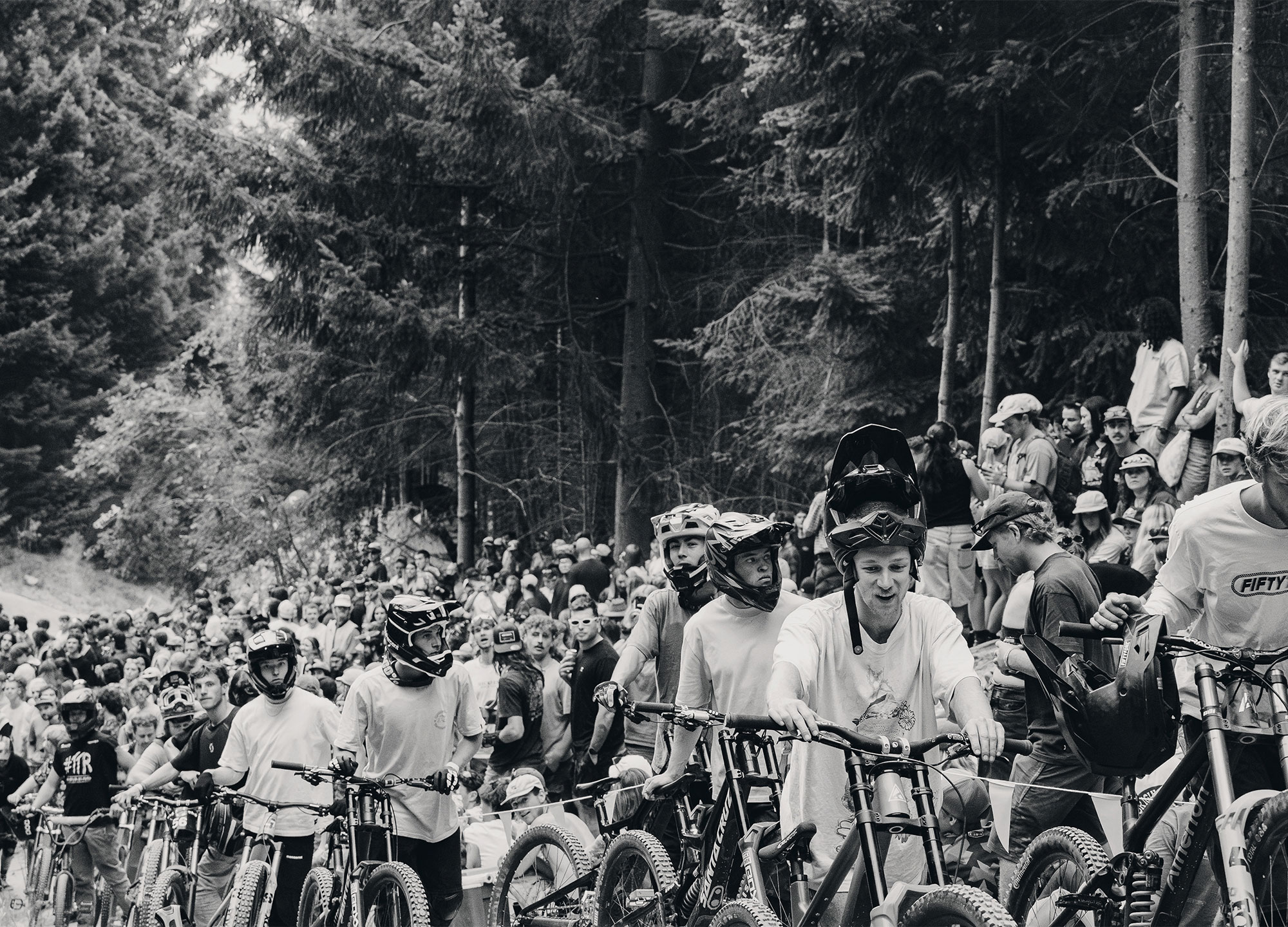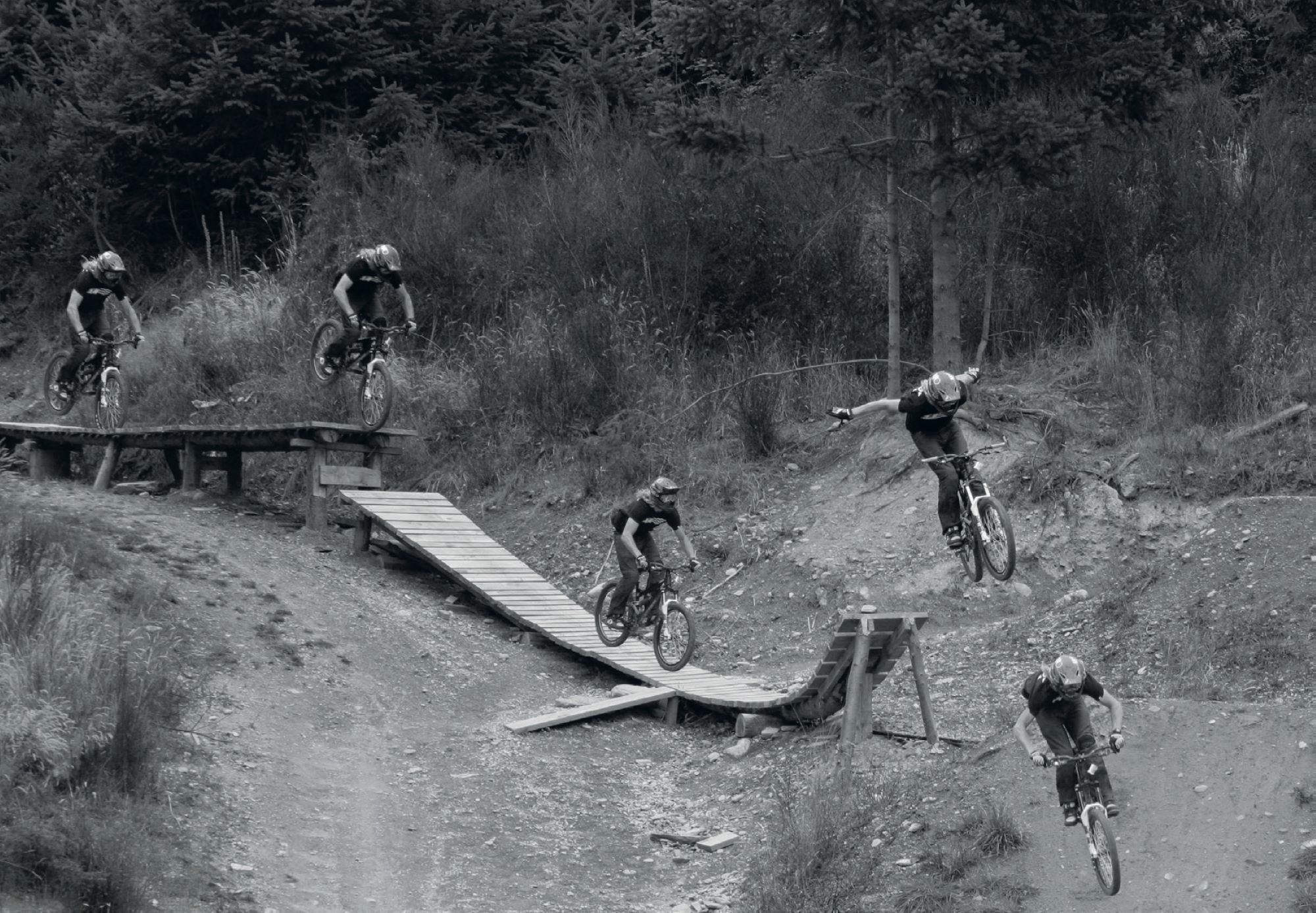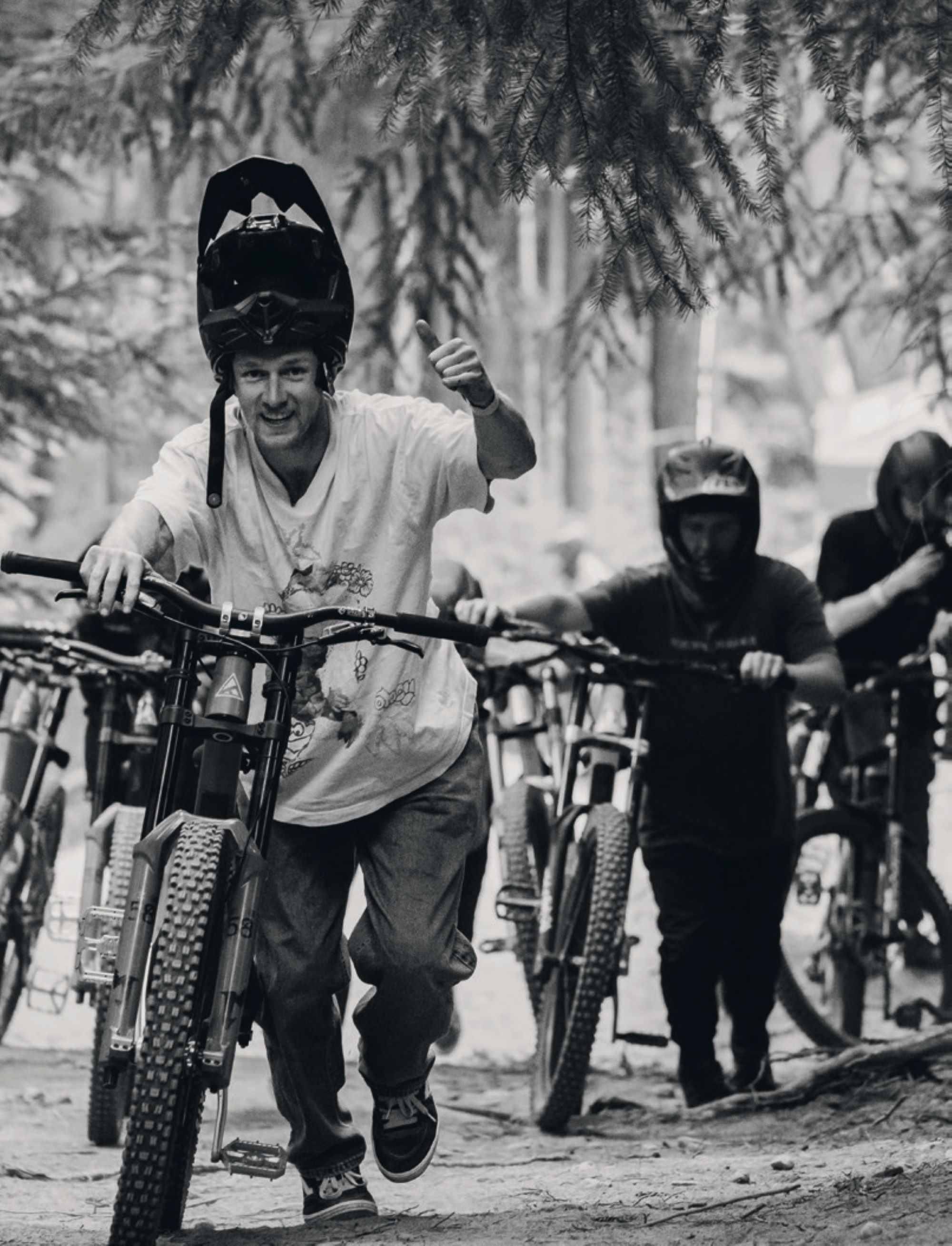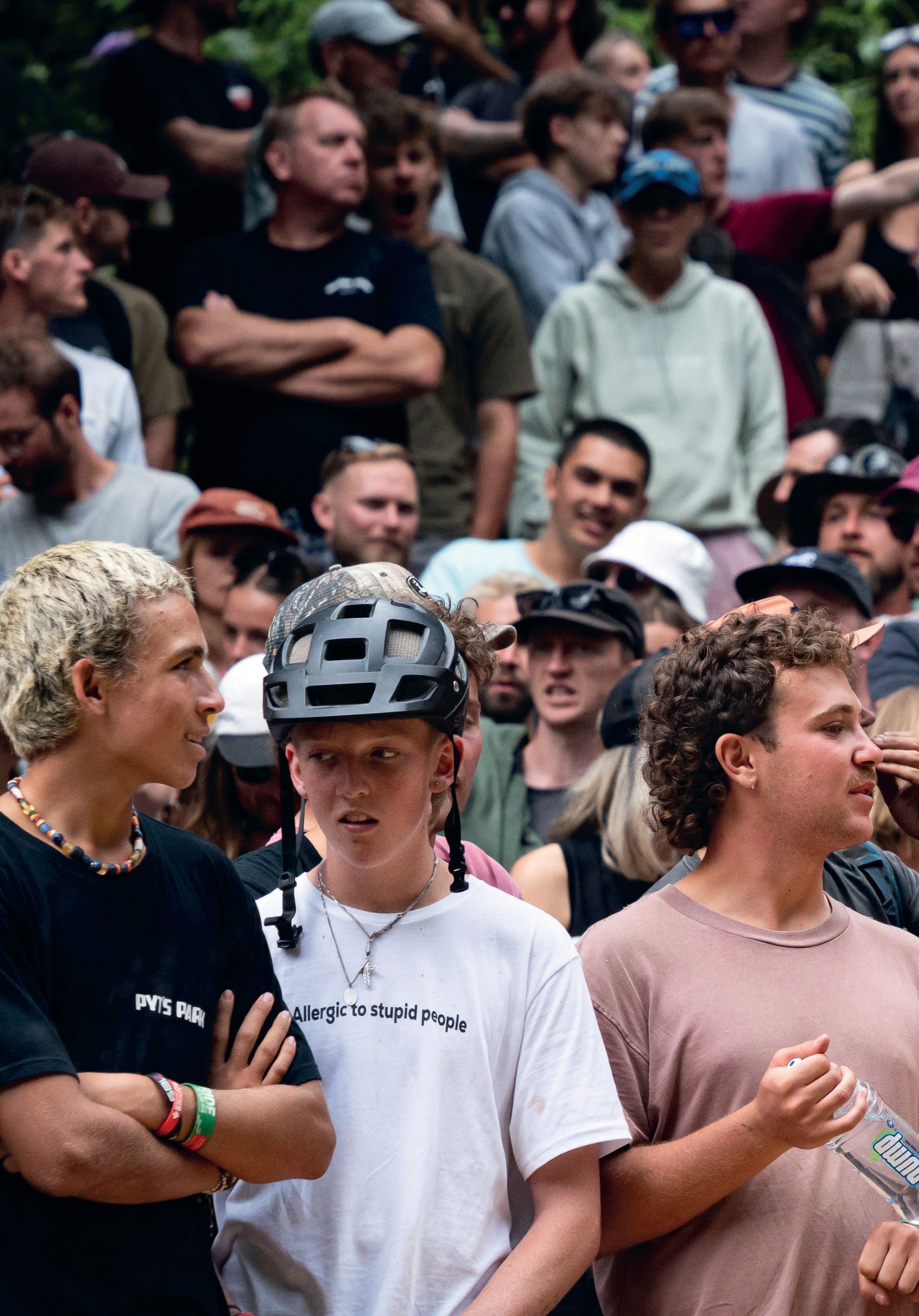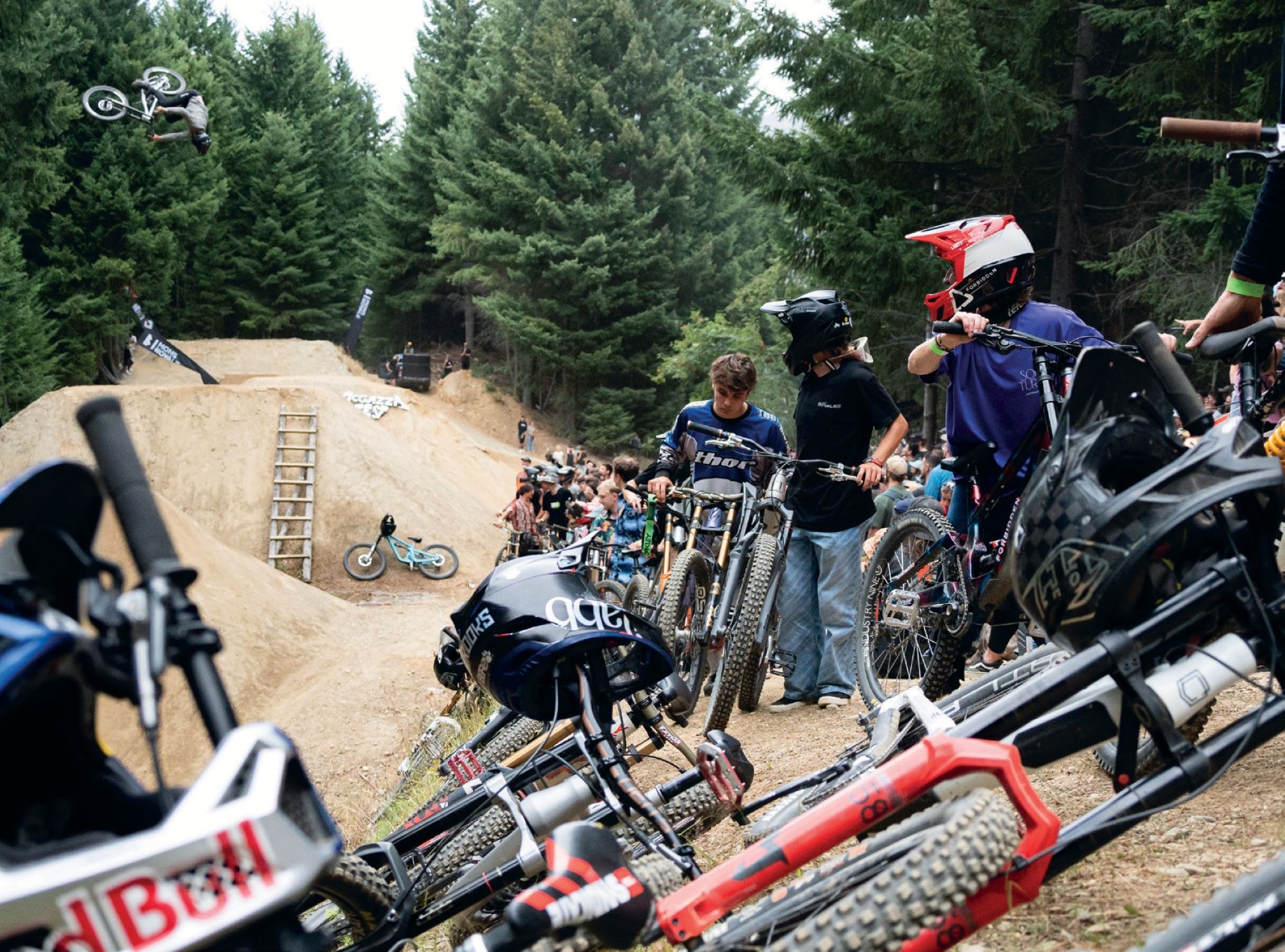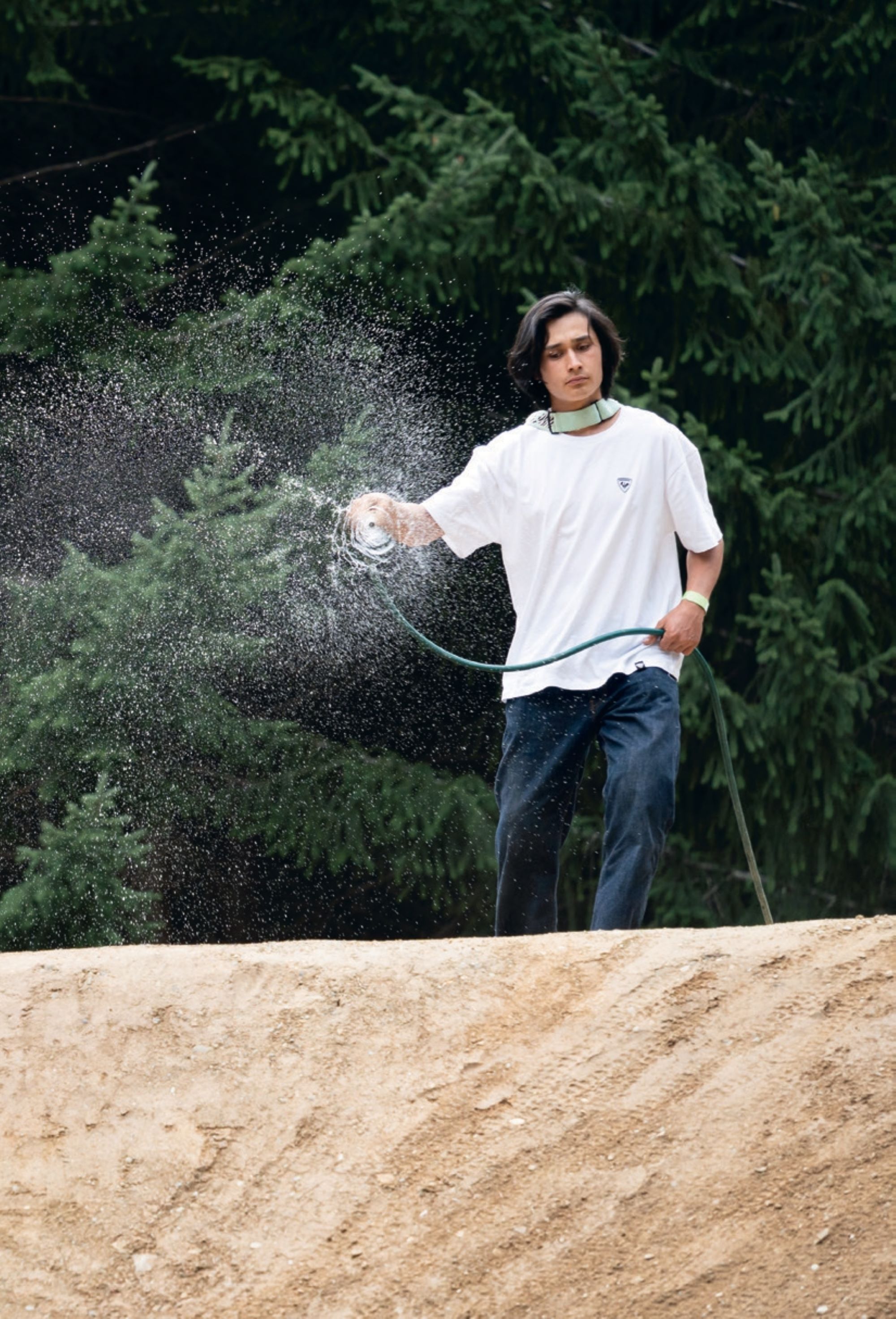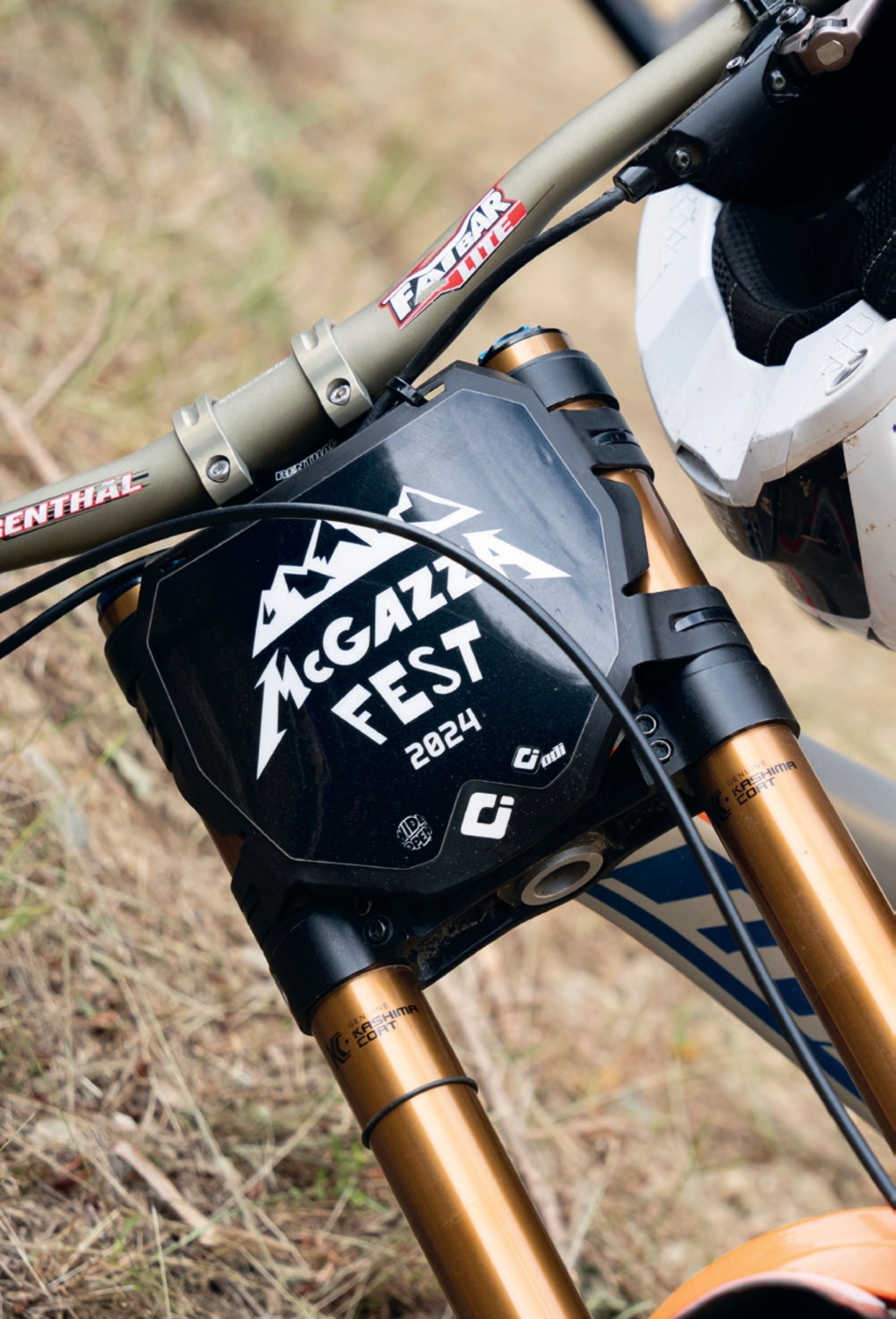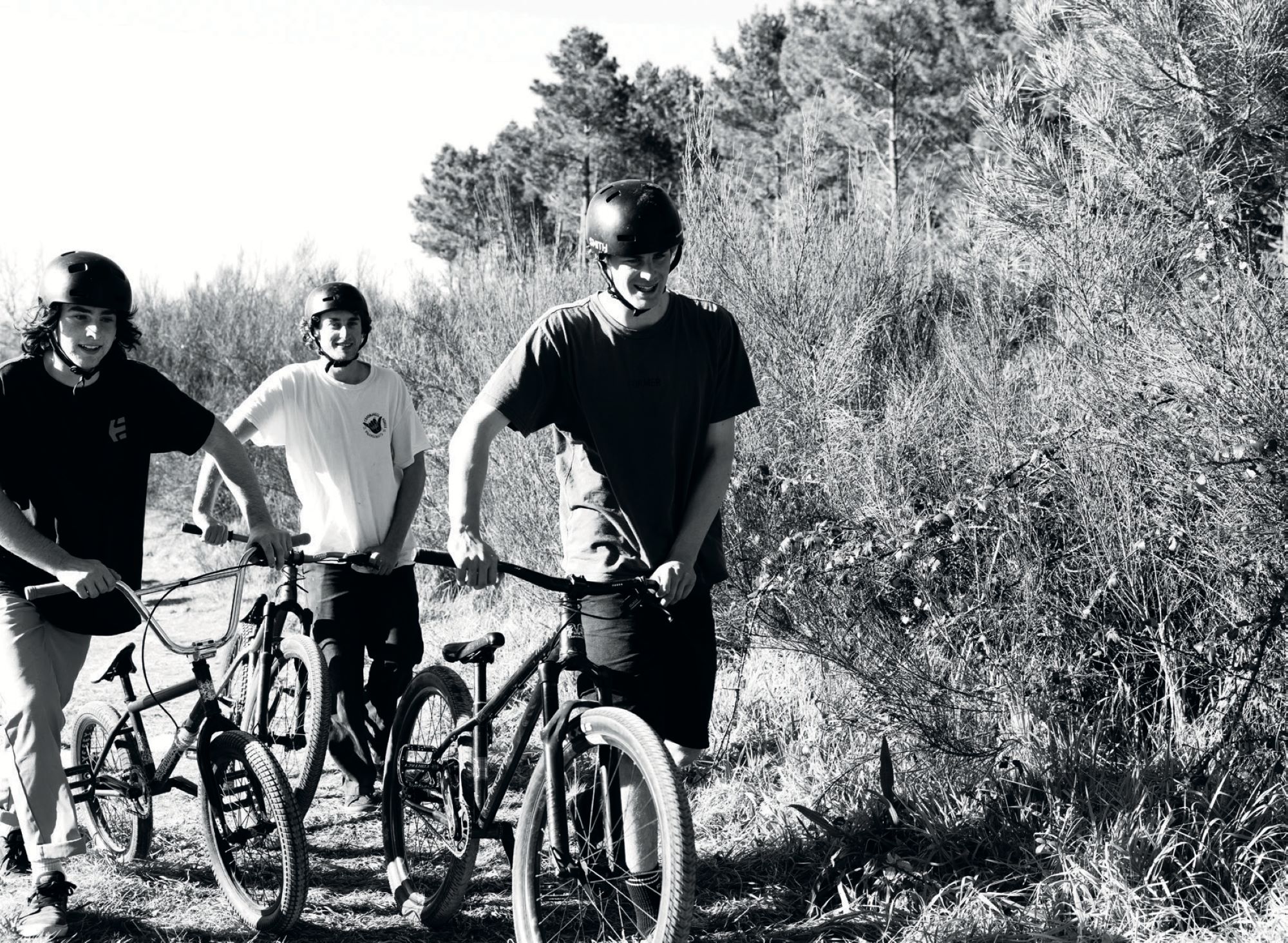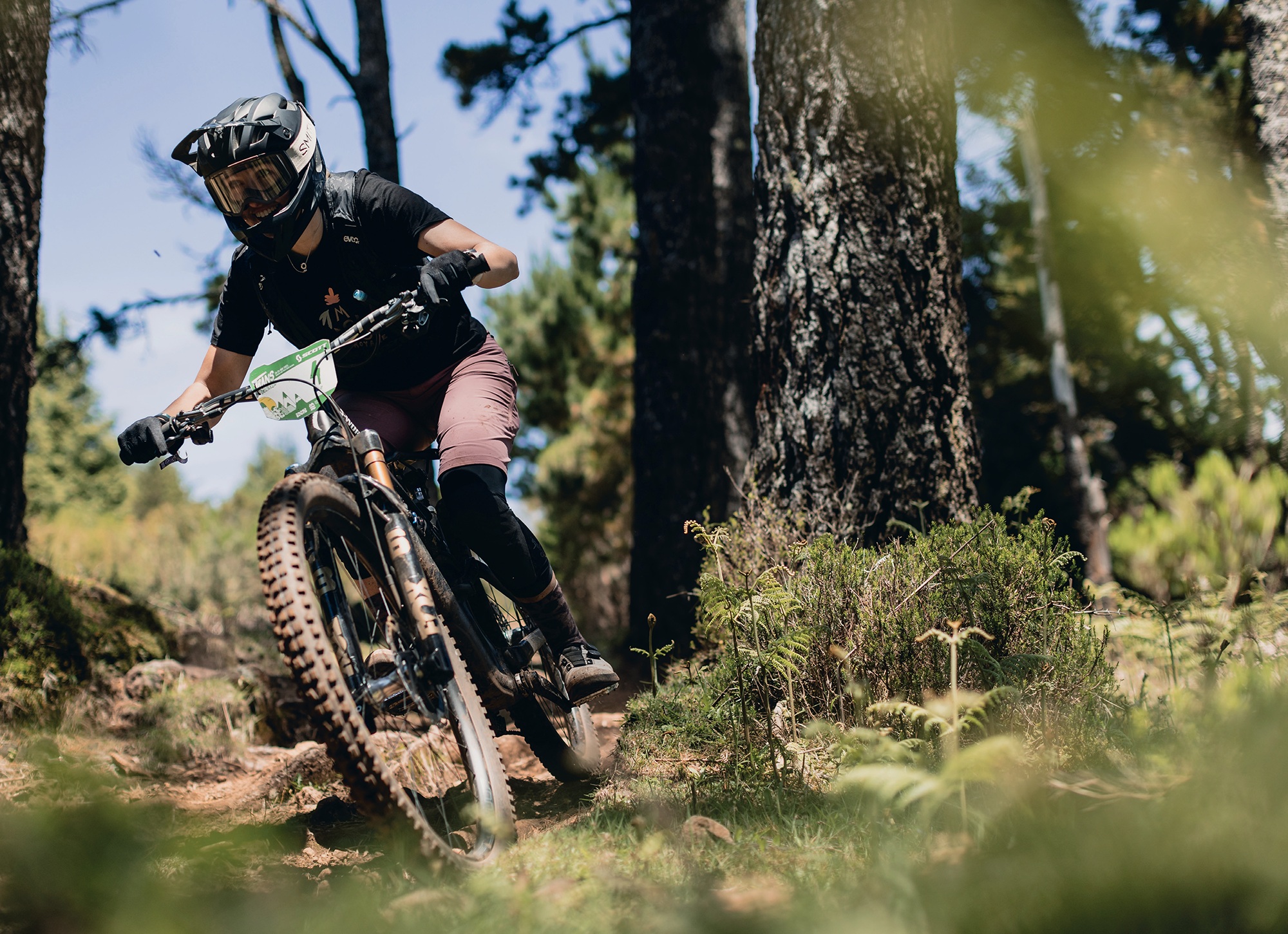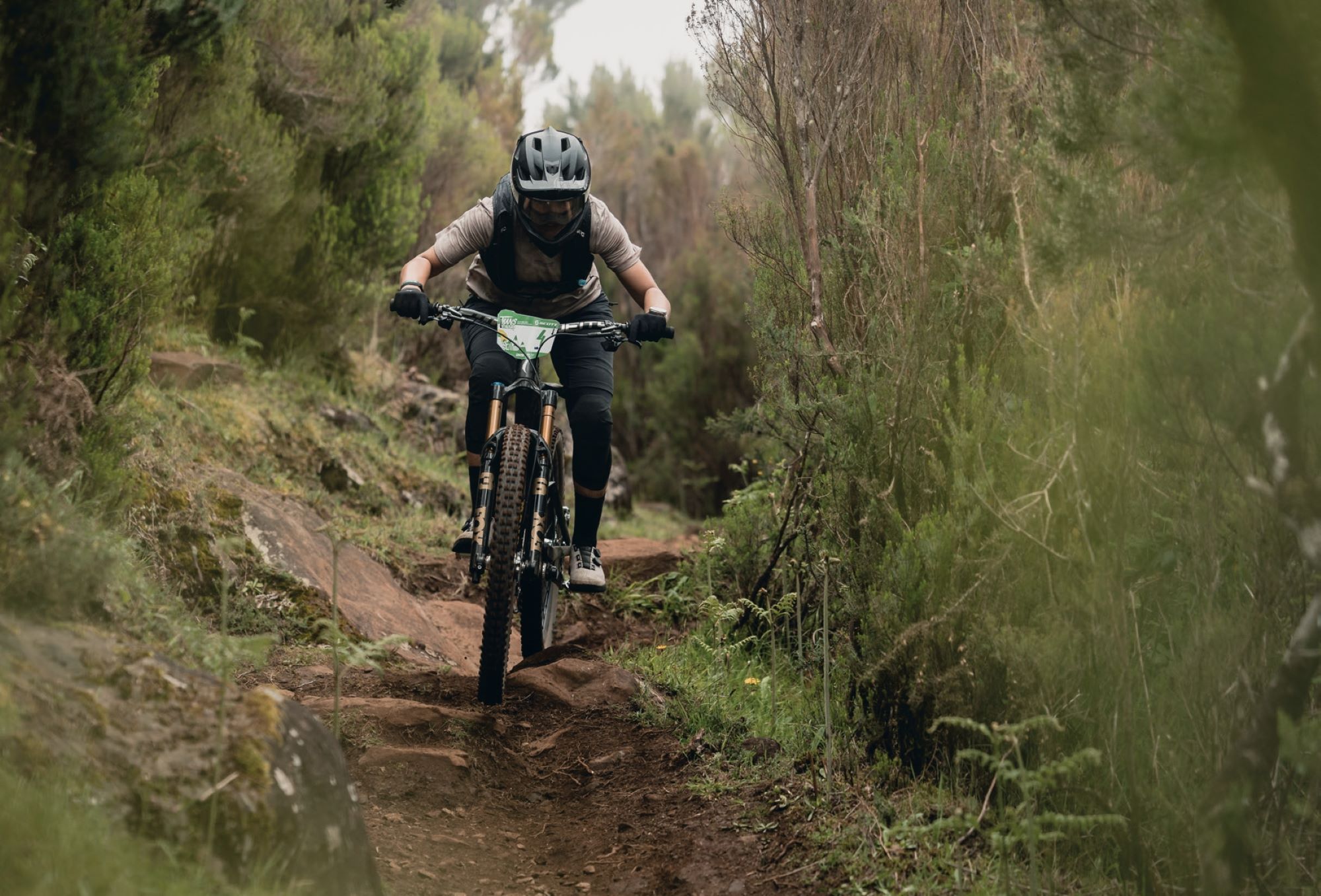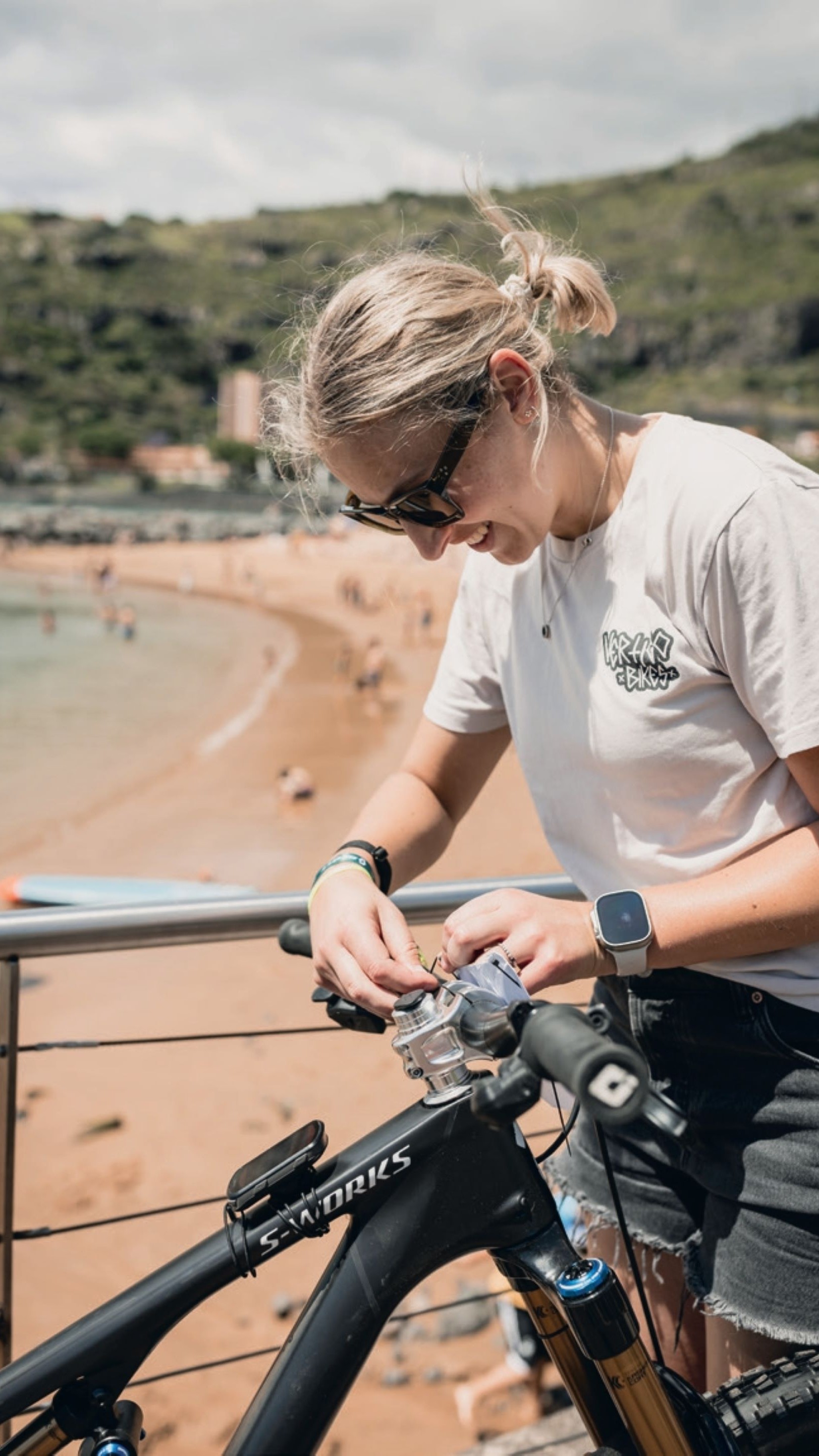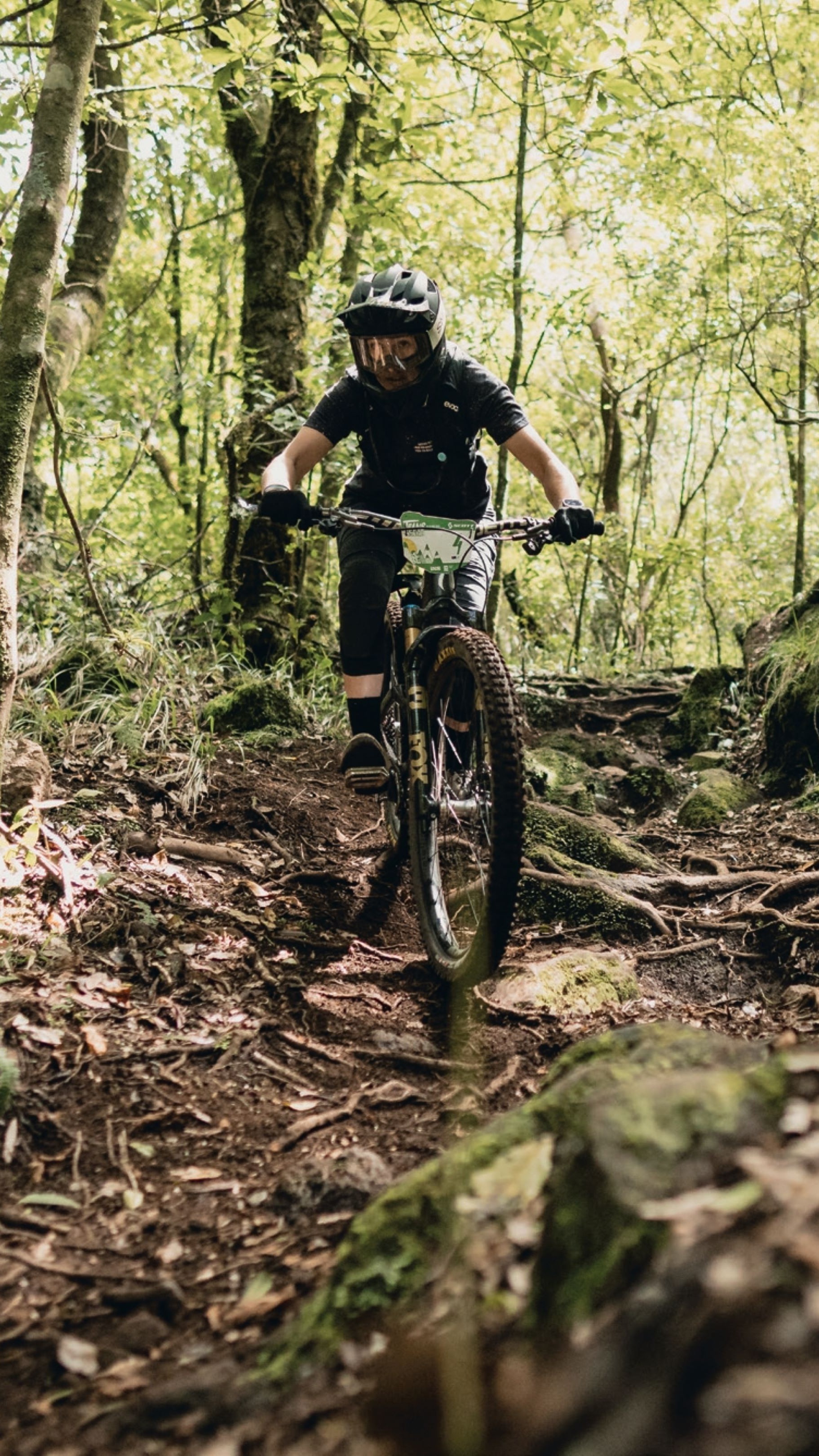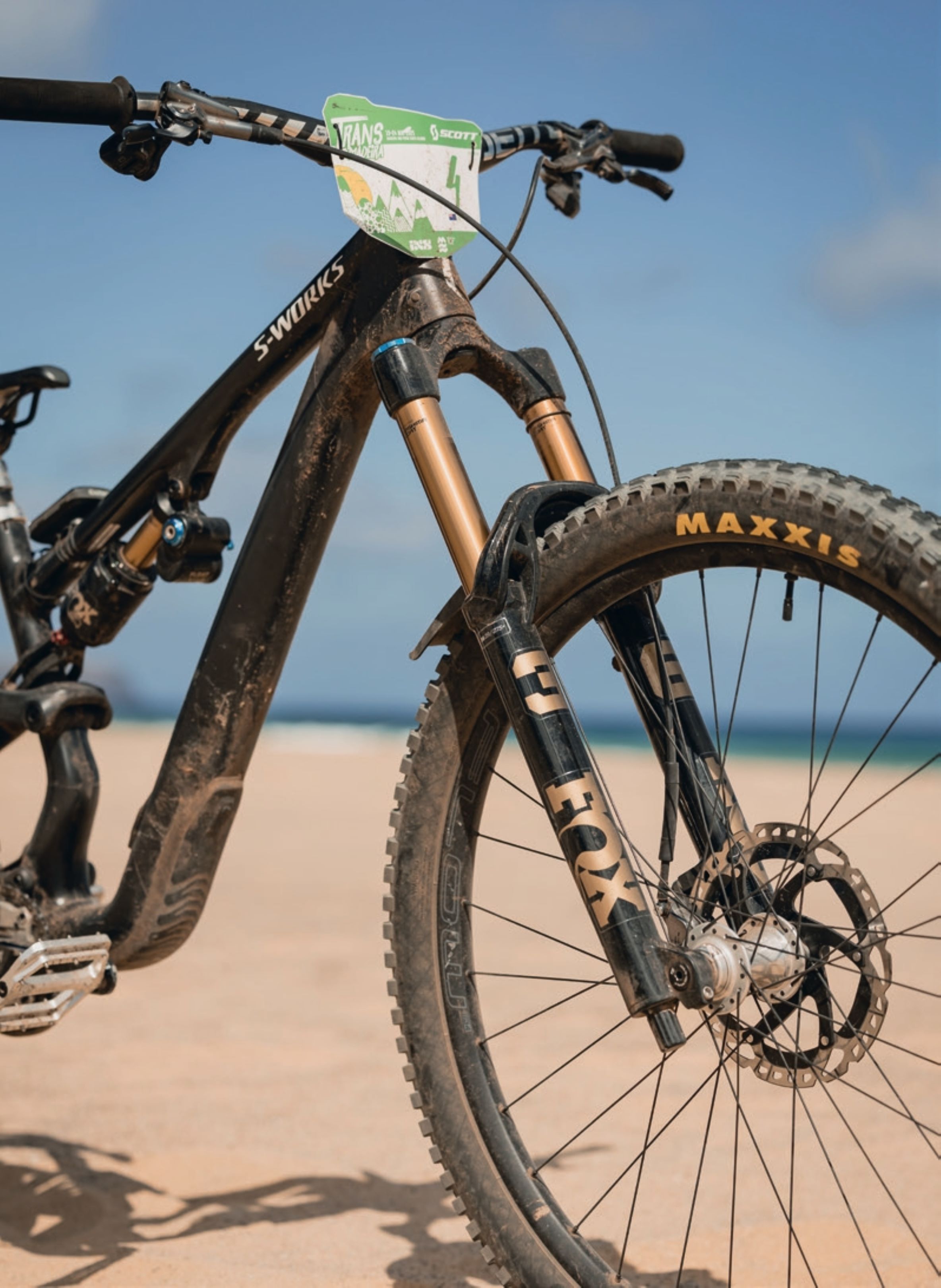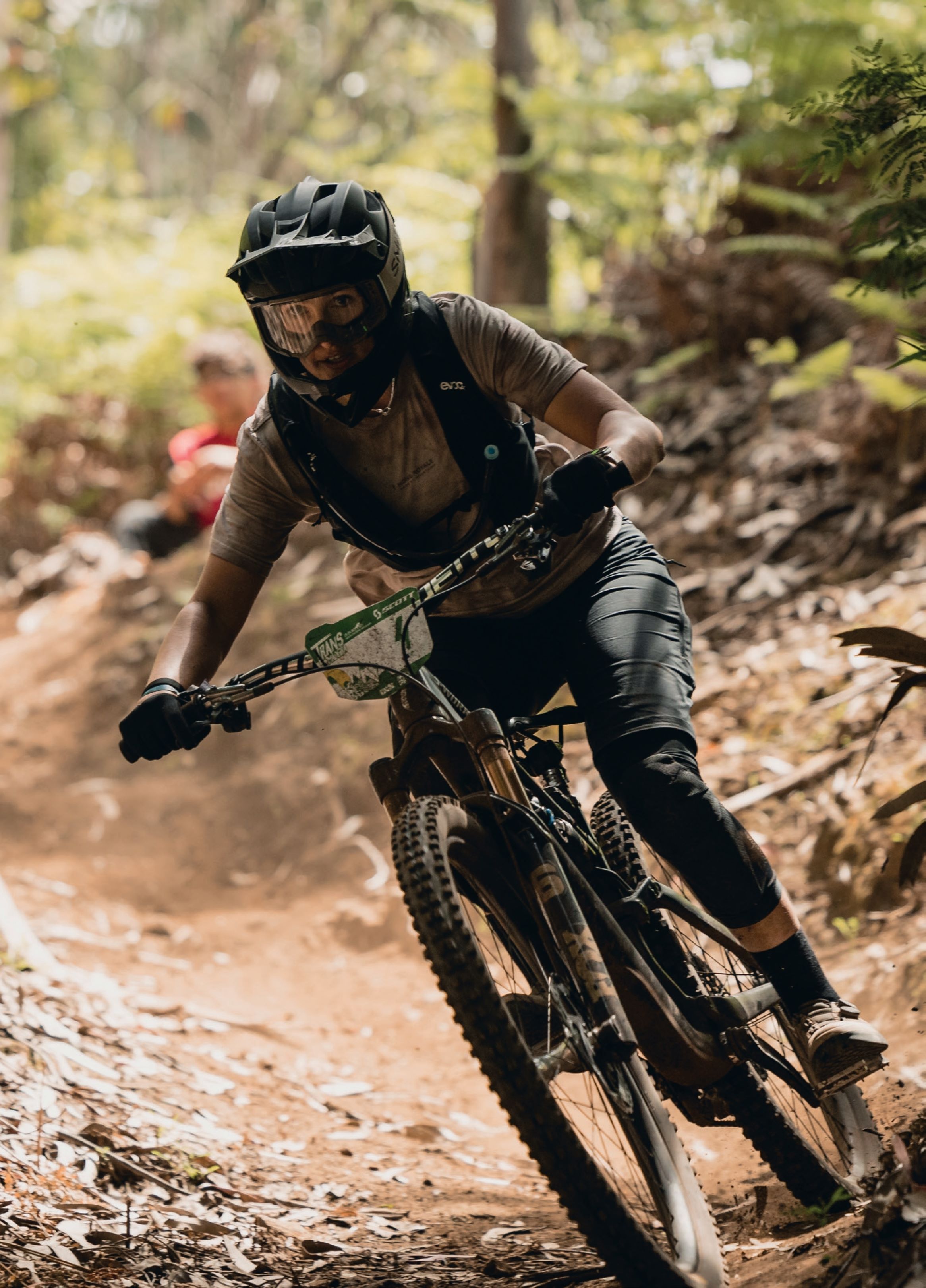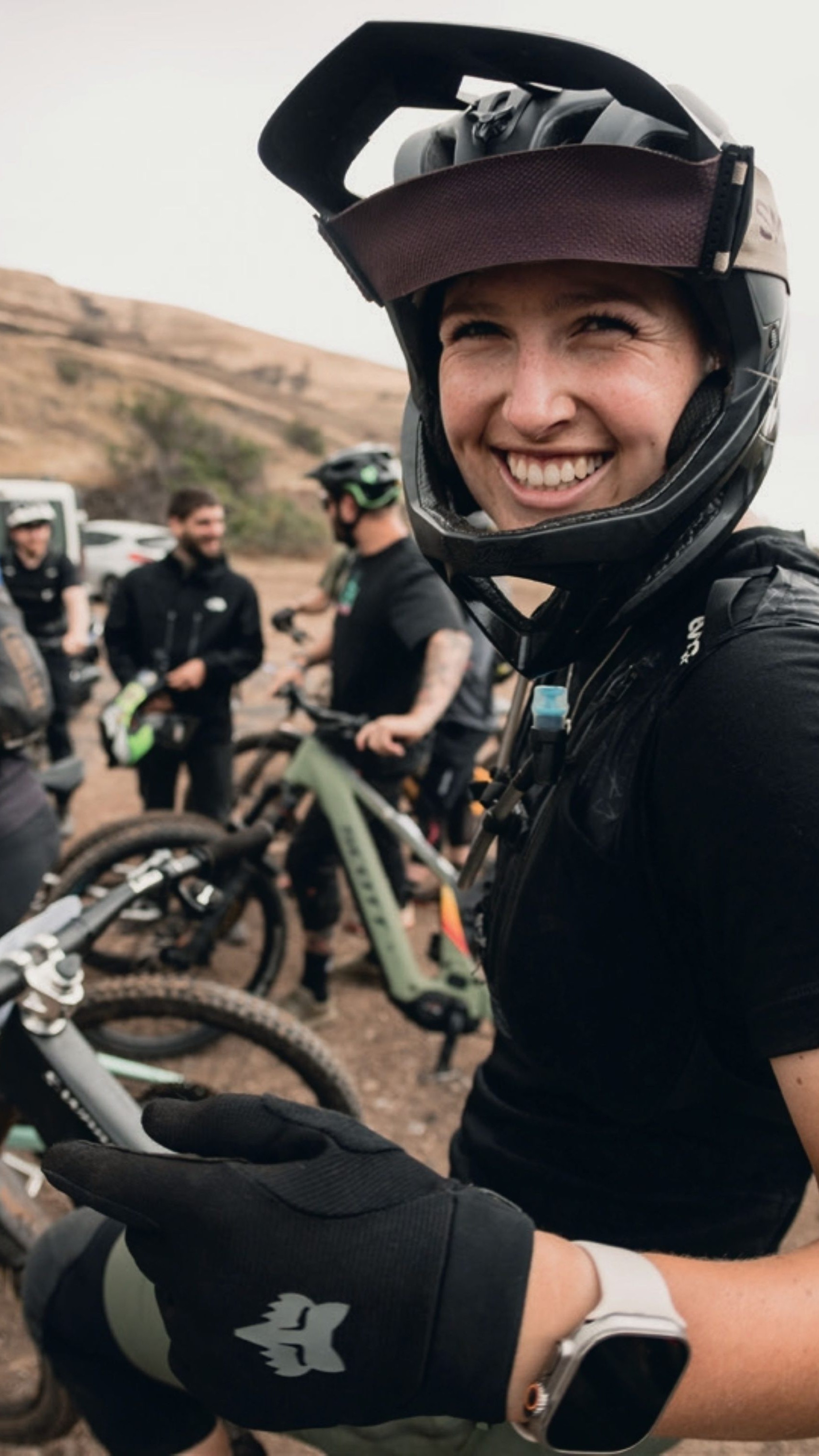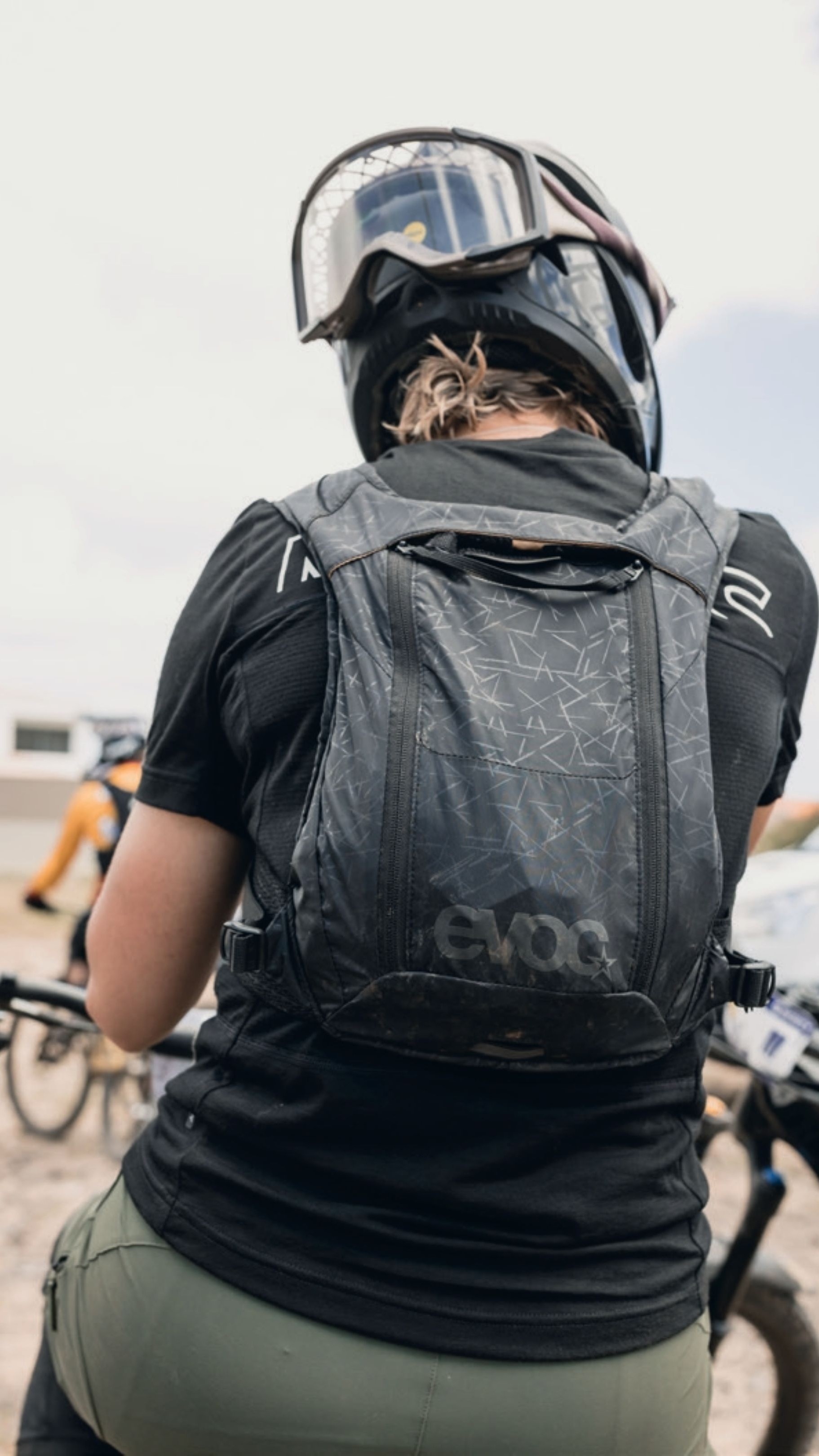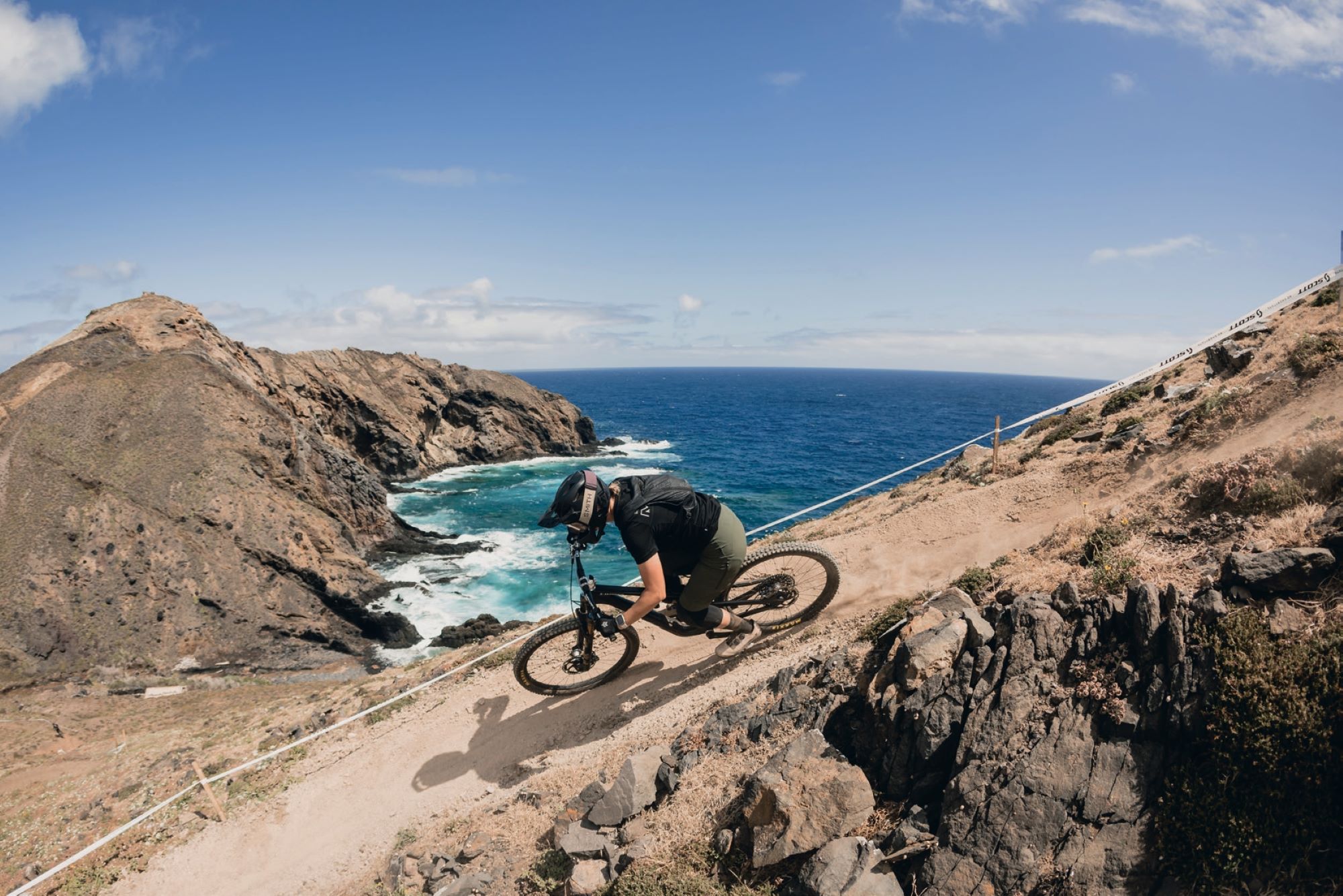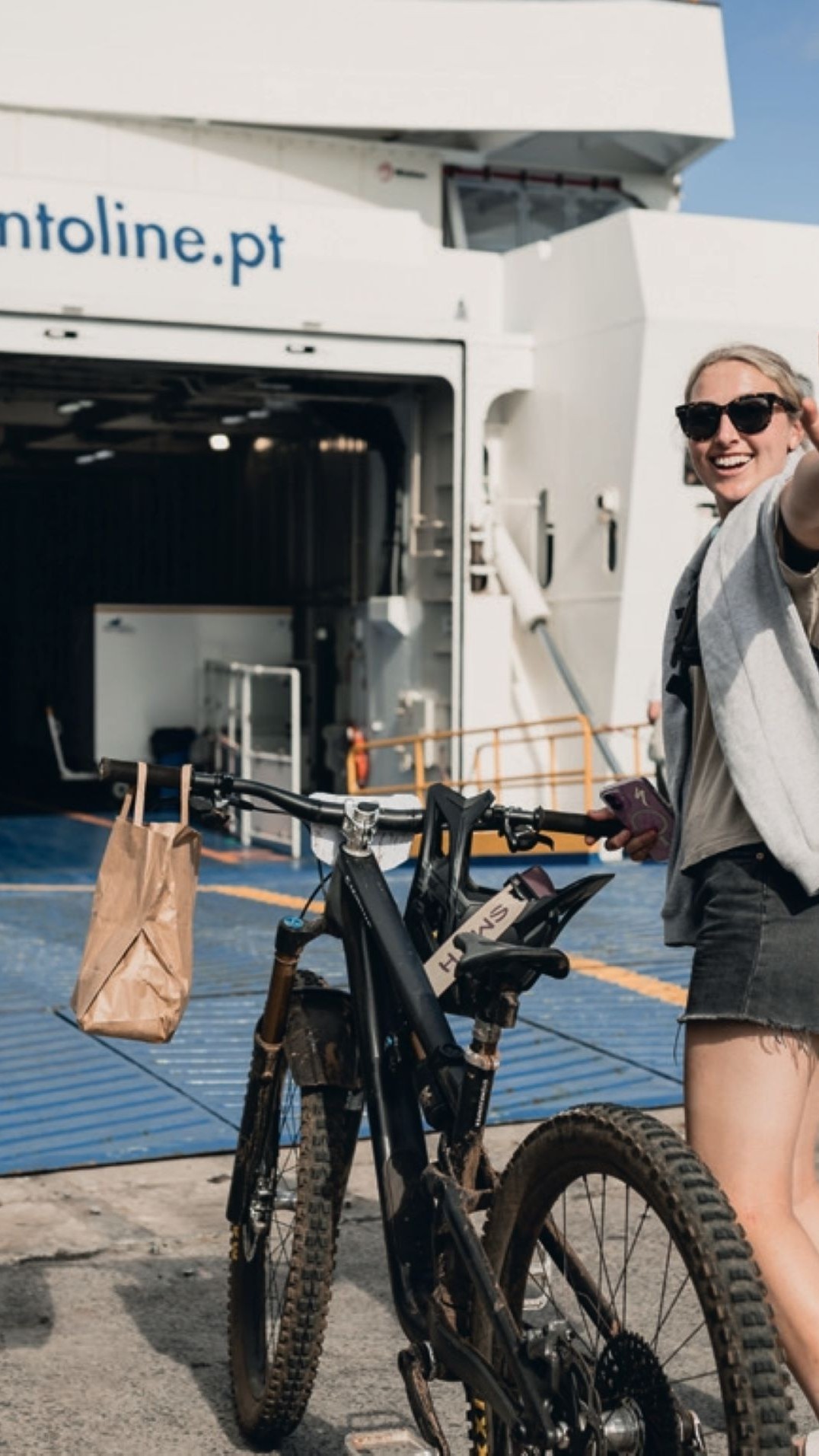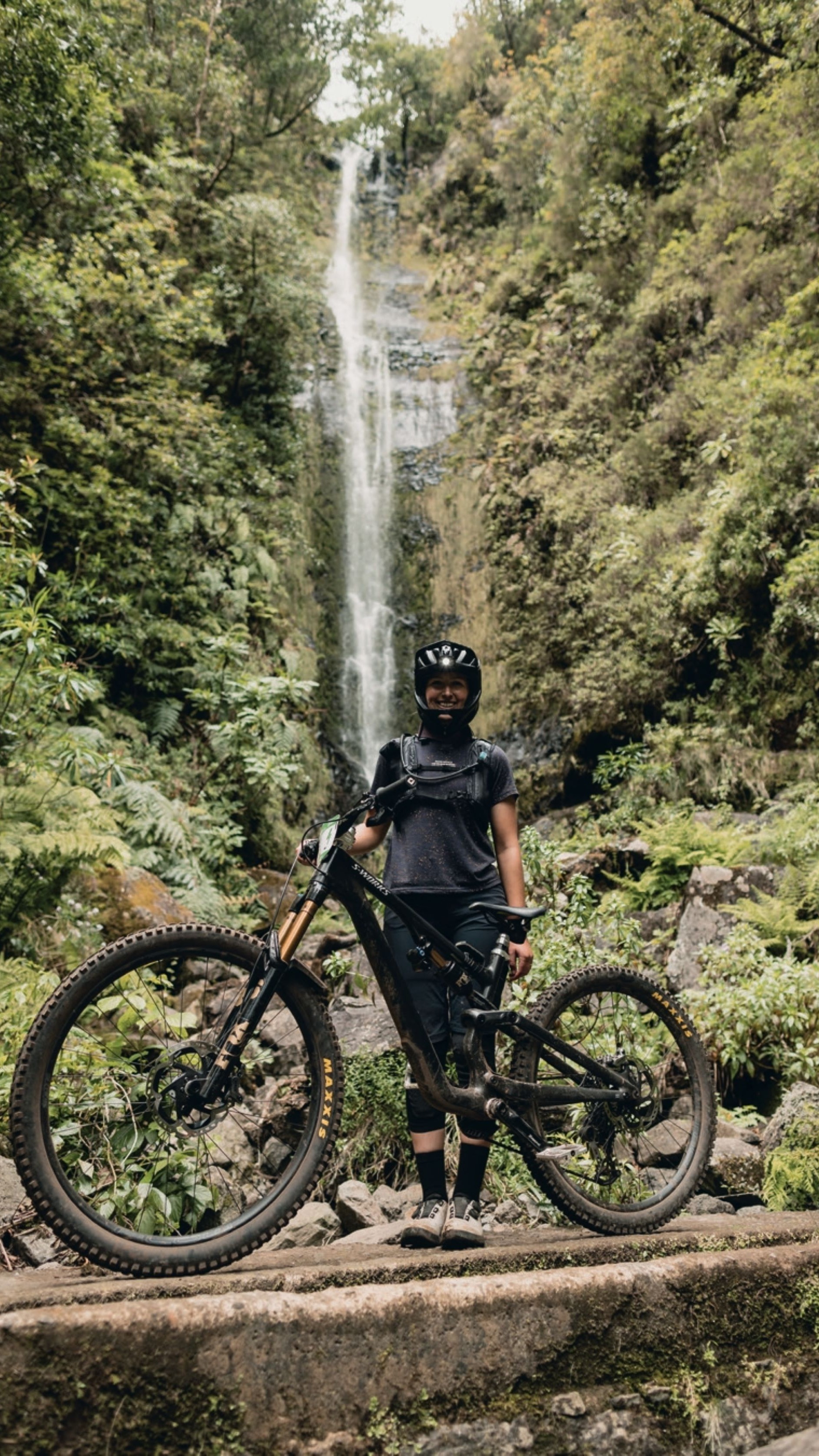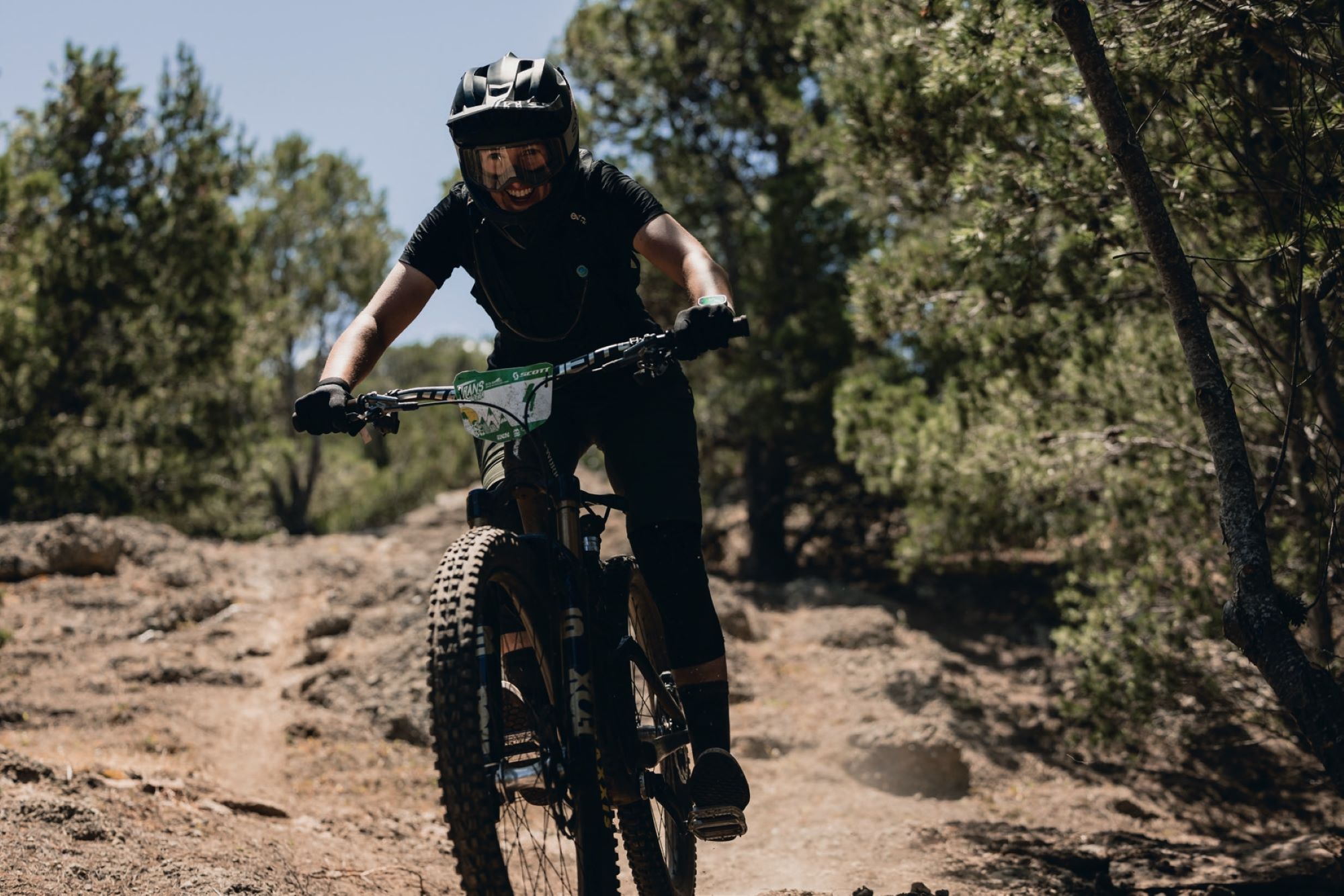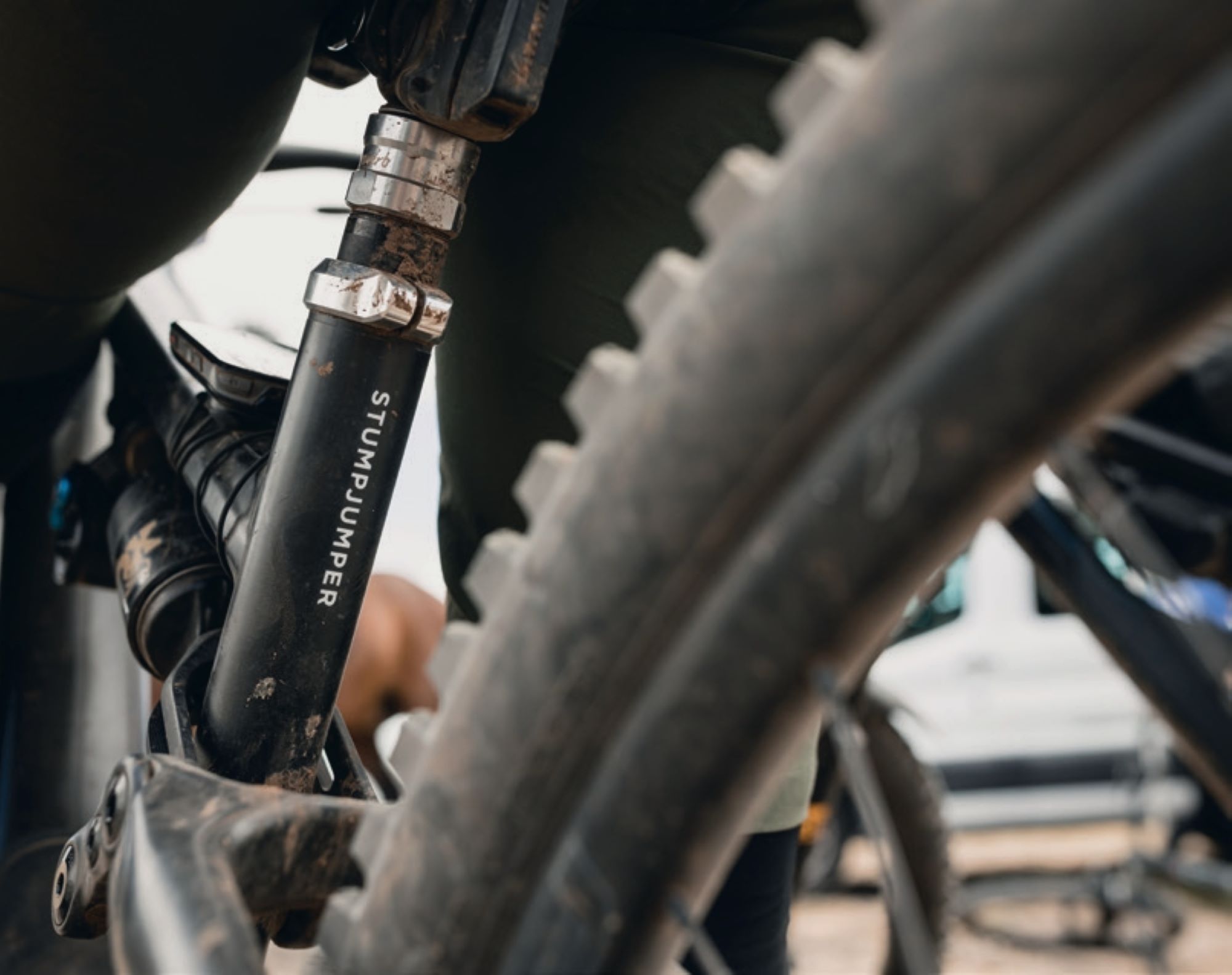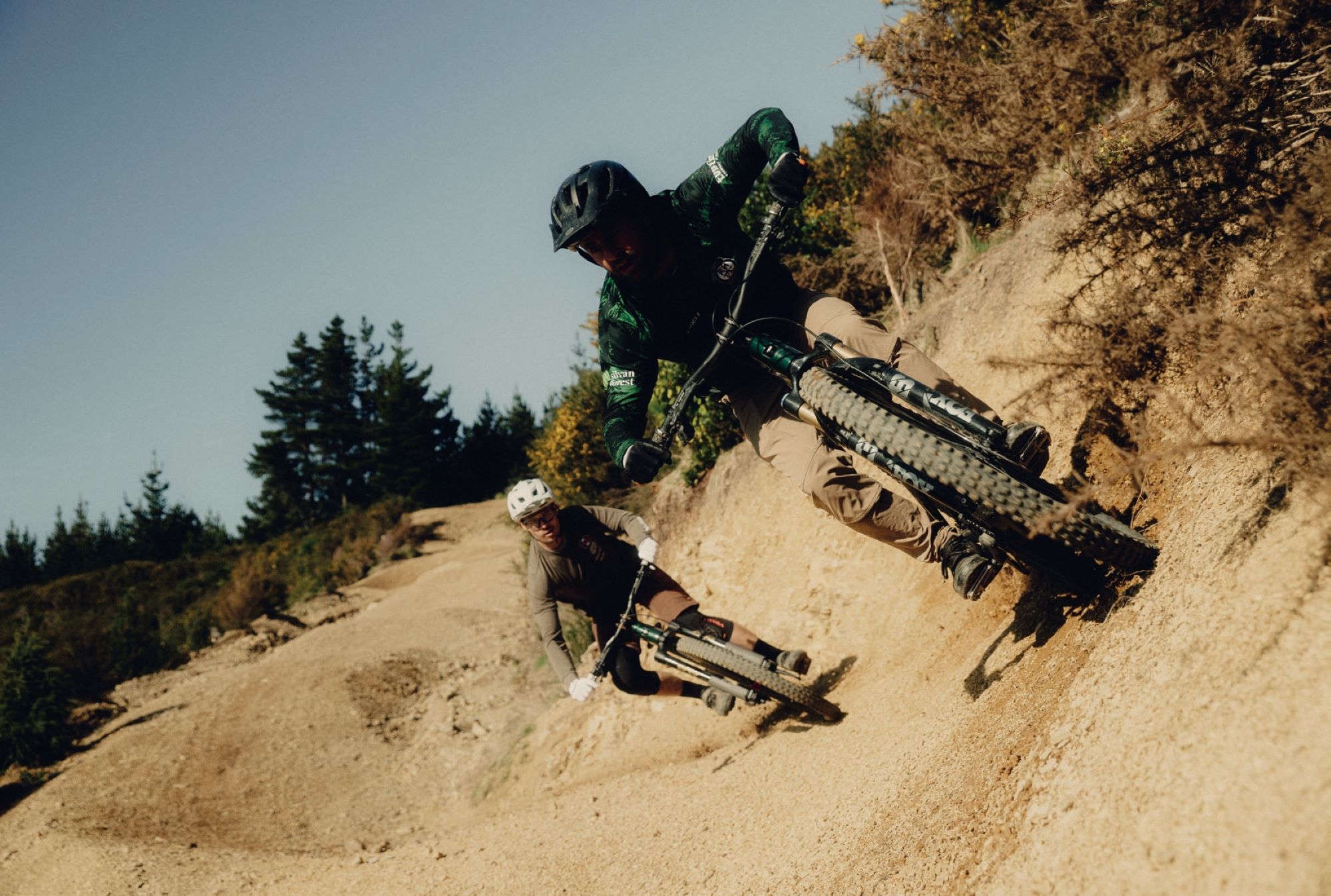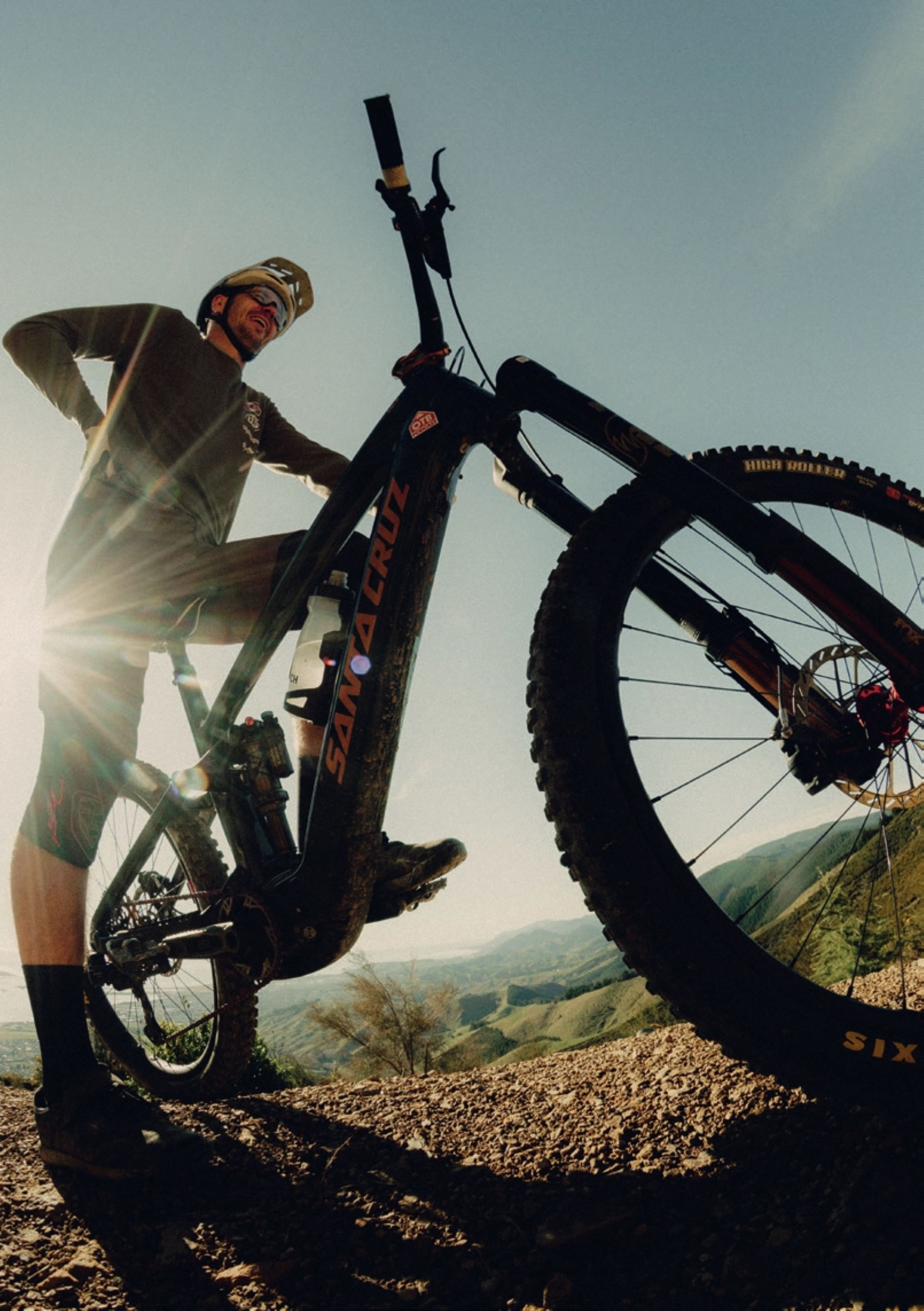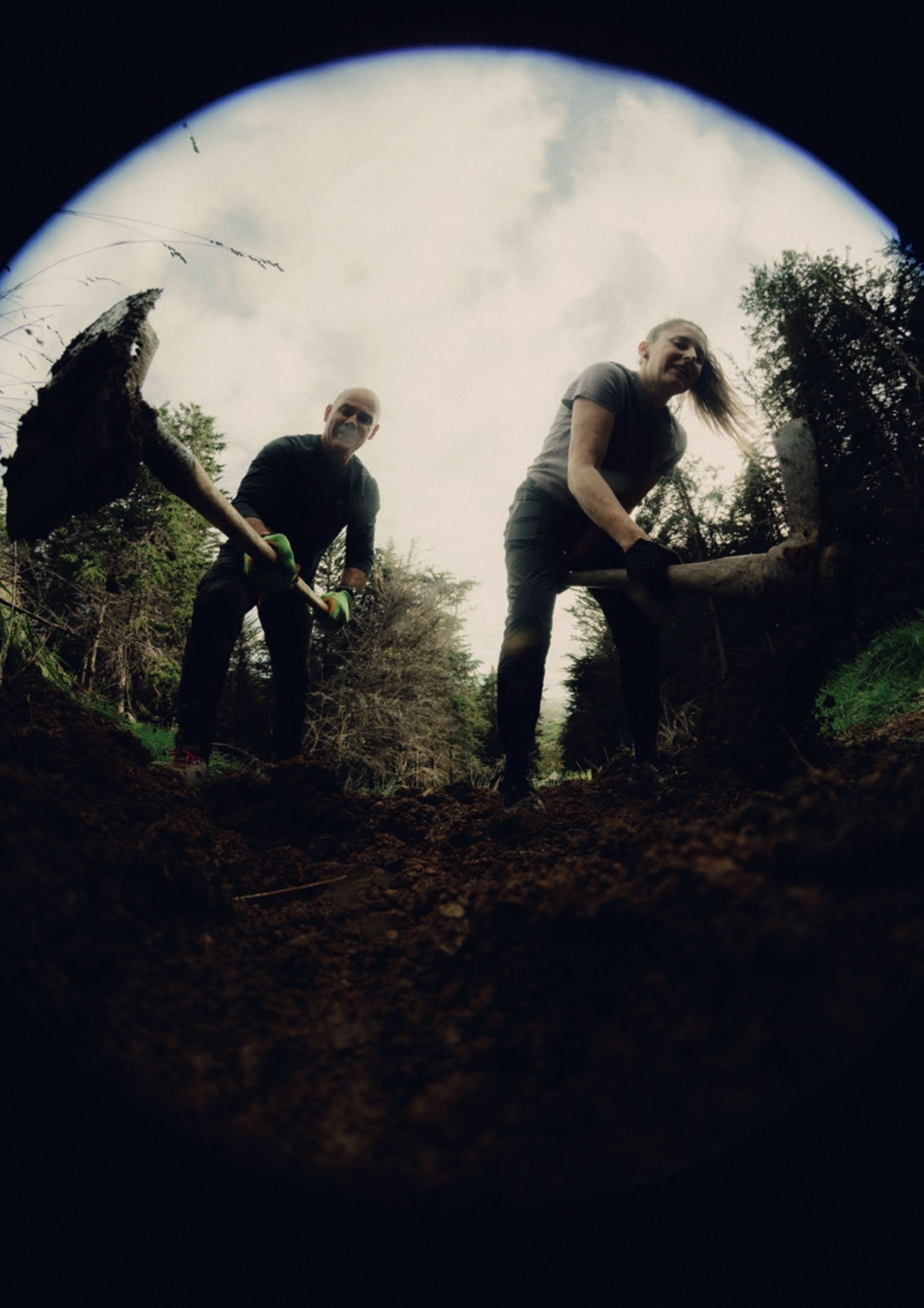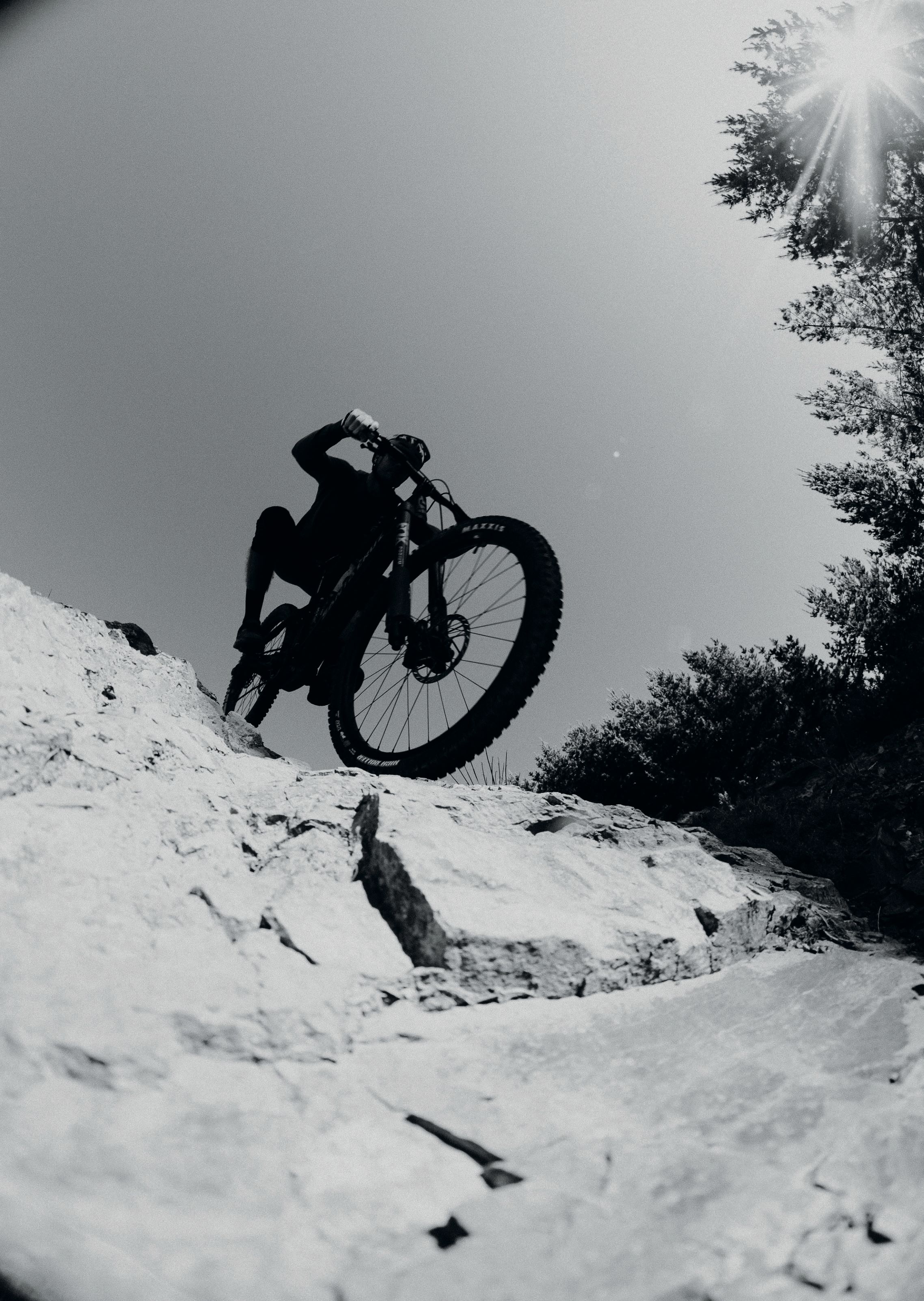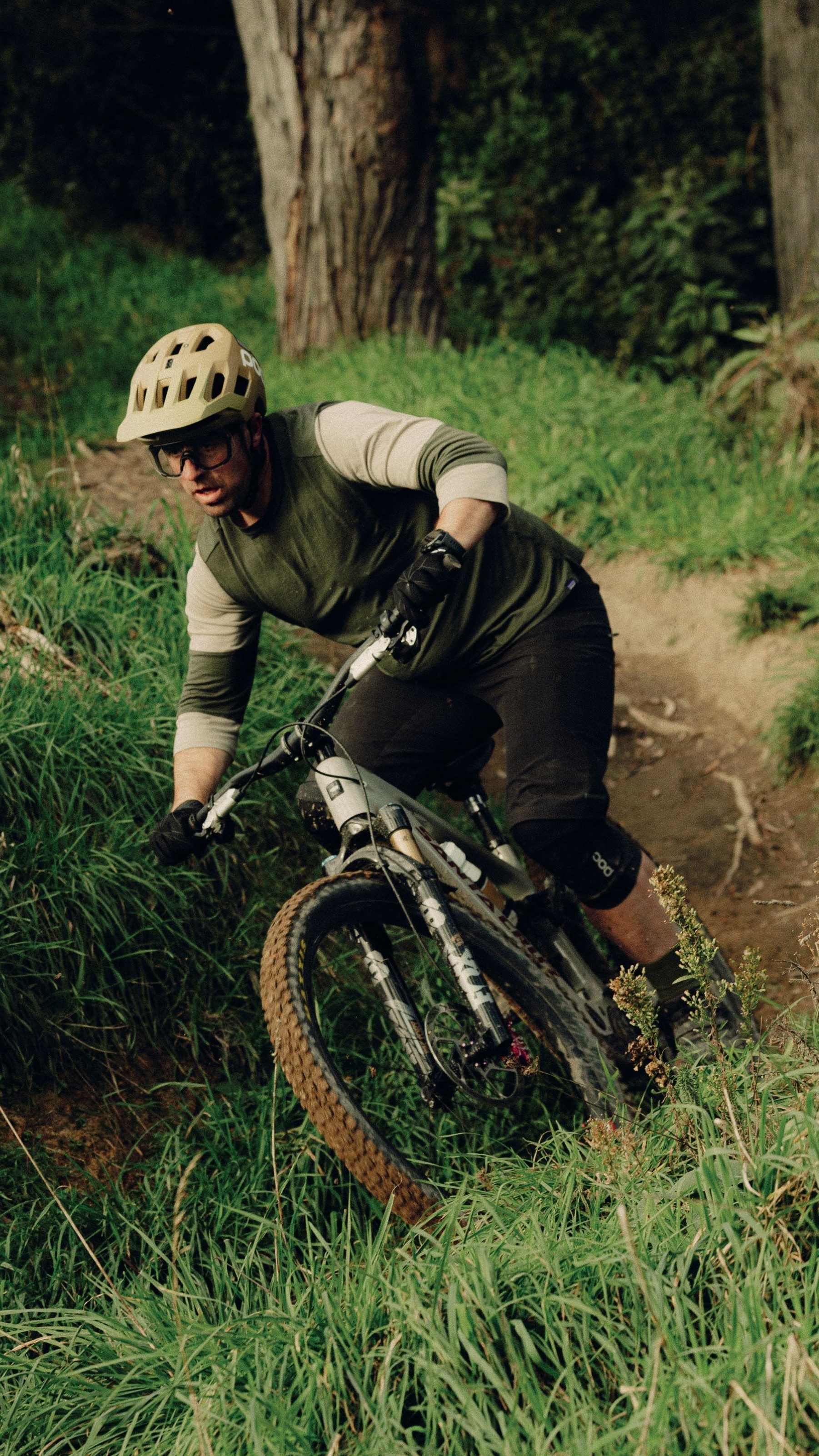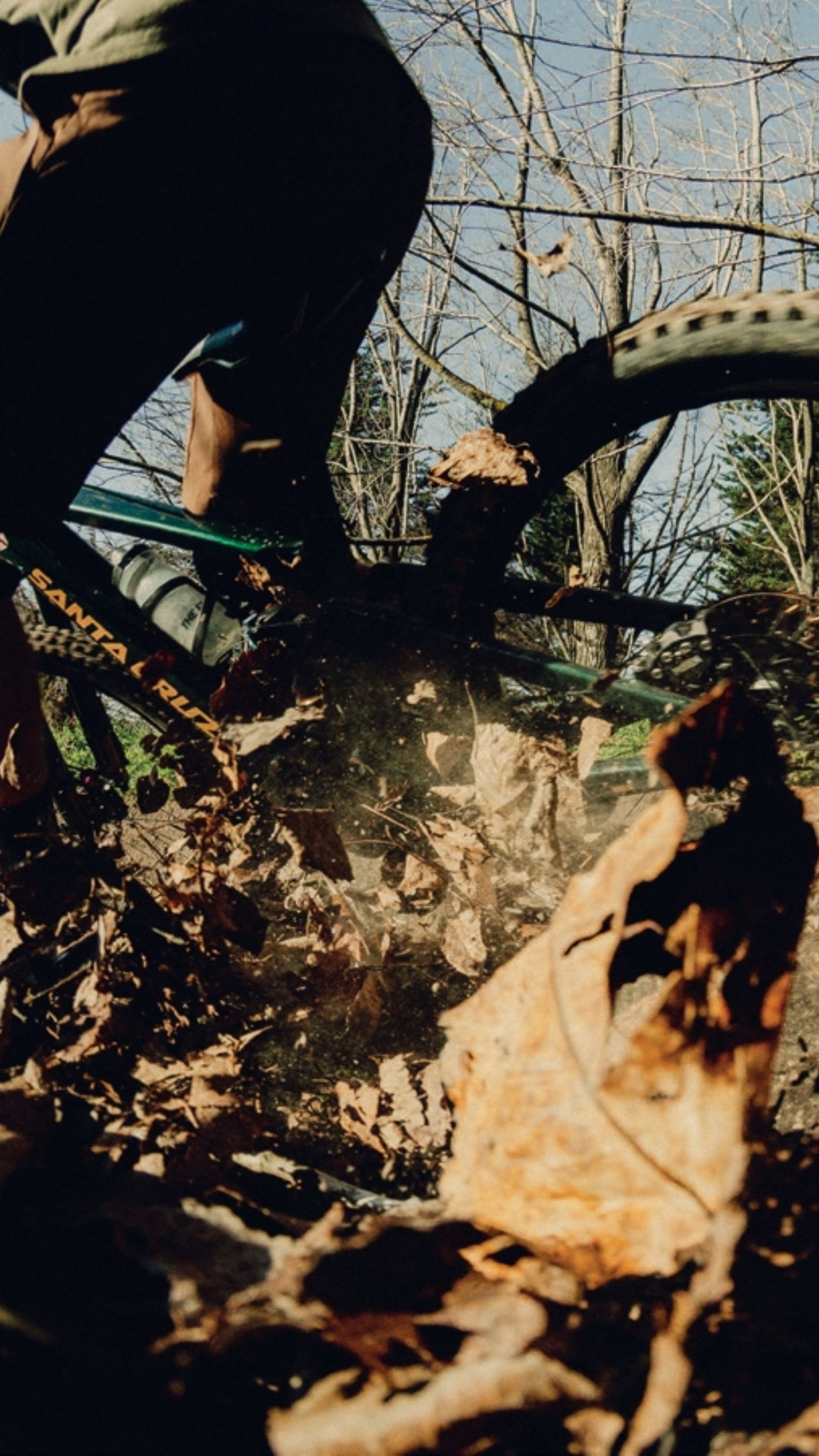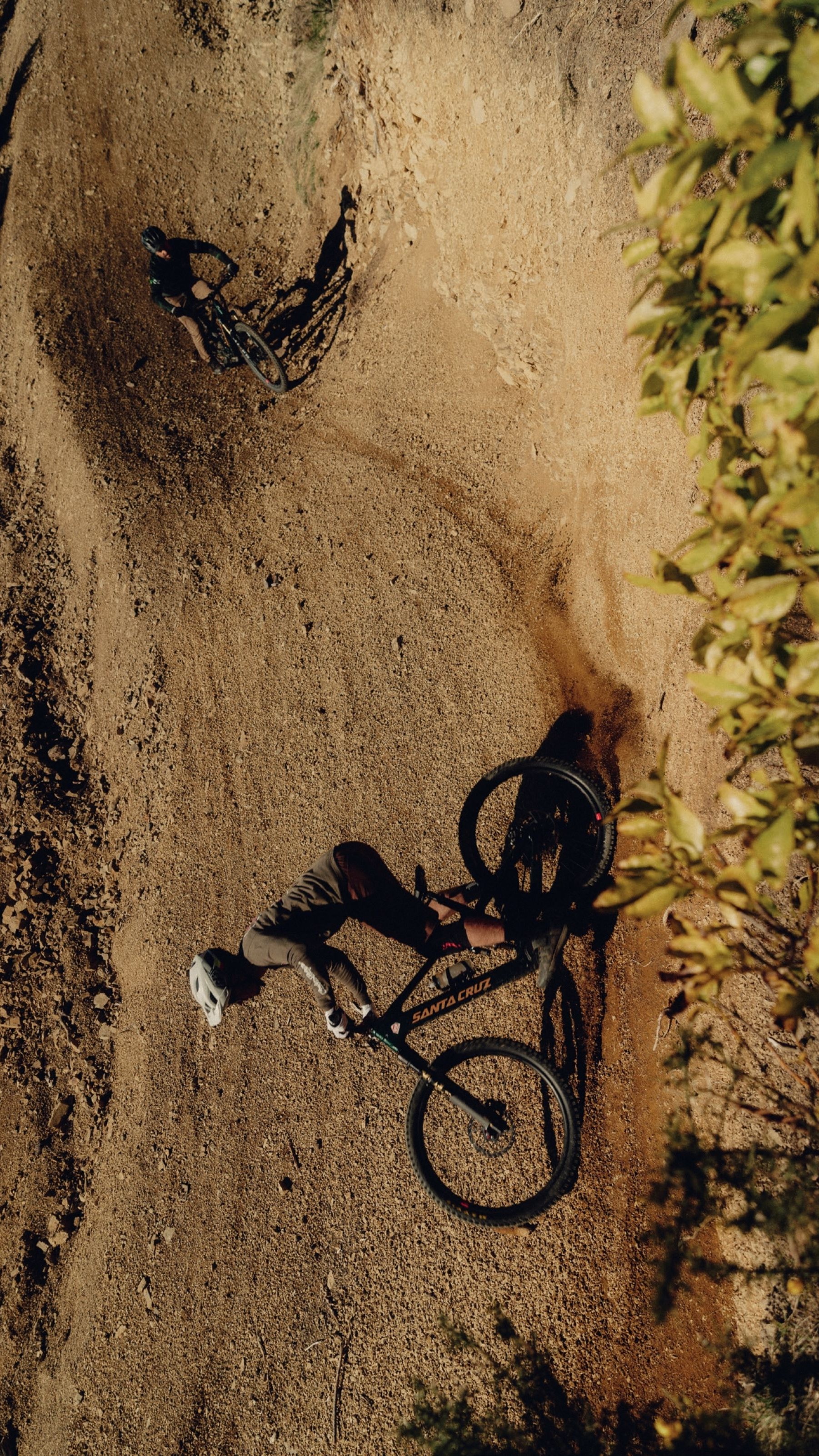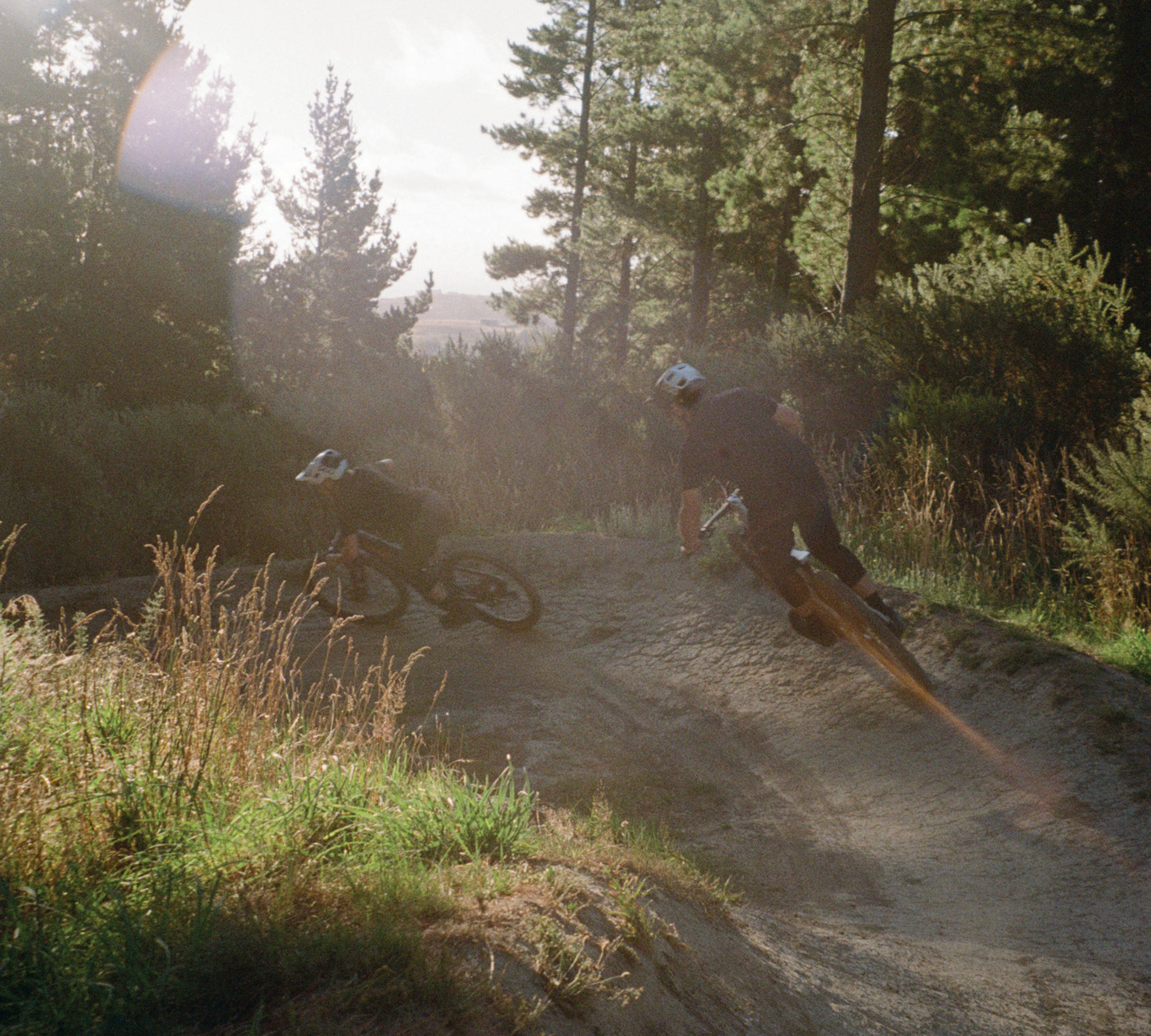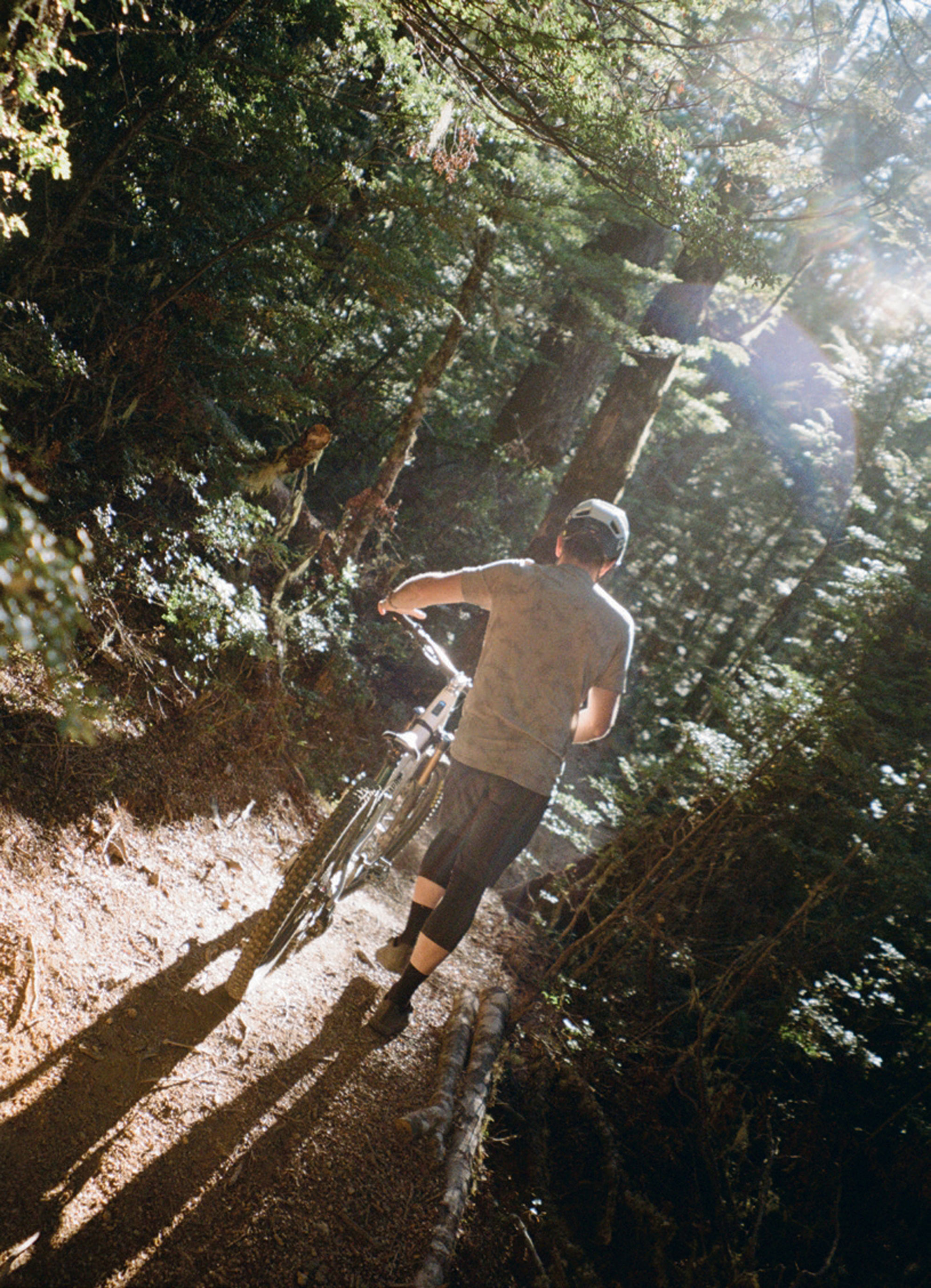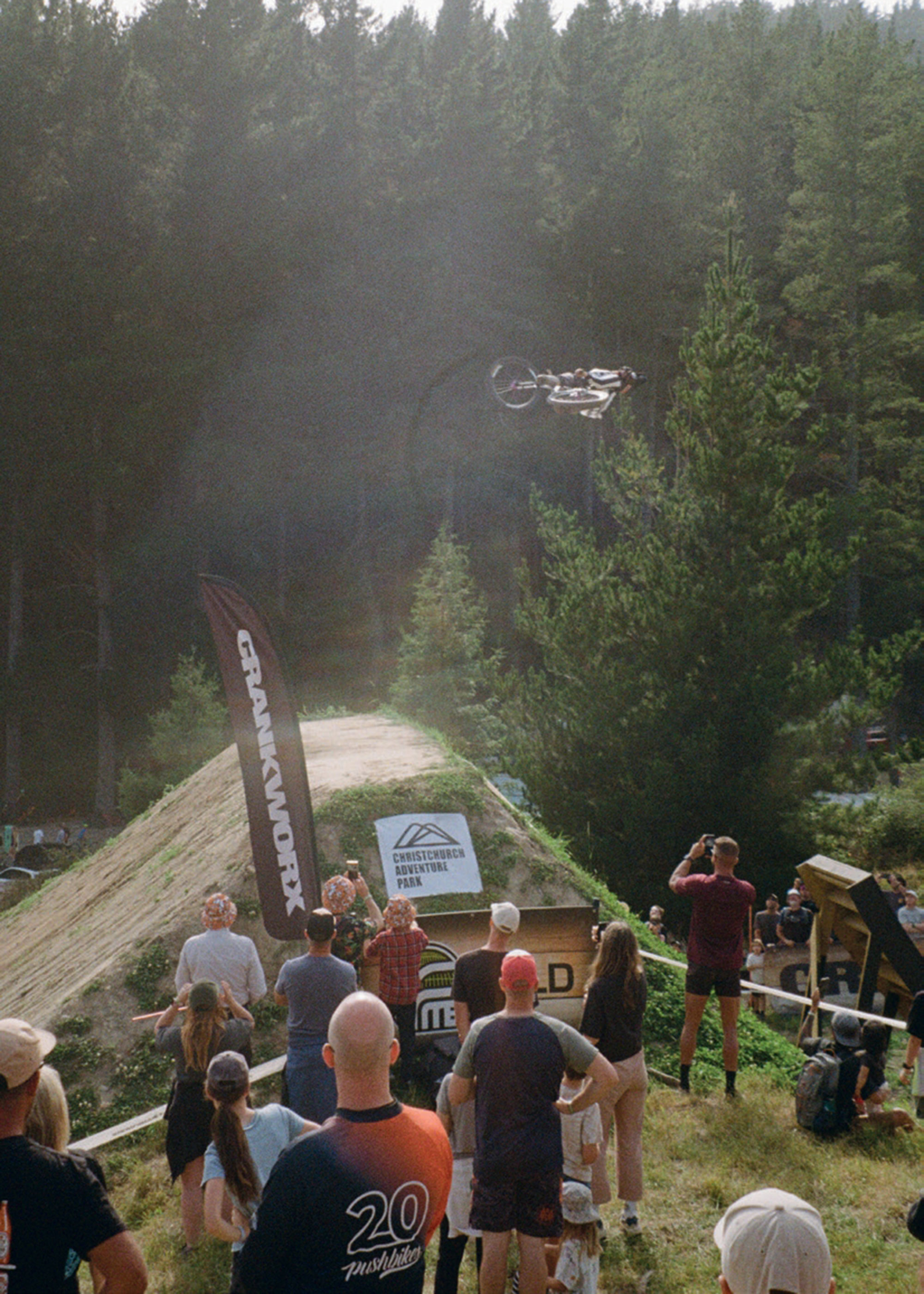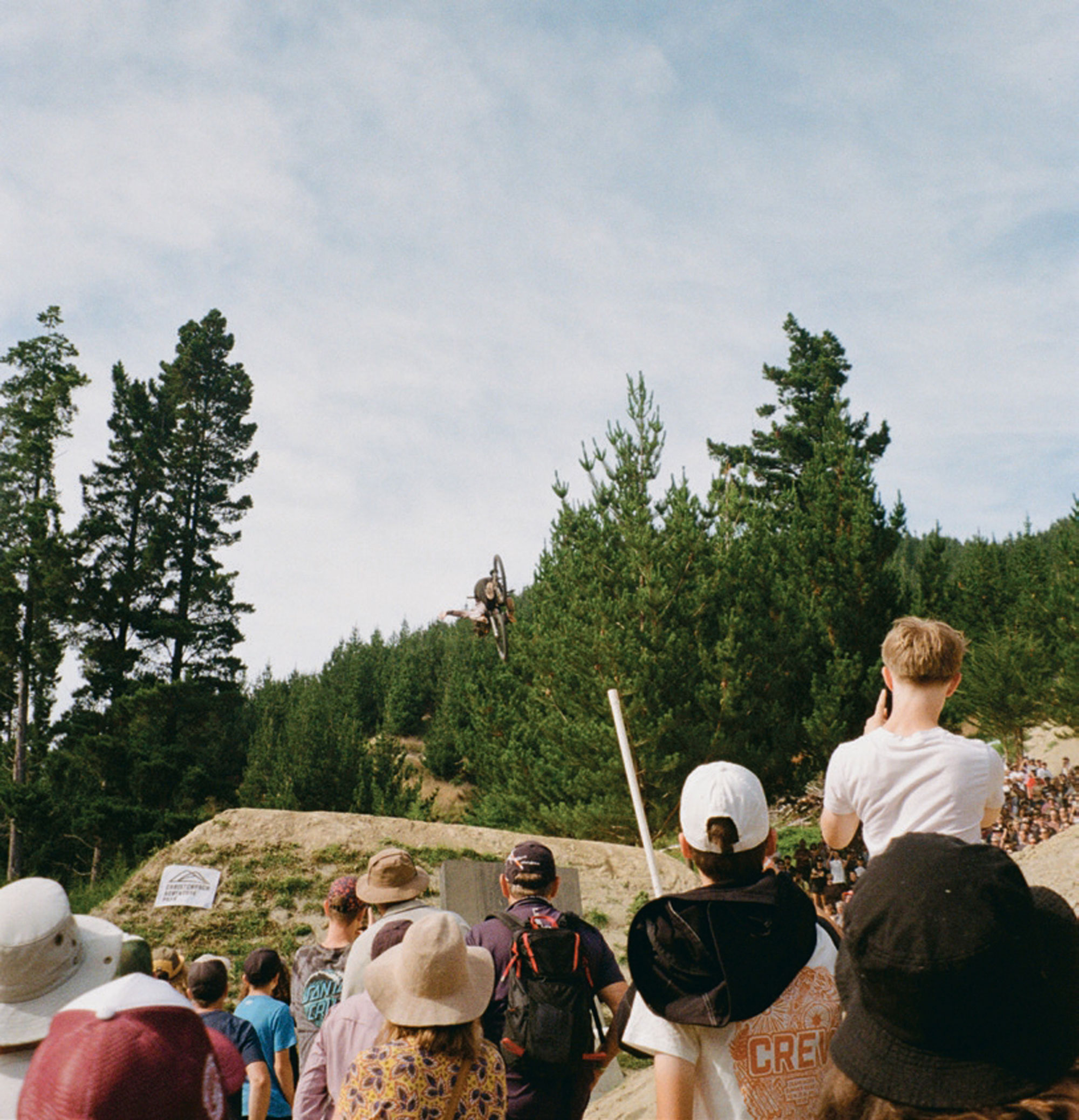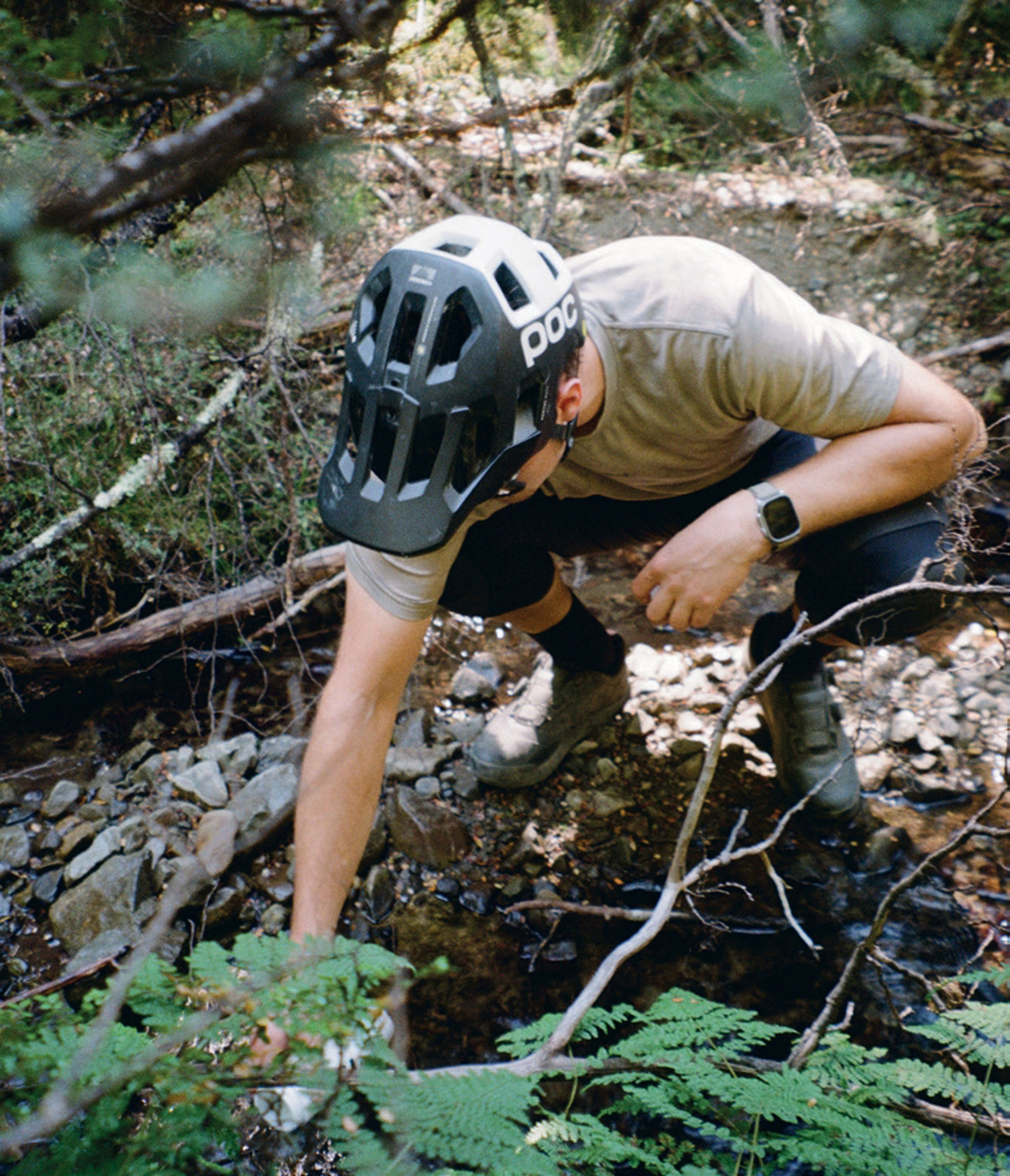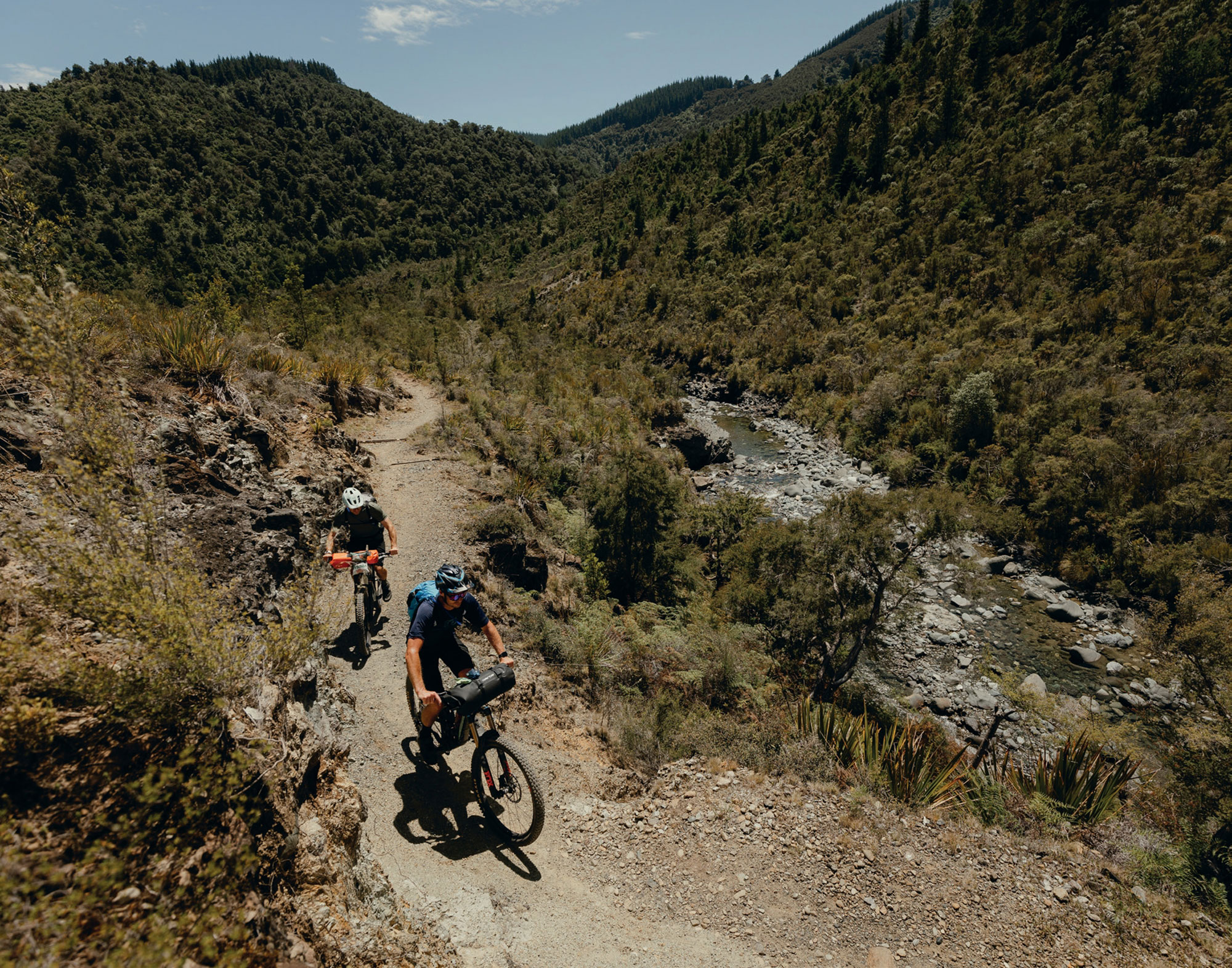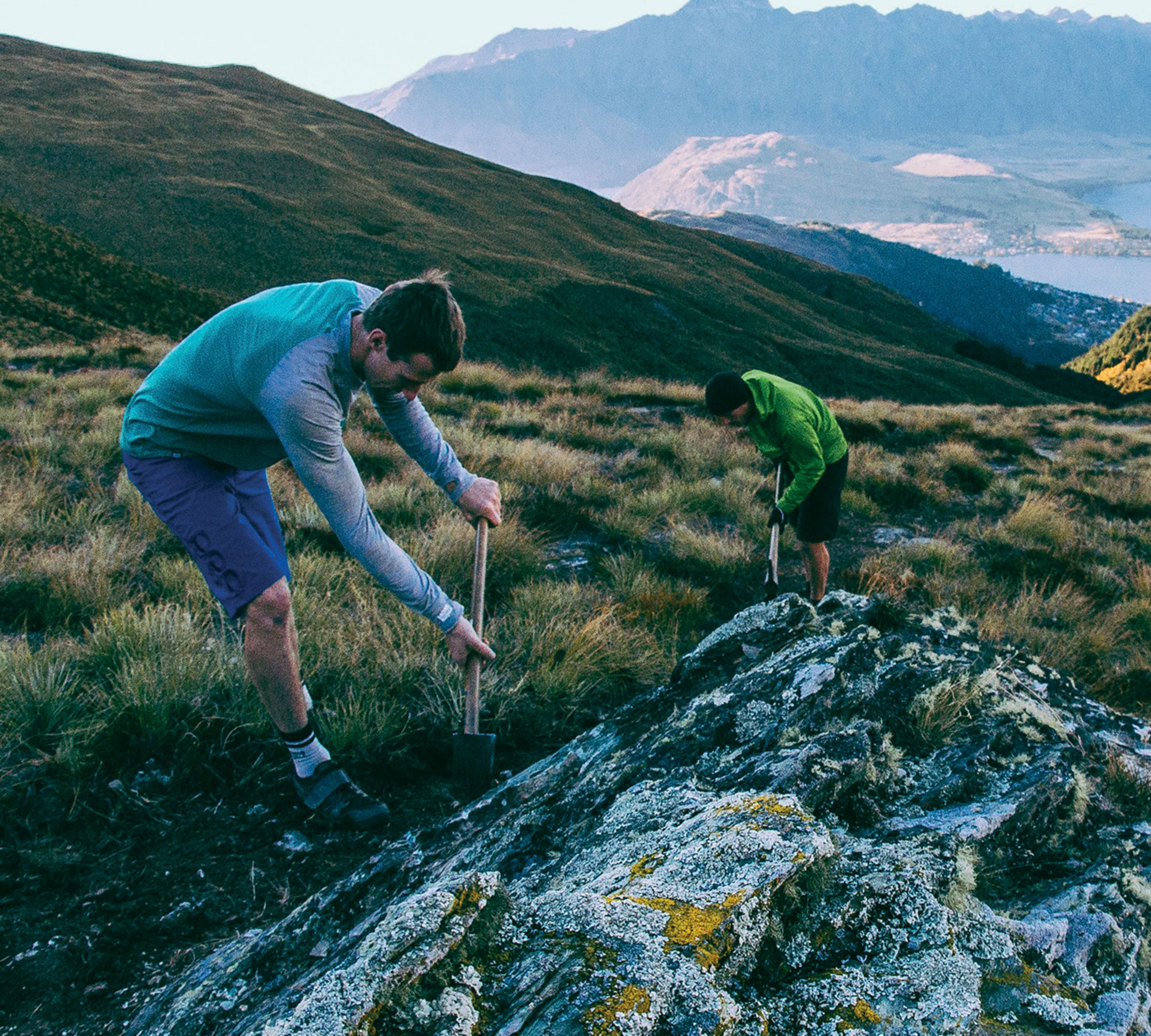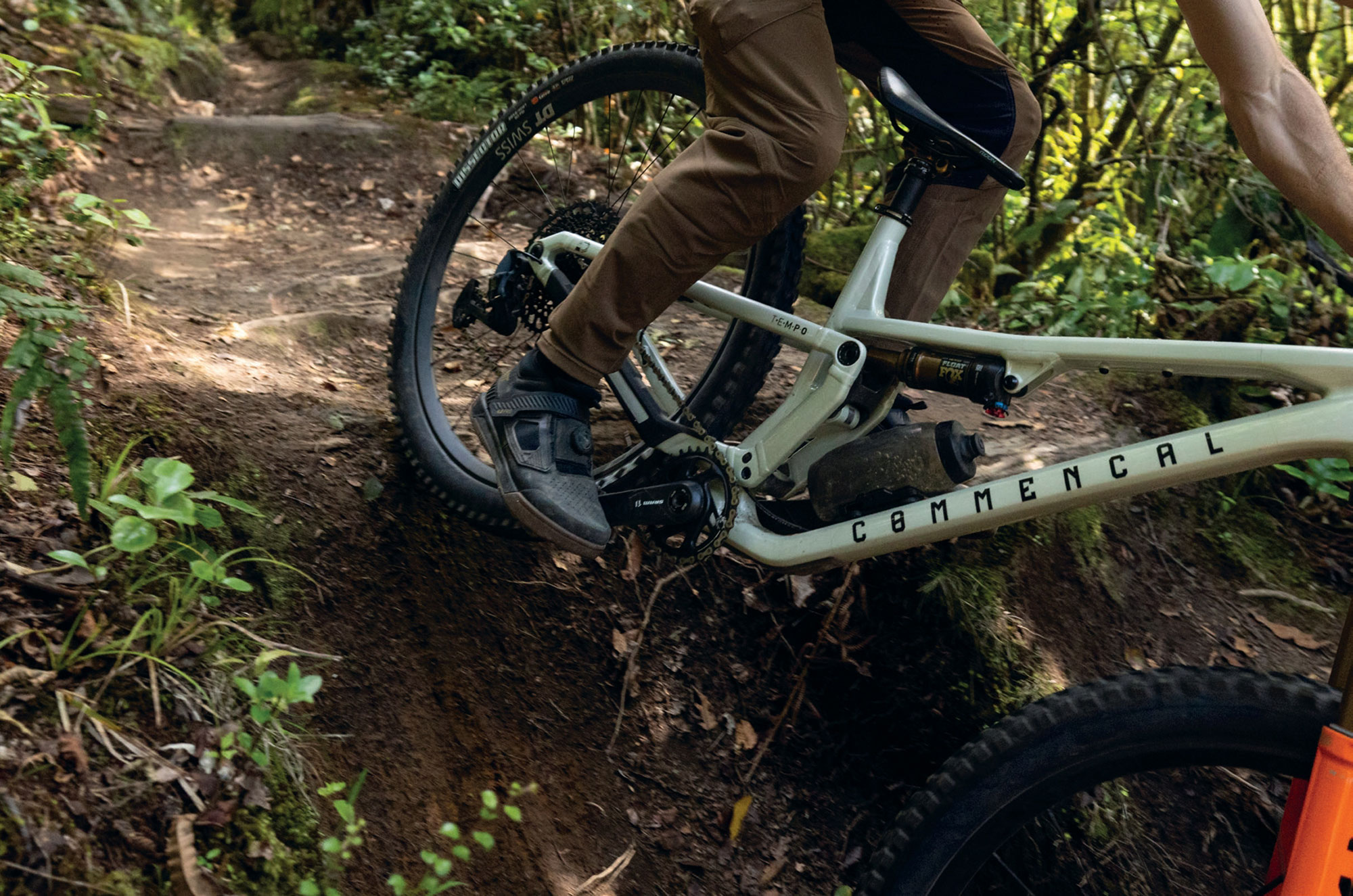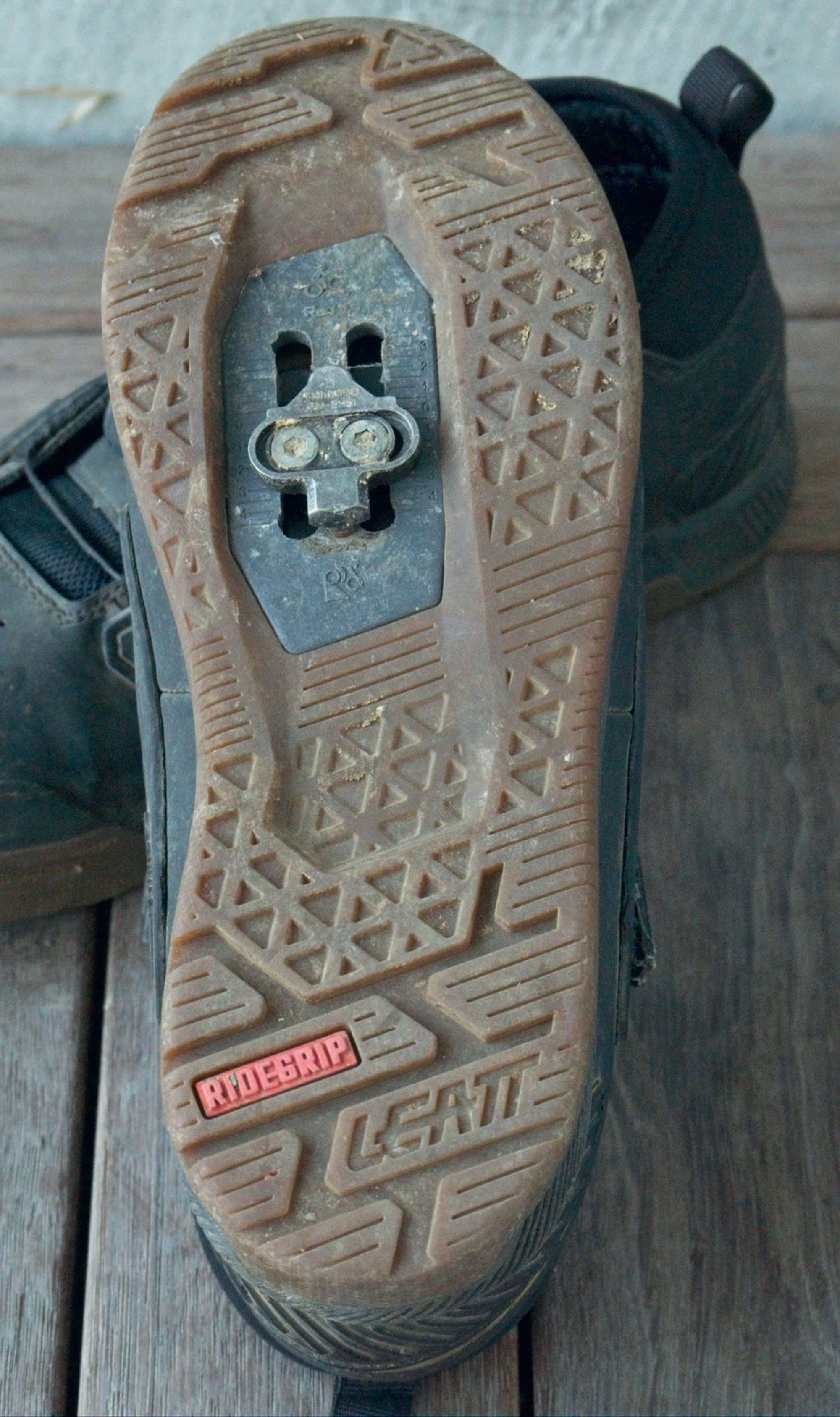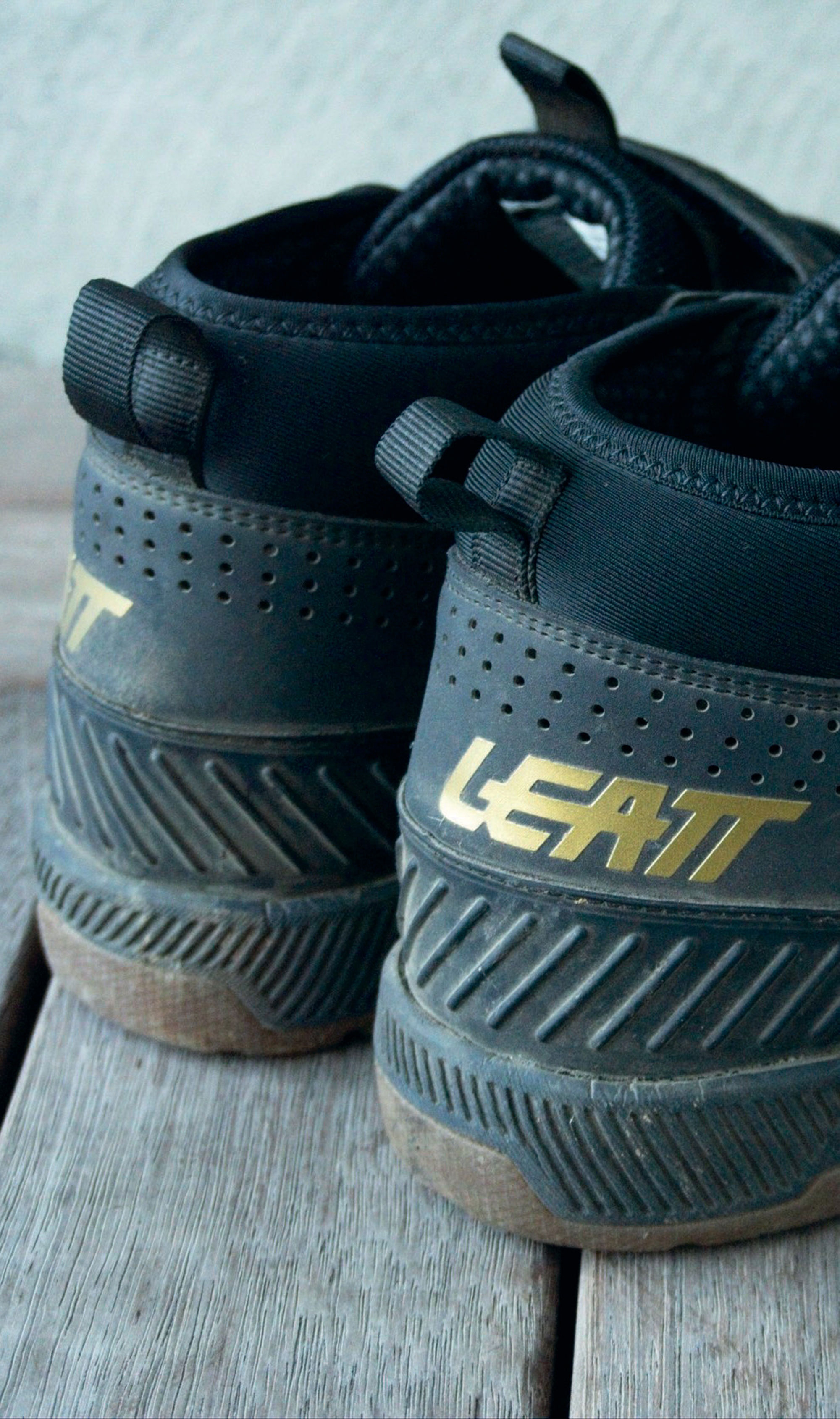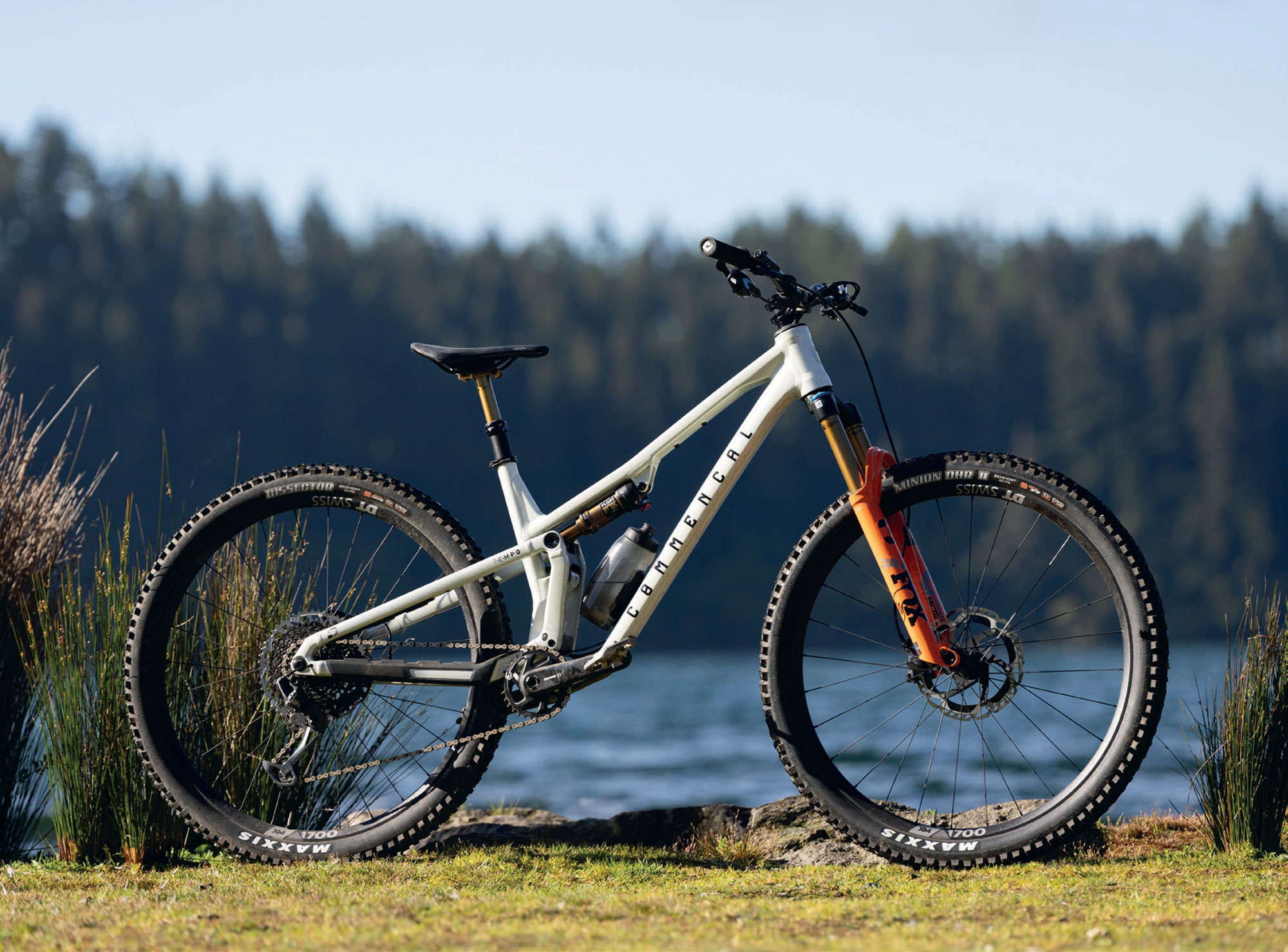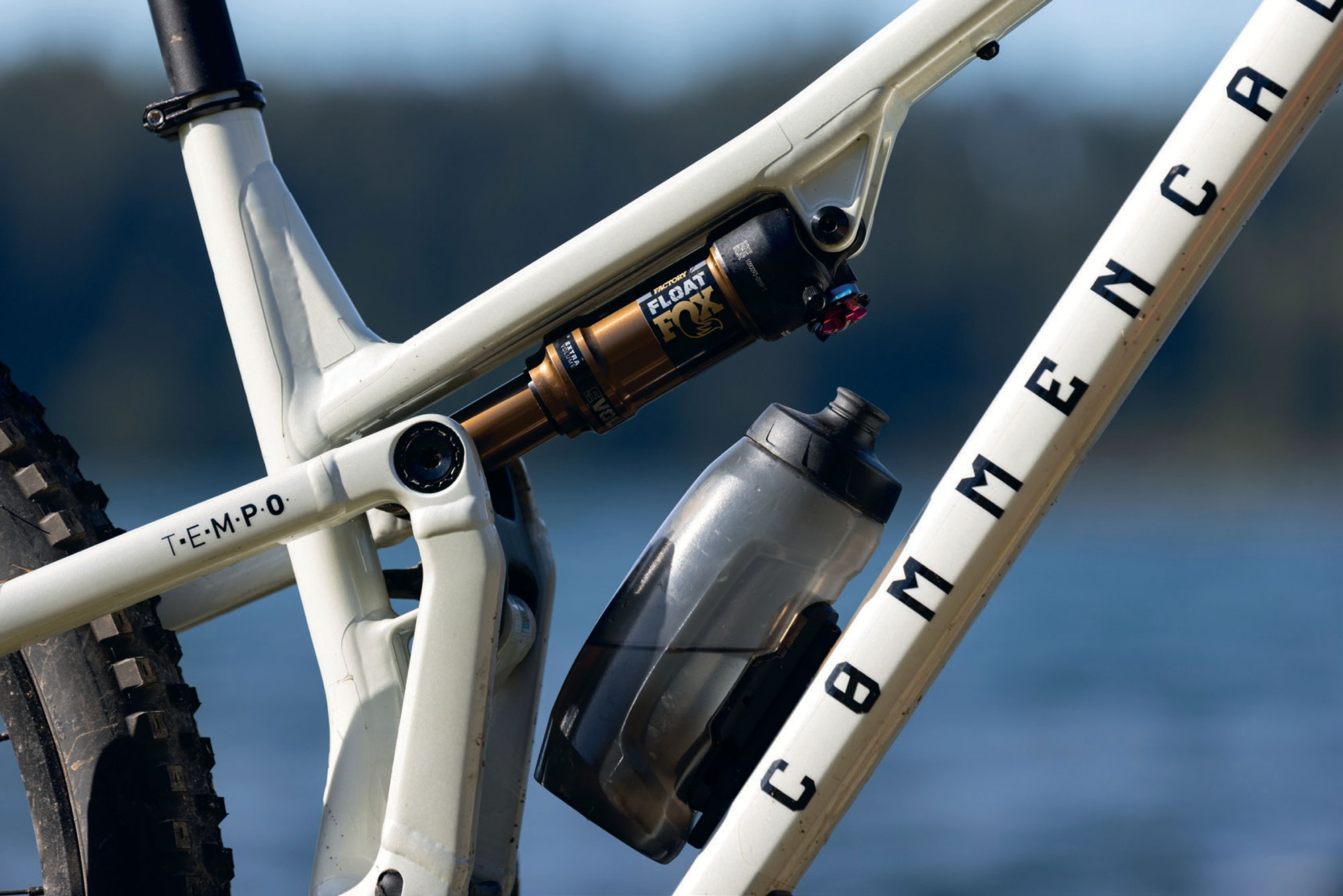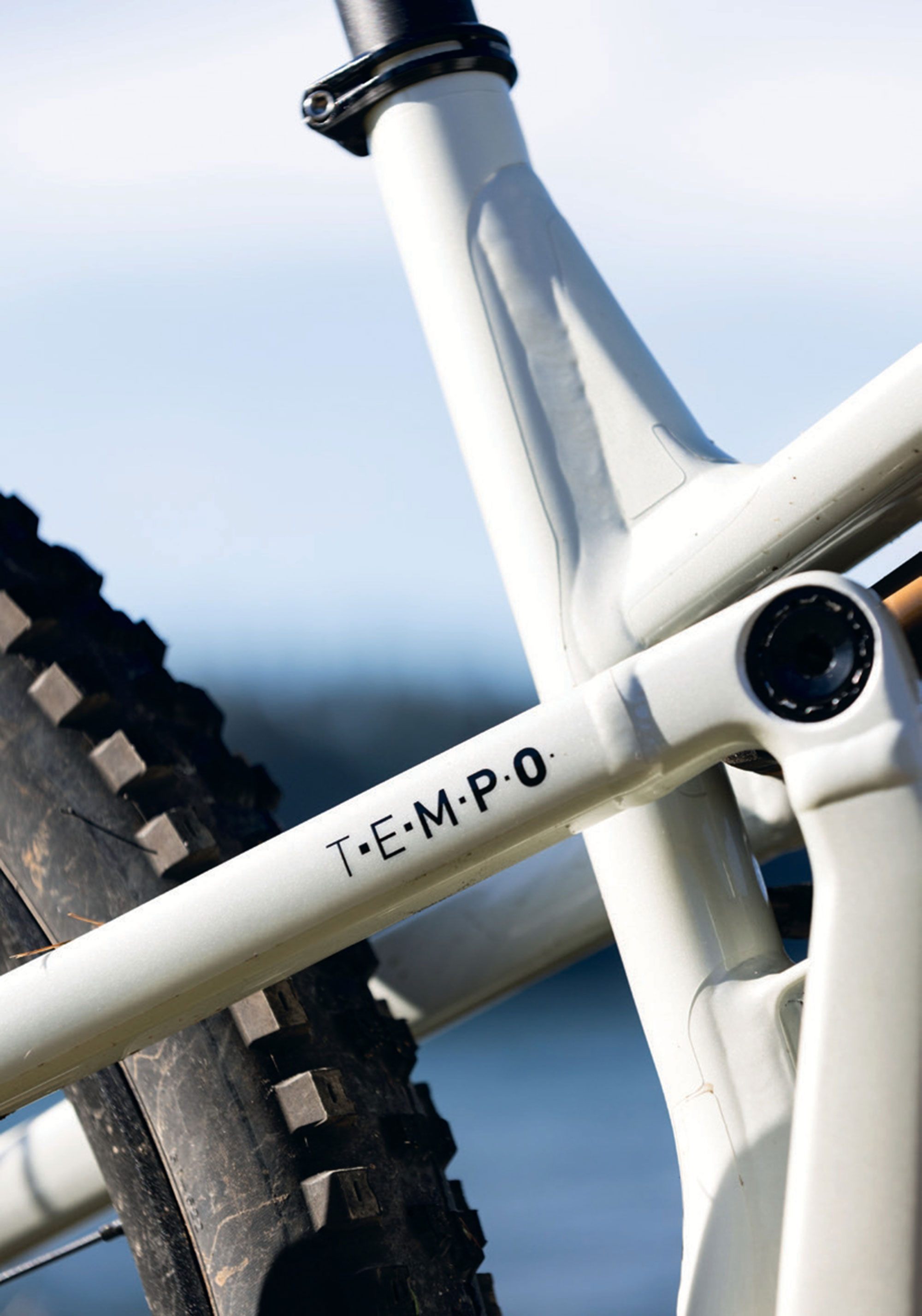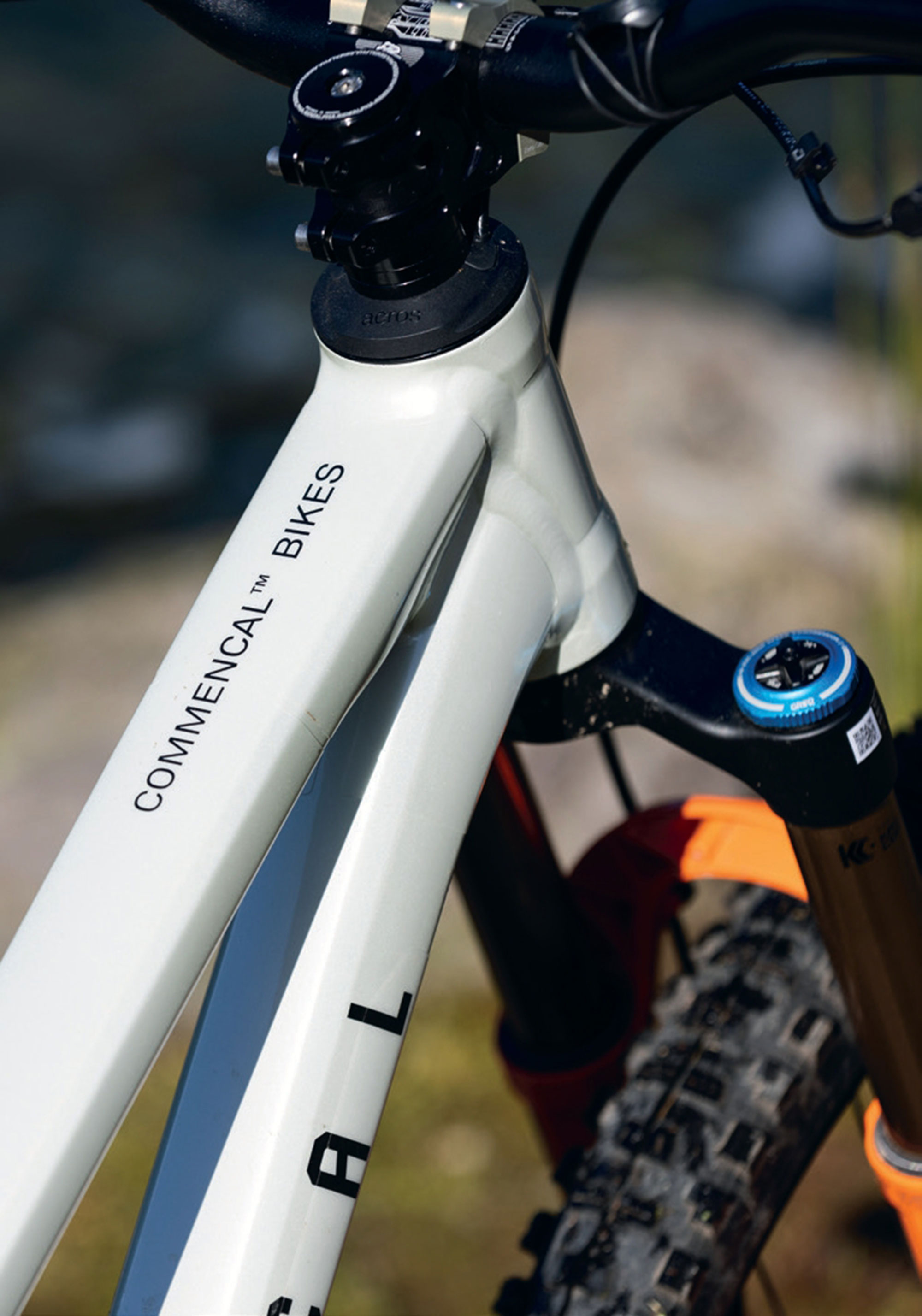Built on a dream
Words by Riley McLay
Images by Riley McLay & Greig Howell
In the world of big air, nowhere is more iconic than Dream Track. Nestled in the heart of the Wynyard Jump Park, the crown jewel of Queenstown’s ever-growing trail network has drawn riders from around the world to experience the massive airtime it’s become synonymous with.
The ‘world’s largest public jumps’ are instantly recognisable by their meticulously shaped lips and perfectly calculated flow. Featured in countless films, edits, and reels, this line has seen many of the sport’s top riders leave their mark, each bringing a unique style and interpretation to how the jumps can be ridden.
But Dream Track is more than an arena to showcase skill—it’s a meeting place for the Queenstown mountain biking community. An open, inclusive space where riders come to learn, share and progress together. And, like Rome, it wasn’t all built in a day. Dream Track is the product of years of evolution, fine-tuning, and relentless community passion, shaping it into what it is today.
Some people might not know that the line was originally built for a segment in the cult classic film New World Disorder 5, where Dave Watson and Grant Allen ticked off a number of freeride zones during a New Zealand and Australia tour. The line was constructed in 2005, along the remnants of an old access road to a former forestry block. It consisted of four main hits, finishing with a massive road gap step-down that landed in what was the early iteration of the Mini Dream area. This was a time well before resource consents were needed for trail building and definitely before anyone was worried about health and safety. Thankfully, the Queenstown Mountain Bike Club (QMTBC) had a solid relationship with the local Queenstown Lakes District Council (QLDC), which gave construction the green light. The mastermind behind the build was Nathan Greenwood, who did most of the digger work himself. For its time, the build was impressive, even if it was a world away from today’s standards.
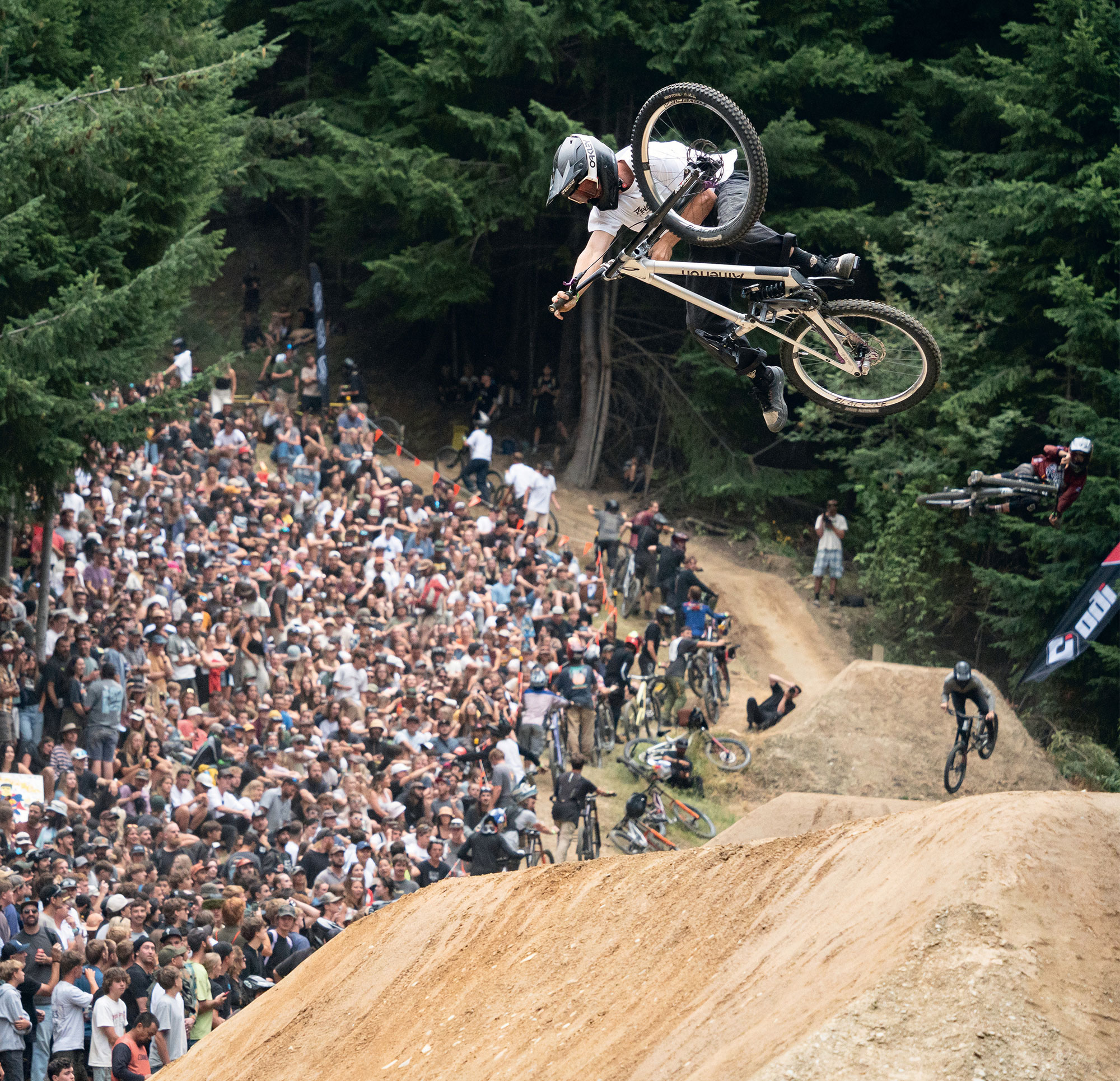
Once the film crew had moved on, only a small group of locals had the skillset to ride the jumps. Keen to keep developing the line, the club struggled to justify funding a track that only around ten people were using. So, most of the changes that followed were small tweaks, made primarily to suit those few regular riders. One of the most notable of those riders being New Zealand Freeride legend, Kelly McGarry, who made the move specifically to Queenstown to ride and train on the jumps. Knowing how much it would mean for the growth of the local scene, a plan was set in motion in 2014 to extend and improve the line. Spearheaded by Emmerson Wilken and Conor Macfarlane, the duo managed to convince QMTBC to allocate a budget for the work. A nine metre left hip into a 10-metre step- up was added, linking back into the four original jumps. This ‘new school’ layout opened the line to a wider range of riders, better suiting the bikes of the time and making it far easier to session.
With the lines growing popularity, they knew they were only scratching the surface of the area’s potential. Inspired by the impact of events like the Fest Series, and the possibility of hosting something of that caliber in Queenstown, they knew they needed to build more jumps and bring the rest up to modern standards. The goal was to build steeper jumps—more like BMX or 26-inch dirt jumps, just scaled up for downhill bikes. The vision was to hit a wall of dirt at high speed and launch to the moon! However, gaining support outside the club was difficult, as the local tourism board had yet to see biking as a worthwhile investment.
In 2016, after extensive consultation with the local scene on how best to utilise the terrain, a revised layout and cost estimate were presented to the QMTBC. A budget of $3,000 was allocated for the build, with most of it going toward diesel for a brand-new digger that was generously donated by local construction company, Veolia, for a two-month window. The rest of the effort and manpower would be entirely volunteered, with a long list of locals lining up to donate their time. The primary goal was to build three new jumps above the existing line, and if any budget remained, work would continue on the lower section of Dream Track. The two-month window to complete the build happened to align with the very first McGazza Festival—an event created to celebrate the life and legacy of Kelly McGarry. As part of the festival, a memorial jam was planned to officially open the newly revamped Dream Track, making the build feel even more meaningful for everyone involved. After over 250 hours of digger time and countless hours of volunteer work, the jumps were nearly finished and just needed the final test before they were good to go. Normally, guinea pig duties would fall to Kelly or Conor. But with Conor out, recovering from an injury, the job landed on Emmerson. Would the ol’ eyedometer prove accurate? The build wasn’t based on any exact science, just past experience. The only way to know for sure was to huck it. To their surprise, the jumps worked perfectly on the first try, and only minor tweaks were needed before the jam.
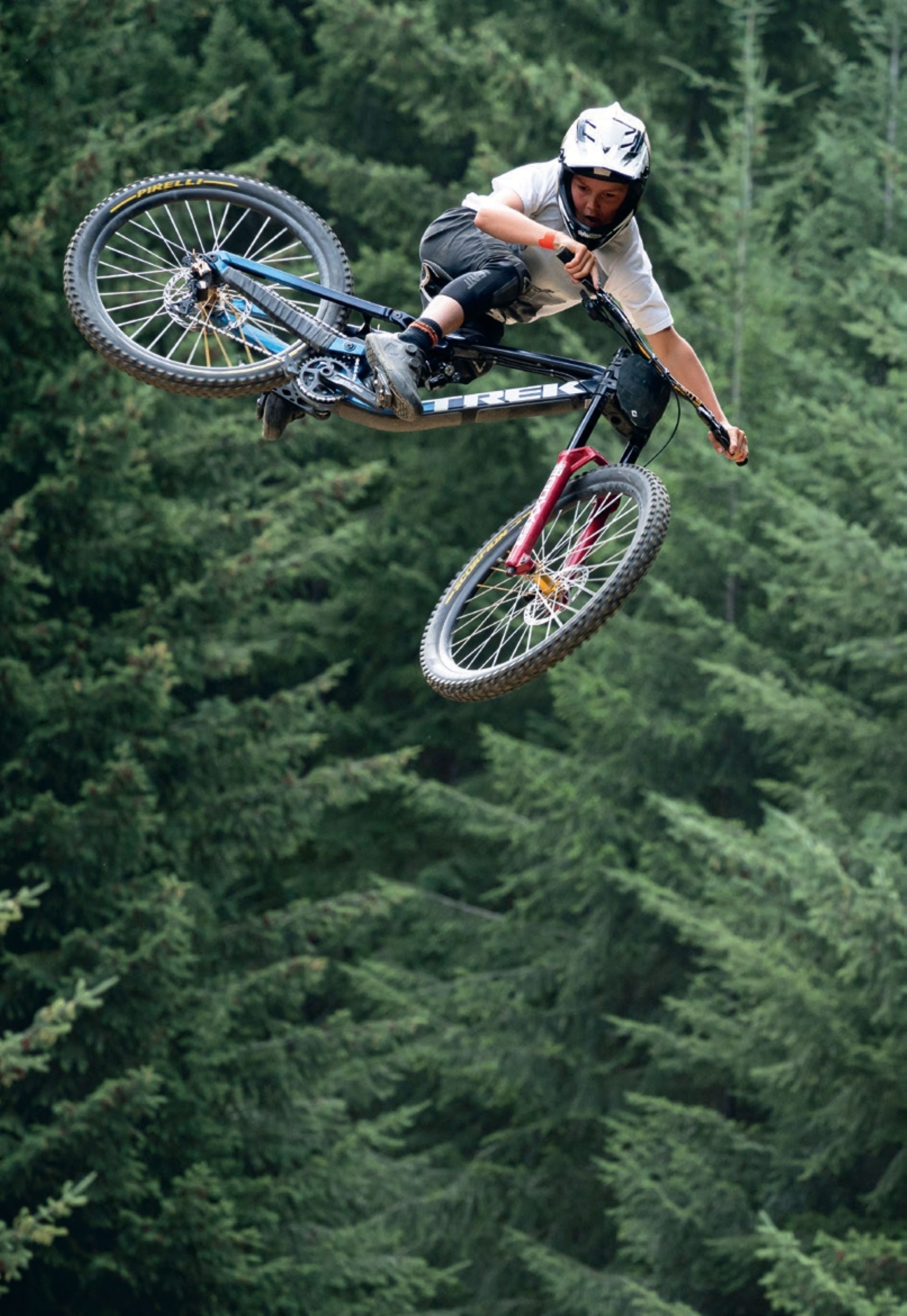
The first iteration of the McGazza Fest Dream Jam was as grassroots as it gets, just a crew of Kelly’s friends sending it huge for the big man. Since then, it’s grown into one of the most anticipated events on the mountain biking calendar – all on the back of no marketing or advertising for the event. One social media post goes out for the date of the event, and word of mouth does the rest. A major drawcard for spectators is not just the chance to watch a mix of star-studded pro riders’ session the jumps, but also the opportunity to see their local mates sending it alongside them. The club uses the event as a fundraiser, with proceeds coming from a sausage sizzle, a raffle, rider entry fees, and merch sales — including the popular McGazza tees. At the 2025 event, over 3,000 people packed the hillside to catch a glimpse of the action. It’s also become competitive to secure a spot in the lineup, with organisers capping the number of riders to 100 on a first-in, first-served basis to help manage congestion on course. This past year’s event introduced an under-19s category to open for the main show, giving talented up-and-coming groms a chance to showcase the future of the sport. Even though these young riders would be too young to know Kelly, and maybe not able to fully grasp what he accomplished, it’s inspiring to see them carrying on the culture that Kelly embodied. This upcoming event will mark 10 years of McGazza Fest, and organisers are planning to go all out for the occasion. There’ll be an even greater focus on Kelly’s memorial and legacy, along with the return of crowd favourites, like the live band — all to make it the best event yet!
Following the post-COVID boom in mountain biking, the local government has pushed to further develop Queenstown’s riding infrastructure, recognising the economic benefits the sport brings to the region. This includes attracting large-scale events like Natural Selection Bike, which even used Dream Track for its pre-qualifying round, to maintain the marketing momentum and reinforce the global push to position Queenstown as one of the world’s mountain biking meccas. Many come to ride the iconic Dream Track, but the nearby Mini Dream area and wider riding network has also become popular for riders to progress their skills and work up to the larger jumps. The club’s ‘build it and they will come’ mindset has paid off—helping foster a community that’s eager to push their limits, while minimising risk through higher-quality trail options. However, upkeep and maintenance of the Dream Track area still rely heavily on a small crew of dedicated volunteers, who are left to manage the consequences of this increased traffic. As a result, there’s been a strong emphasis on education and signage to encourage riders to use the hill’s irrigation system and water the jumps before riding.
There’s also been a push to riders to not take the jumps for granted and to only ride them when they feel ready. This follows an uptick in emergency callouts across the Queenstown network. With vehicle access to Dream Track and the greater Ben Lomond area difficult at the best of times, injured riders often have to be airlifted out by helicopter. The QMTBC and QLDC are acutely aware that pushing one’s limits can lead to real-world consequences, and have committed to supporting Dream Track while doing their best to ensure it is as safe as possible. Their goal is to ensure the track thrives for generations to come. This includes future-proofing the hillside by chaining off and closing the tracks for winter to preserve the jumps and prevent inexperienced riders from riding them in poor conditions, and planting native trees alongside the jumps to replace the windbreak if the remaining pines from the original forestry block fall or are removed.
The full line currently stands with 14 features, with the biggest sending you 60 feet to the sweet spot. Spanning 570 metres, the line’s average speed is well over 50 km/h taking riders about a minute to ride top to bottom. Those involved are extremely proud of what they’ve achieved with Dream Track and admit the riding still hasn’t gotten stale. That said, there are always plans in the works to build on, with ideas to add a few new features—including a trickable step-down, a full right hip, and a spine—to really round out the line. The goal is to be the icing on the cake to what’s already one of the most complete jump lines out there. Like Rome’s Colosseum, Dream Track stands as both a monument to the riders who came before and to the community building for the future. It’s more than just lips and landings — it’s the heartbeat of Queenstown’s riding scene, proof that when a community dreams big, the world will show up to ride.
All proceeds from this project will be donated to the Queenstown Mountain Bike Club for the maintenance and upkeep of Dream Track for the 2025/2026 season.

From the Naki, to the Vale (and back)
Words Lester Perry
Images Supplied
Taranaki has produced some exceptional mountain biking talent over the last 30 years. From Glenn Sisarich’s dreadlocked persona blowing up corners at downhill races through the 90’s, to Cameron Cole’s 2006 Junior World Championship downhill win in Rotorua; and Wyn and Ed Masters, taking their backyard dirt jumping skills to winning an Enduro World Series race each. Outside of these icons, countless other riders from the area have carved their own way in the race-based side of the sport. On the non-competitive side, Taranaki has produced, or been the base for, numerous dirt jump and freeriding talent, existing in their own bubble out on the West Coast. They’ve quietly gone about their business, digging and riding dirt jumps and freeride trails around the region, largely off the radar of much of the country. Daniel Cleland is one such rider and, although he’s now a key figure in the area’s dirt scene, it was outside the region where he really found his feet and fell in love with the culture behind it.
The 25-year-old has an air of humility about him, but his riding and graft speak for themselves. Dan is quick to point out others in the crew whose efforts have brought the trails or his videos together, not in a self- deprecating way, but he’s not one to put himself first; he always acknowledges those who’ve come before or are still in the game.
“I grew up riding Roto’s; a local jump park here (headed by Scott Bedford aka Beddy B), and then Mangers (Lake Mangamahoe) as well. There’s a track called Hendrix out there, and one of the local dudes, Che, did a huge amount of work on the build of that. As I grew up, I just started riding with him and digging with him a bit more. Hendrix is probably three generations deep now. It’s been through logging, been rebuilt, logged and then rebuilt again. This time around, we’re the ones building it, which is pretty rad.”
Education comes in many forms, and while we’re continually learning from the moment we’re born, the lessons learned in our late teens and early twenties help shape our identity as we find our way in the world. For Dan, education has been a theme for the last few years. His early, formative schooling was in Taranaki but, after deciding to train as a teacher, education took him south to Christchurch. Not only did Dan formally train as a secondary school teacher, he also found community amongst the local dirt jump and freeride scene.
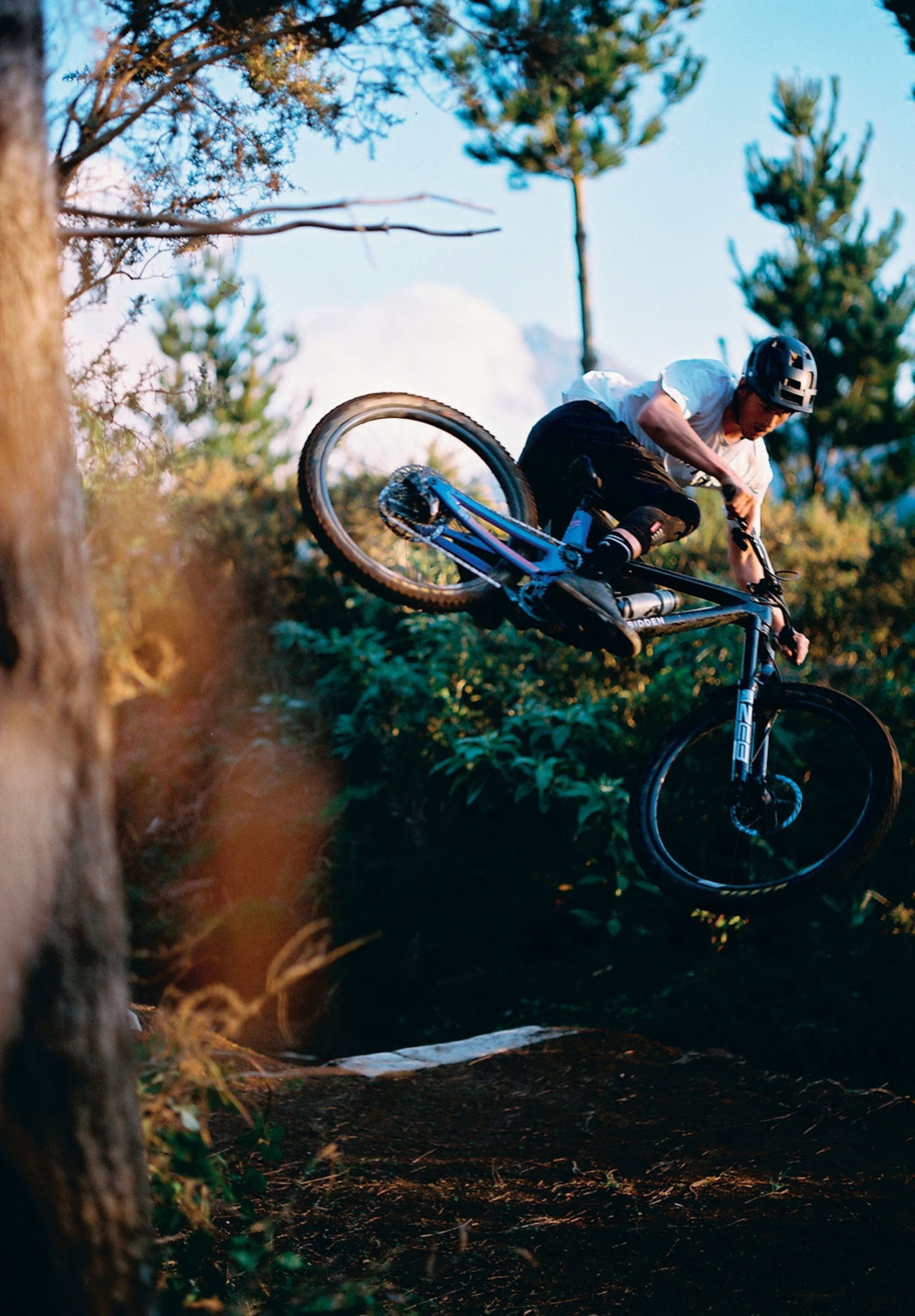
Dan began his time in Christchurch in 2018, where he studied for four years, finishing his final year online through Victoria University of Wellington during the COVID era. He now works as a secondary school teacher at Spotswood College. Most of his time is spent with Outdoor Education and Geography classes, both subjects with parallels to his dirt craft.
Although it was University that had landed him in Grid City, it was a community at the end of Bowenvale Road, right at the foot of Vic Park, where his focus lay between classes. “The Vale” was an integral part of the dirt jump scene in Christchurch for 18 years. The tales from the place are many and really warrant their own feature. Dan not only refined his craft of building trails but thrived on immersing himself in the culture, traditions, and unwritten rules of The Vale, which he would eventually take back home to Taranaki.
“Dan… D-Rock… where do I start… I met Dan when he moved to Christchurch for Uni. Like most years, there was a fresh influx of people moving to the garden city to study and, of course, there are a ton of mountain bikers mixed into that group. He showed up, was keen and motivated to ride jumps, meet new people, and most importantly, he was keen to get on the tools and move some dirt.
D Rock blended in with the Vale crew and became one of the boys super-fast; his quick wit and cheeky banter never went amiss. Dan seemed to be another dude who wanted to learn a few tricks and throw down. That’s not hard to be honest, when you have the likes of Billy Meaclem and Matt Begg to ride with and be influenced by.
He very quickly started to rip tricks on the ol’ trusty Vale step-up; 360s, Backflips, ‘No foot cans’ to name a few tricks this lad does with ease but, personally, I think Dan has one of the best ‘Suicide no handers’ on the planet. Not just NZ, but on the planet, the way he just dumps the front down, leans right off the back and just lets the hands sail behind him is timeless style. With the loss of The Vale and the boys moving on with life, it’s sad I don’t get to see him as much as I did, but I always look forward to hangs and seeing him swing off a bike. Big Up D-Rock, you’re the man.” Andrew Costain, OG Vale builder and rider.
Dan credits the riders behind the infamous Post Office jump spot in Aptos, California, as a key inspiration behind his riding in his early days. Although this focal point drew riders from around the world, it was a tight crew of locals who built and maintained it under a “no dig, no ride” ethos. Riders such as Cam and Tyler McCaul, Greg Watts, Ryan “R-Dog” Howard, Jamie Goldman and friends, were the original locals who kicked it off. Over time, the spot drew riders from around the globe seeking a dry winter escape from their northern hemisphere winters, including Brandon Semenuk, Martin Söderström, Andreu Lacondeguy, and Brett Rheeder, among many others. Although it was on the opposite side of the planet to Post Office, and far removed from most of the world’s riding population, The Vale has many parallels with it: the culture; the no-dig, no-ride philosophy; and being a beacon that attracted global talent to the area when they were down under.
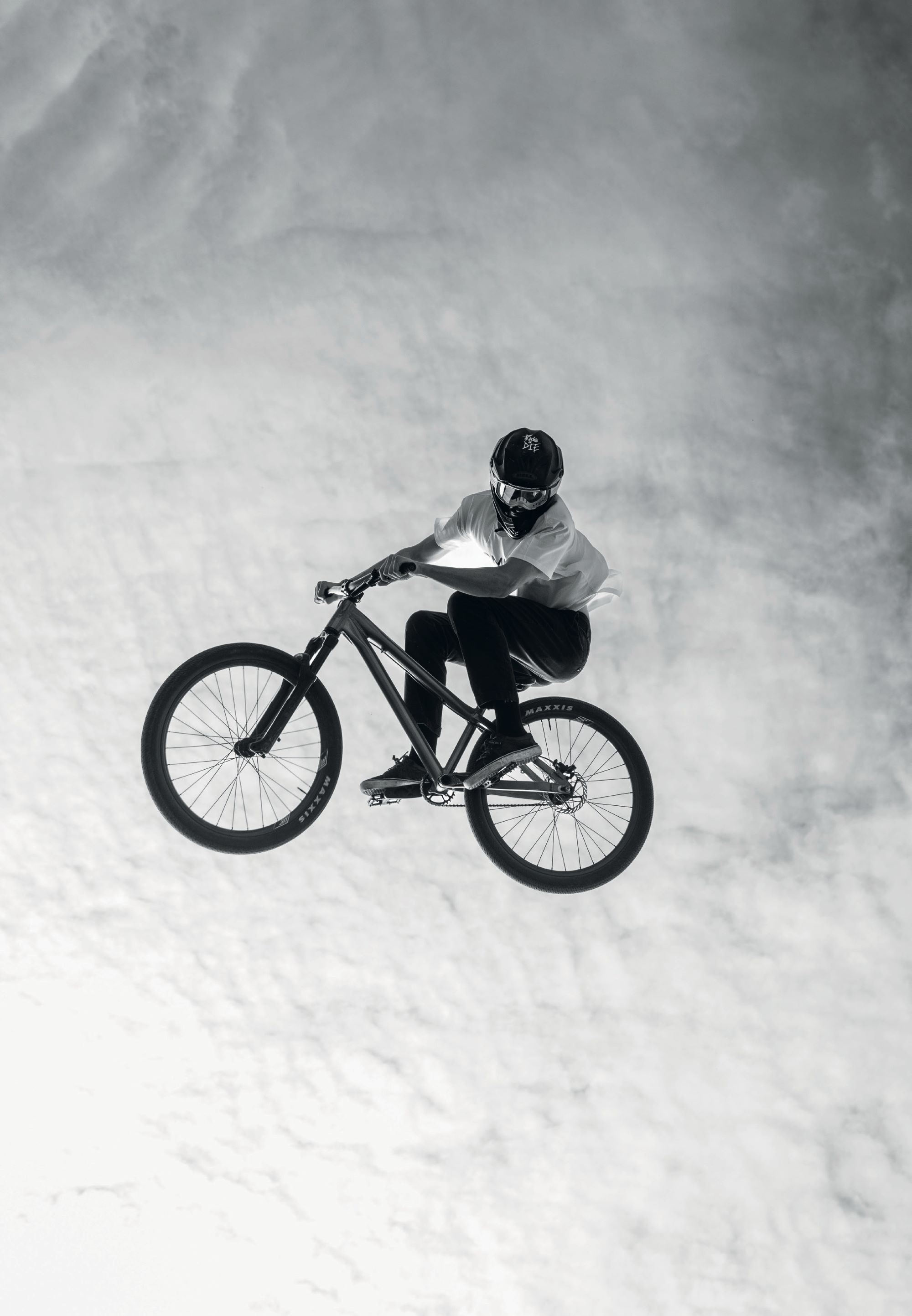
Unfortunately, there was one parallel that neither The Vale nor the Post Office crews wished could be made between the two spots; each was eventually torn down to make way for development. The Post Office trails got bowled in 2015, some 15 years after their inception, while The Vale survived from 2004 to 2022. Although these focal points are physically gone, they both live on in spirit and memories. The communities established in each location continue to evolve in their own unique ways and, even though the original crews have now dispersed and scattered around the globe, the bonds formed at each spot will last a lifetime. The population of Christchurch was a double-edged sword for Dan; he was stoked to have a solid crew to dig and ride with, but there were downsides, and these made him miss the smaller, more laidback hills of home. Many of the crisp lines and manicured berms he’d helped build in Christchurch were rapidly reduced to just lines of powder down the hillsides, blowing out due to heavy traffic, thanks to easy access and the sheer volume of riders in town.
“I can’t quite remember how we first met, but I feel like he just arrived at The Vale one day. He hit it off with everyone pretty quickly. His sarcasm fit right in with our crew’s bad humour, and when we saw he was actually just as stoked to help dig and work on the jumps as much as riding them, we all knew he was a great addition to the trails. Dudes like D-rock are few and far between in the MTB space around here. Most MTB riders just want to ride as much as they can, not caring about the quality of trails they’re riding, whereas Dan’s one of those dudes you’ll only find riding when the conditions are on, and the conditions are usually only on because he’s been the one out digging to get ‘em good. I think Beddy B and Che have played a huge part in shaping Dan into the legend he is, on and off the bike, so big up to those two Taranaki Lords! Definitely miss having him around CHCH, but the stuff he’s got going on up in the Naki looks top notch, can’t wait to come roach it mate!” Billy Meaclem, OG Vale builder and rider.
Sure, riding and digging make up most of the creative equation for Dan, but filming and shooting photos are also part of his creative expression. Teaming up with Josh Birkenhake, the pair has produced a few videos, with the most recent, Homebrew, taking Dan’s effortless style and blending it with Josh’s own unique and gritty, almost skate-inspired, filming style.
The success of these video parts for the duo isn’t about garnering the most likes or views; the success lies purely in the process. Tuning a trail, Dan interpreting its features on the bike, and Josh filming it; if other people like the result, then that’s a bonus.
“You can build stuff here and people respect it a bit more, which is kind of rad…. I kind of realised how lucky we were here when I’d just come back during my summer breaks.”
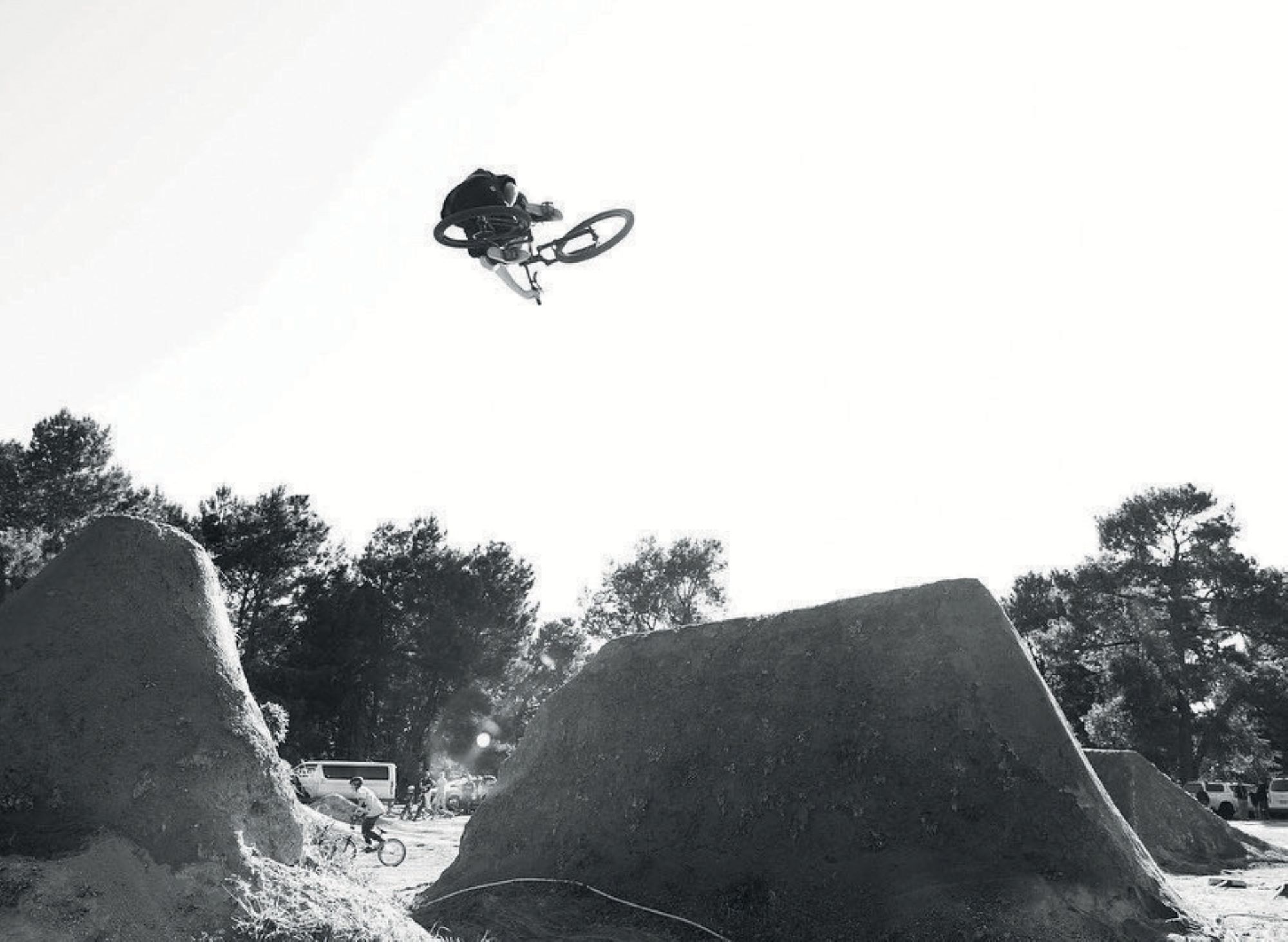
With his time in Christchurch complete, Dan headed back to Taranaki, linking up with his mates Jonty Vink and Che Evans. The small but mighty crew balanced digging and riding. Although focused on dialling in existing trails, perfecting what’s already there, after a period they needed something different, something they’d designed and built themselves and could truly call their own. The Peacock Ridge trail, Mangamahoe, fulfilled that need. Tightly linked turns separated by gaps and rollers – there’s barely a flat or straight section on the trail.
“We don’t want to dig more than we can maintain or keep running sick. So rather than just building heaps of new stuff, we’ll rebuild or tweak features. We’ll constantly be digging, but it’s kind of got to the point now where it’s just refinement rather than full-on going out and building freshies. Sometimes it’s a 100-metre section of trail that links back into the same track. We’ll kind of condense our focus into one area so we don’t have to go to more than one spot to ride, it’s all close together.”
Dan is quick to add his thoughts on the state of trail building in general. While he’s glad there are companies around that can quickly push a trail through with a digger, the speed and ease of these builds, in his eyes, mean that lots of MTB clubs end up with more trail than they can maintain, so overall quality suffers. Particularly, digger-built flow style trails are more of a liability than an asset for clubs relying on volunteers for trail maintenance. It’s evident that Dan’s focus is on ‘quality over quantity’, as he explains below:
“You see a lot of commercial builds happening these days, and it’s sick and it’s super rad for the community. But then it’s such a massive surface area to maintain and, in three months, it’s just flogged and they don’t have any maintenance plans or anything. In Queenstown, they’ve obviously got the money for it, and they (the commercial builders) can come through and redo it every year. But I know you see these smaller communities and clubs getting massive funding for trails, and then come six months’ time, all that funding spent, they’ve got like three rad new trails – and, especially bike park tracks and digger-built stuff, they just get flogged and need lots of work.
It’s almost like the clubs see them as an infinite asset. But it’s like, dude, that asset depreciates fast, you know, you’ve gotta keep investing or have a skilled community that can upkeep those trails.
Whangamata MTB Club do a good job. They’ve got lots of digger-built trails, but have committed to having a full-time builder, and they keep it running super sick. Rather than building something new all the time, it’s sick to see like a club be like, oh no, we’ll chuck that money into actually keeping what we’ve got, good.”
The next chapter is unfolding for Dan; he’s putting down roots, hoping to purchase a plot of land for a tiny home with big jumps in the front yard. Seeing the talent emerging from the scene in New Plymouth, he’s encouraging the region’s younger riders to “respect the sesh”, ensuring they take time to rebuild, repair, and dial in the jump lines, rather than just riding and leaving someone else to look after them.
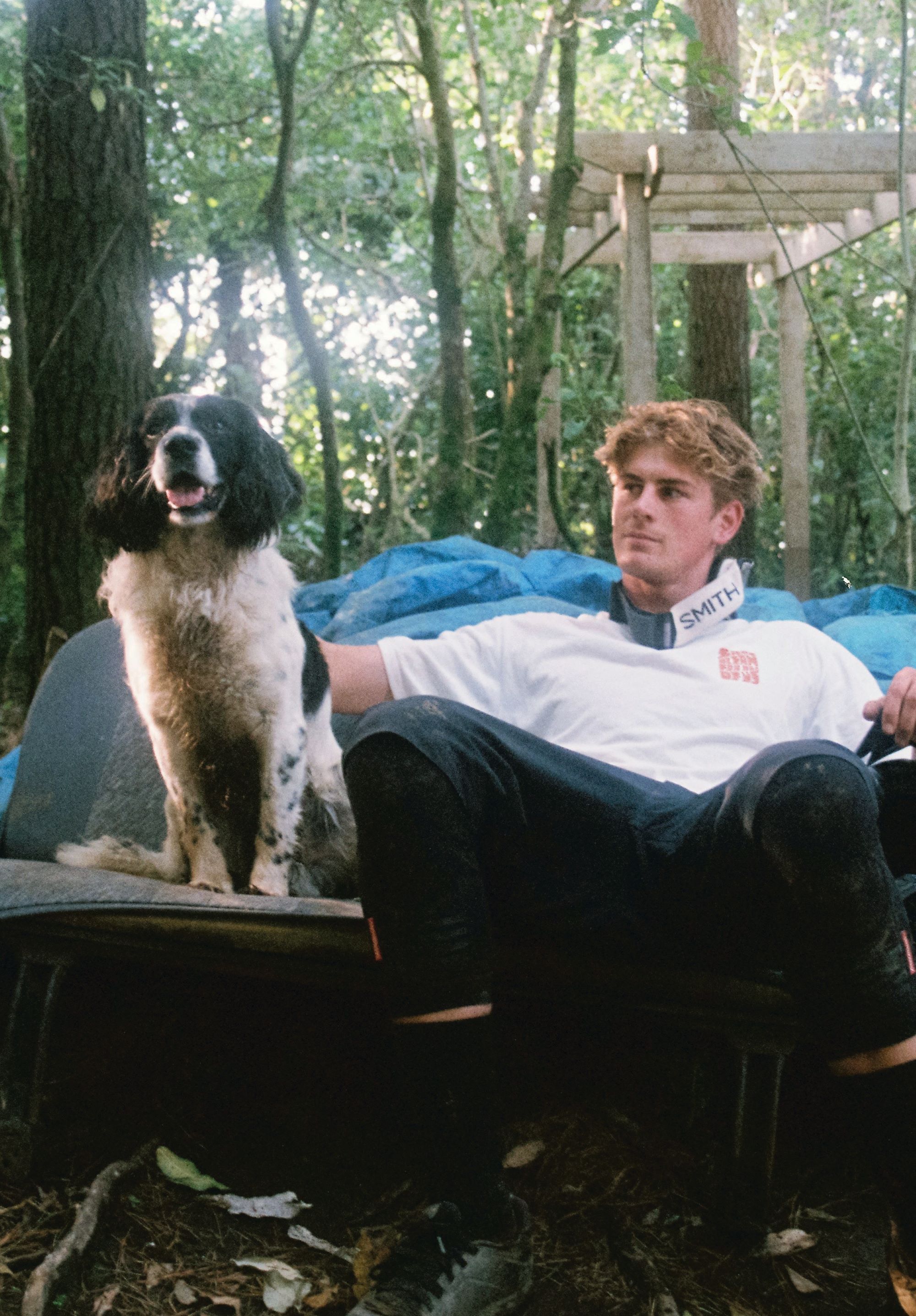

Touring the Island of Eternal Spring
Words by Georgia Petrie
Images by Cameron MacKenzie
When you tell people you’re going to do a bike race in Madeira, the first thing they ask is; “where’s that?”. To which I say; “It’s a random island that’s kinda part of Portugal, but it’s its own thing…”. The follow-up question is often: “What’s it like?” – and to that I can’t find enough descriptive words in the dictionary to articulate just what makes it the island paradise that it is. It’s an all-encompassing place; it draws you in from the moment you approach the airport’s precariously positioned runway, which requires a last-minute 180 degree turn to land, and often rounds out the top 10 “world’s most dangerous airports to land at”.
Once you’re on the ground, Madeira’s namesake “The Island of Eternal Spring” starts to make sense – beautiful, century-old streets are dotted with flora and fauna unique to it’s mild climate, where the concept of “winter” doesn’t exist; strikingly green and rugged terraced hills dating back to the 15th century envelop the island’s capital, Funchal, while the island’s dramatic volcanic peaks create postcard-perfect views in every corner.
Oh, and how could I forget the fact that it’s home to some of the best mountain biking trails in the world? Factor that in, and you’ve got the perfect concoction for a bucket list riding destination.
The seed for racing Trans Madeira was planted when I was lucky enough to visit the island in 2024, to take part in a photoshoot. Other than being familiar with the name, because it had hosted the Enduro World Series rounds in 2017 and 2019—and more so, the Deathgrip Movie—I was going in blind. I knew nothing about its landscape, very little about its proximity (or lack thereof) to anything and certainly not that it would take 45 hours and five flights to get there… of course I said yes! We ended up traversing the entire island, a never-ending, sensory overloading, treasure map courtesy of Freeride Madeira—not only are John and his team the premiere shuttle and touring company on the island, but they also build and maintain Madeira’s 200km+ trail network. I also discovered they were the masterminds behind Trans Madeira, a 6-day, 200km Enduro stage race that circumnavigated the island’s extensive trail network across 35 special stages. After being so impressed at the operation Freeride Madeira had built, I knew that any event run by John and the team would be nothing short of well-oiled, packed to the brim with goodness, and that anything you could possibly think of would “just be sorted”. Bucket list item added!
I am fortunate enough to be able to ride from my doorstep, which helped immensely with squeezing in training rides. However, an important caveat to this is the fact that due to that pesky thing called work—a day job coupled with freelance commitments (one of them being designing this magazine, among other things, in my spare time)—the majority of my rides now barely exceeded one hour in duration (two hours maybe, in summer, if you include the post-ride commute to the pub), and whilst I’d completed Enduro World Series events previously, building my fitness to a level that could survive six days of racing was unfamiliar territory. I spent the summer squeezing in 1000m rides as much as possible, coupled with my usual gym work and the odd sanity run and eBike ride for downhill training. I wanted to challenge myself in a totally different way and if I could finish all six days, I’d be happy!
My weapon of choice was the Specialized Stumpjumper 15. This is a comfortable all-day climber in a light-yet-punchy 145mm package, paired with a beefed up 160mm fork for added stability and a mullet setup for a touch of agility. I stocked up on 6x days worth of kit packed into separate packing cubes, ready for each day—I’m a chronic overthinker when it comes to choosing my OOTD (outfit of the day)—as well as 6x days’ worth of snack kits—NZ Natural Confectionary snakes, Bumper Bars, and PURE nutrition gels and electrolyte packs. While I knew there would be feed zones each day, I wanted to be prepared for any hangry emergencies with food I was familiar with.
On a frosty May morning, we departed Christchurch on what was a simple journey…. until our final Lisbon > Funchal leg. Being unable to land in Madeira meant we flew back to Lisbon, only to get straight back on the plane to attempt the journey again—a total of almost six hours to complete a 1h40 journey, ultimately arriving at our accommodation at 2am. No time for jetlag!
Day 1 – 48 km – 1000m up – 2950m down – 7 special stages
Not being much of a tent girlie under usual circumstances, I decided to splash out on comfortable sleeping gear—a Sea2Summit mat of decent thickness, summer weight sleeping bag and adhesive pillow—all of which were worth their weight (excuse the pun) in gold. Waking up to a beautiful sunrise in Machico, the precarious challenge of attempting to put on full riding kit without dragging 10 tonnes of sand into my tent began. I quickly realised that finding a way to keep 6x days’ worth of riding kit contained within the tent, and avoiding a luggage blowout, was going to be paramount in wasting precious mental energy at the beginning and end of each day—especially as each night was spent in a different location.
Day one took us to the East Side of the island, where we’d be starting the day with Stage 1— Boca Do Risco—a previous nominee for EWS trail of the year, that winds its way down beneath luscious canopies of Jurrasic Park-esque bush until shooting riders out precariously close to the cliff’s edge. When I think of Madeira, this trail is exactly what comes to mind; exceptional hand-built, flowing singletrack that’s the perfect blend of fast and technical, all enveloped by endless mountain-meets-ocean panoramas. After shaking the Stage 1 nerves I’d been long anticipating, and despite my immense preference to do basically anything other than carry a bike on my back up a hill, the endless ribbons of coastline and peaks we were treated to en route to Stage 2 was enough to put a smile on the face of even the most dubious hike-a-biker (me). Stage 2—Into the Mystic—took me straight back to the dustbowl of Christchurch, and was another one of Madeira’s gems that I’d been lucky enough to get a taste of previously. Fast and loose with dust-filled corners and off-camber drifting, staying upright was an uphill battle. The liaison to Stage 4 hit, and every doubt I had about being over prepared with my carefully curated selection of snacks quickly dissipated as I munched down a Bumper Trail Bar. The four bags of Natural Confectionary Co. snakes (if you know, you know) paid for itself instantly—especially the positive reception from my UK and Canadian counterparts!
Stage 4—Natal—down into the feed zone at Porto da Cruz, was full on—basically a rock garden for 5 minutes—and my body was starting to feel the fatigue of needing a substantial refuel. These were longer downhill runs than I was used to and, in hindsight, I had insane jet lag that I was subconsciously suppressing (it’s not real unless you say it is, right?!). The PURE nutrition gel I smashed before dropping in was the real MVP, giving me just enough beans to hang on until the most boujee food zone spread I’d ever seen. I rolled up and uttered something that resembled a “thank f*ck for that” and smashed a Red Bull along with a freshly baked filled roll, a pastel de nata and cup of roast potatoes. No, I’d never seen potatoes at a feed zone before (nor pickles for that matter), but yes, I was absolutely here for it. Reaching Stage 7—Hole in One—the view down into Machico was all-time. A little slick at the top, my tired legs and subsequently lazy riding position caused my foot to blow off my pedal, and I was on the ground before I knew it. Weirdly relieved to get a crash out of the way, I fumbled my way down the final rock gardens of the day and straight into a beach swim, finishing the day in 4th overall.
Day 2 – 46 km – 1182m up – 3700m down – 7 special stages
Generous doesn’t quite cut it for the incredible breakfast spread put on by Chefs Robert and Nuno—these guys haven’t missed an edition of the event since 2018, and it’s clear they’ve got mobile catering for 200 people down to a fine art, and that’s no small feat. The beauty of Trans Madeira is that you don’t have to worry about anything—the smallest of details you can think of are all sorted for you, meaning you can focus on your race and truly take in the paradise that surrounds you for the duration of the week. The fact that these guys can move 180 luggage bags from one side of the island to the other, all while managing to feed 200+ humans, are some serious logistical goals—these guys know what they’re doing.
After exchanging some very tired good morning’s and “body’s a bit sore today eh!”, I settled into my routine of porridge with lashings of Nutella and peanut butter paired with a side of scrambled eggs, sprinkled with dribs and drabs of pastel de natas, beautifully baked fresh rolls, cheeses and pastries. Fresh and so well managed—these guys are goals when it comes to logistics. I learnt quickly that I needed to eat as much as possible for breakfast—by the time we’d roll out and hop on the shuttle and reach the start of the day’s stages, a couple of hours would often pass and I was glad to have some sustenance behind me.
We started the day off with Stage 8—the infamous Gamble line—which was a treacherous mix of slick berms, aptly referred to as ‘Madeira Ice’ when wet, and hero dirt. An island favourite, I was a little too cautious and finished the stage wanting more from my riding—though after seeing how many crashes were had, I was pleased to reach the bottom with clean kit! Kept company by my riding buddy Lizzie, who’d made the journey all the way from Pemberton, BC so could share my jetlag woes, I settled into the chunky sealed road climb that was our Stage 9 liaison to Truta’s Trail. A total contrast to Gamble, this stage had it all, including sketchy wet rock gardens—they did warn us this trail does suffer from the impacts of wet weather, and would be changed should there be too much rain. My fatigued arms were holding on for dear life, trying to maintain both speed and grip through chunky rock sections. After catching three riders at various points throughout the stage, and thanking them profusely for precariously allowing me to pass in the most awkward technical sections imaginable, we were relieved—and for some reason oddly confused at just how technical parts of the stage were (perhaps it was the fatigue skewing our perception)—to make it the bottom of the stage.
In contrast, we were treated to absolute loam- filled bliss for stages 10, 11 and 12. As the trails became drier, the day became hotter, and soon we were baking in the sun at the day’s food zone in Porto da Cruz, the infamous Penha d’Águia rock feature perched above us. Stage 14—Santo Antonio—was a personal favourite of mine and suited me well: rocky, fast, technical enough to be challenging and require careful line consideration, but “not too technical to be scary”, and bonus points for no pedally sections. The stage starts in the open, with mind-blowing views of Funchal below.
The ocean seemed like a lifetime away, and hard to believe that ultimately we’d be riding to our new campsite on the shores beneath—I vividly remembered riding this on my last trip to Madeira, and what a privilege it was to have a chance to enjoy it once again. I tried to carry as much speed as possible through the rocky chutes up top before the trail snaked its way into the eucalyptus trees for its second half, Redline, where endless switchbacks meant you could really dial up your pace. I let the bike do the work and focused on enjoying myself. We finished the day off with the aptly known “Madeira massage”—absolutely bombing it down the beautiful, winding streets of Funchal, precariously perched on the hilltop. There’s something particularly magical about riding through town here—whether it was the residents yelling “go girl!” from their driveways, the beautiful ancient buildings or the blooming flora and fauna, it’s a sensory overload. One of the best days on a bike I’ve ever had, and what a treat to finish with a Stage 7 win and a bump up to second place overall.
Day 3 – 40 km – 1174m up – 2600m down – 4 special stages
Day three truly encompassed the diverse beauty Madeira has to offer; a true reflection of the postcard that I so often describe to people when they ask me what the island is like. Seemingly endless breathtaking landscapes paired with some of the best technical flow trails I’ve ever ridden, all in the company of humans that can only recharge your social battery—THIS is Trans Madeira manifested. Starting Stage 15 on the alpine trail, Pico Cedro, the now fatigued arms were given a wake-up call with exposed rocky chutes, with infamous “Madeira Ice” thrown in. The final stint of our Stage 15 liaison was a short hike-a-bike which highlighted the severity of the blisters I’d sustained in Day 1’s beautiful Ridgeline liaison. After battling with blisters in many hike- a-bike’s prior, this was a key concern of mine that, despite all my preventative attempts, had come to fruition—nonetheless, after only two days. Thankfully, it was short and sweet, and we were rewarded with stunning alpine vistas with all of the day’s stages situated above 1000m, enveloped by striking volcanic-rock cliff faces and panoramic vistas of the island below.
While you’d expect the downhill stages to be the day’s highlight, the liaisons were simply breathtaking—that’s what makes this race such an all-encompassing experience— everywhere you look, whether its descending or ascending, is simply breathtaking. This truly is an all-encompassing experience—being able to descend down some of the world’s best trails is just the cherry on top. The liaison into Nun’s Valley is nothing short of spectacular/ breathtaking/once in a lifetime. Situated in a now-extinct volcano, this world-renowned corner of Madeira originates from the 16th century and is a bucket list item for riders and non-riders alike—enveloped by mountains layered with century-old terraces, it’s hard to know where to look first. Although steep in spots and timed at the precarious point in the day, right before the feed zone, the endless views, easy yapping and descent down the infamous “nun’s path” made any fatigue I was feeling somewhat forgettable.
So far, I’d managed to get into a routine when it came to feed zones and hydration, yet for some reason—perhaps led by belief that today would be a “shorter day” (I quickly learnt that such statements should be taken with a grain of salt!)—I opted to omit my usual bread roll, instead fuelling solely on lollies, a Red Bull and some nuts. Our historic tour of Madeira continued as we worked our way through the next liaison which followed the infamous Levadas—irrigation channels built in the 16th century to bring large amounts of water from the west and northwest of the island to the drier southeast—again, a surreal experience for anybody, with or without an appetite for riding bikes. All was going well until I was perched precariously on the edge of a Levadas and lost my footing, tumbling down into the green mass below, only to be stopped by the crevasse between my middle and ring fingers getting caught abruptly on a rock.
I’ve always found the comeraderie between women at bike races to be something special, and let’s just say—when you’re riding for eight hours per day for six days straight, you see people at their most vulnerable, and anything goes when you’re delusional and fatigued. We’d joked that everybody has to have their “tears day”, and today was going to be my day—I was tired, I’d ripped a sock, my finger (and ego) hurt from my tumble, I’d forgotten my headlamp for the [kilometre-long] tunnel, and my decision not to have a bread roll at lunch was biting me (excuse the pun) in the ass. I was over it, and looking down at my Garmin to see that we’d surpassed 1000m of climbing still (after expecting ~850m) with no-end in sight was the straw that broke the camels back. Those moments on the bike where the revolutions are turning, but you’re slogging away on a road to nowhere. Oh, and suppressing three days of jetlag might have had something to do with it, too! After a few tears, some profanities and a few “I’m fine—today is just a day” moments with the other ladies, I was relieved to finally see the top of Ginjas, which constituted Stage 18—and what an absolutely magical stage this was. Only accessible via the Levada tunnel traverse through the mountains, the trail is only opened twice a year for the race—what a privilege. “Best trail in the world” was a common sentiment among riders at the bottom, echoed by myself also! Luscious, loamy sweeping berms that’d make anybody feel like a hero, rock gardens you could float over and roots to pop off for days—all nestled within an incredible green canopy. We were met by an ice-cold Coral, smiling faces and a picturesque descent down into Sao Vincente. Bad day WHO?!
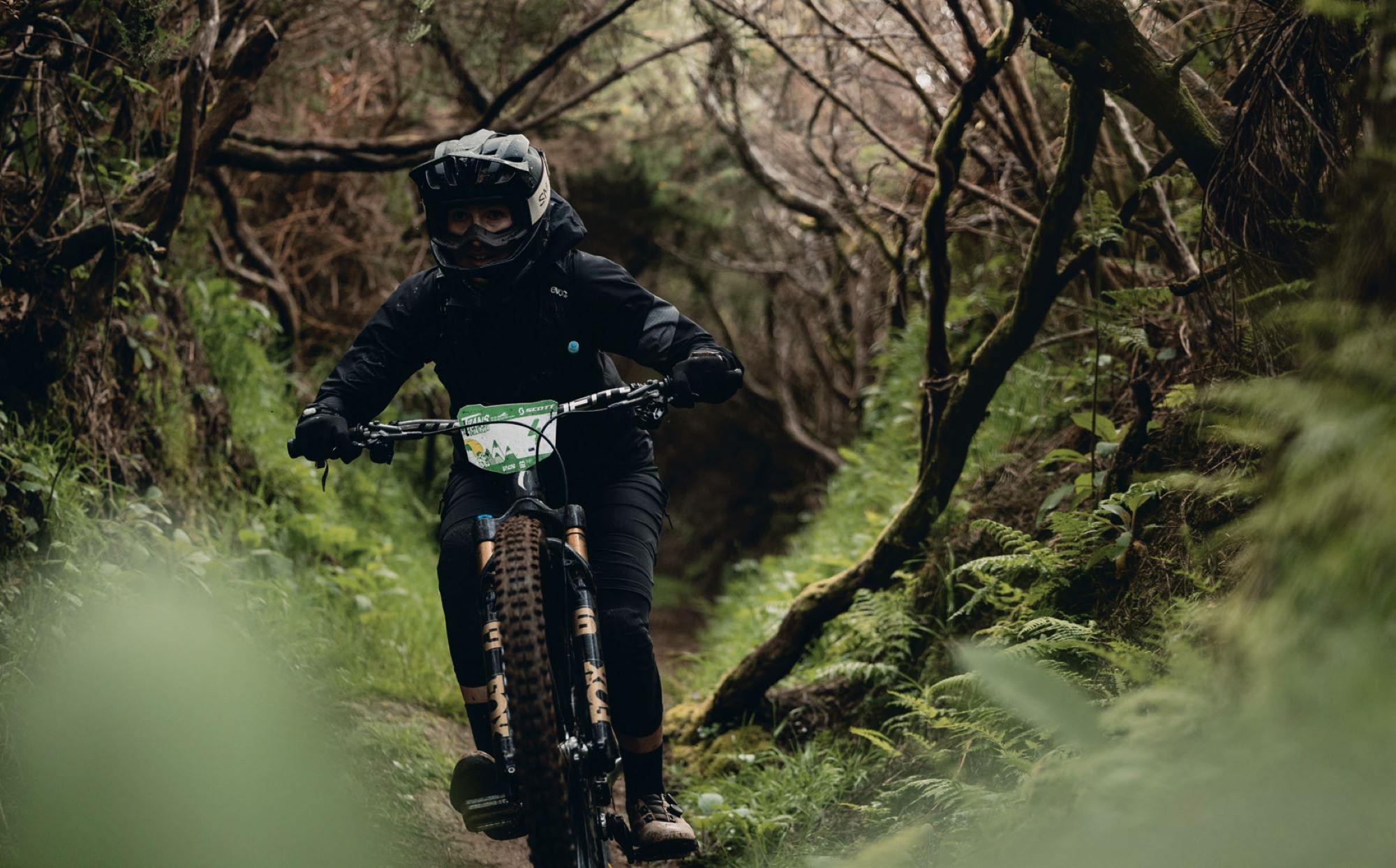
Day 4 – 51 km – 1287m up – 3300m down – 7 special stages
Being awoken by the classic camping sounds of neighbouring tents unzipping, I quickly realised that the footsteps walking past my tent were squelching, which could only mean one thing… wet ground = rain! The camp rumour mill started in the lineup for breakfast—like kids on school camp—“apparently its sunny on the other side of the island” mixed with “I’m going to sh*t my pants if the dirt is wet out west”. After umm’ing and ahh’ing over how to best kit up, a last minute swap from shorts to pants and my Goretex rain jacket stuffed in my frame, we were loaded onto the shuttles in the hope the windscreen wipers would slow down the closer we got to the start of Stage #19.
I feel this is a good opportunity to give a shoutout to the bus drivers of Madeira—it should be noted that Trans Madeira is a mix of pedal- and shuttle-assisted climbing; most days are around ~1200m of spinning pedals, with the remainder being shuttles. While parts of some stages had me whispering a few profanities to myself, the shuttles aren’t for the faint hearted either—a mixture of being precariously perched on the edge of a road that’s a handful of metres in width whilst dodging tourist cars in-between, all whilst winding for endless kilometres—think driving in the tight hilly streets of Wellington…. but on steroids! I looked across to see a fellow competitor hanging on for dear life—any apprehension about the incoming stage be damned, avoiding motion sickness was a challenge in itself!
Dropping into Stage 19—Pargos—we were greeted with a howling wind, drizzle and what felt like a 10+ degree temperature drop with no shelter other than an abandoned cattle shed. Riders set off each day depending on their current overall standing, with two minute intervals in between—you’d be surprised at how many days in a row you manage to be seeded with exactly the same person! You do the math: 140 riders, two minute intervals… if you’re in the front half of the pack, it’s a long wait and, when it’s raining, it’s a cold start with already fatigued muscles.
Fortunately, for the last three days of racing I was seeded with an absolutely epic UK bunch who provided excellent chat, laughs and some reassurance when I felt genuinely concerned I was about to get blown off my bike into a rock garden at the top of a 1500m hill. Many competitors I spoke to had done the event multiple times, with this group having completed three editions, whilst others had done five or six. After completing one edition, I’ll be buying lotto tickets for the rest of my life to have every chance of coming back for more—I’d have to turn off all social media for a month to have any chance of overcoming FOMO should I not be fortunate enough to be part of the chaos again!
Some say, ‘the West Side is the best side’, and I can’t argue with that! Nestled on the faces of Ponta do Pargo and Prazeres, Stages 19-25 were among the best trails I’ve ever ridden—anywhere. Words can’t capture the pure elation of reaching the bottom of each stage, so I’ll borrow the most common sentiment of the day: *that was f**king sick*. I’d been fortunate enough to experience this side of the island previously, but it quickly became clear that I’d only had a small sample, when in reality there was a full smorgasbord of luscious trails. Natural rock gardens kept me on my toes amidst red-dirt singletrack, lined with luscious Madeira greenery that created a strikingly beautiful contrast, so much so that it was easy to forget you were even racing.
Liaisons were hard that day—grassy 4×4 tracks made for slow going on the climbs, and my blisters were such that I found it more comfortable to pedal at a ridiculously slow RPM vs. pushing my bike like the majority of those around me. The sun gods blessed us with their presence in the afternoon, and we were treated to high-speed, loamy goodness with some dustbowls thrown in—four seasons in one day! I found myself in a comfortable spinning rhythm on the final liaison, and sent a quick Snapchat to my wonderful cheerleading friends and family at home, wondering how I was going—I remember none of what I said other than; “it’s really f**cking hard but this is the best thing ever”.
Now, I’m never one to decline a mojito and, upon reaching the sandy shores of our camp in Calheta, I couldn’t say yes quick enough to the offer of a sit down and a cold bevy! After being politely told “GP, you look like you need a sit down”, I handed in my timing chip and parked up on a sun lounger overlooking the shoreline. I wasn’t surprised to see I’d finished the day in 4th—I was riding tidily, safely, but definitely had more raw speed in the tank, especially with the knowledge of a Day 2 stage win in my mind. While I wanted to slot back into 3rd overall, the elation of simply reaching the pointy end of the race was an achievement in itself, and with two days of racing to go, anything can happen—that’s the beauty of multi-day racing!
Day 5 – 38 km – 930m up – 2900m down – 6 special stages
Day 5 was a much shorter day, again dominating the west side of the island, with just five stages and no feed zone as we were scheduled to board the ferry to Porto Santo at 7pm. Once loaded onto the party bus again—and when you’re sitting with the Irish crew on the floor of an overcrowded bus, there really is no truer descriptor—the rolling circus made its way to Galhano, where we witnessed the most impressive clifftop three point turn we’d ever seen upon drop-off. Unfortunately, we left the sun down in Calheta, along with the Aperol Spritz and mojitos, and were once again faced with gale force winds, heavy drizzle and hydration mix that my tastebuds could’ve done without after five days of consumption. Stages 26-28 were exposed along the ridge-tops and my fatigued brain was working overtime to keep both wheels on the ground and my eyes on the trail ahead, especially as this was narrower singletrack than the days prior.
By this point in the race, the arm and hand pump was unreal—I had anticipated this being the case as I’m certainly not used to riding a bike for six days straight (I wish!), let alone descending thousands of metres, but I had underestimated just how much it would impact the rest of my riding form. I was compensating for my tired arms but stiffening up the rest of body, which meant I was getting pinballed around and pushed off-line easily when hitting big roots, rocks and holes. I’m a flat pedal rider, and I was getting sloppy with my weight distribution—I was blowing my feet off the pedals left, right and centre. I know when I’m riding slow and when I’m riding fast, and at the end of each stage I felt that I had so much more speed in me, but I also knew that I was at the limits of my fatigued body’s capacity to ride safely, and I was riding with a consistency that had me in 3rd overall, which well exceeded my personal goal of simply finishing the event.
I was being well and truly tested, and my mentality was playing a crucial role in ensuring my mindset was in check. I spent much of the stages talking to myself and focusing on remaining composed, especially through chunky sections, as I knew that any drastic line mishaps could result in a mid-stage lie down. Yes, I was sore, cold, tired and my blisters were hurting; yes, I was a little frustrated at my riding; and yes, I knew I wasn’t riding my best. On the flip side, each stage finish brought us closer to the end of the race. I was surrounded by great people, in a beautiful island paradise, living a bucket-list dream I’d worked so hard to prepare for in the months leading up to that moment.
Any misgivings I’d have about how I’d ridden a stage were gone in the 30 seconds it took for the crew I was riding with to reach the finish line, drowned in a sea of collective excitement and relief that we’d survived! Yes, the physical component of a multi-day event is crucial, but keeping yourself in check mentally is equally important. The highlight of the day was Stage 29—Mamma Mia—where we broke through the cloud, and dirt sliding was replaced with dirt surfing upon being treated to delightful loamy goodness.
Day 6 – 35 km – 1350m up – 1350m down – 4 special stages
You’d think that after five nights of tent life, I’d be looking forward to sleeping in an actual bed at our hotel on the island of Porto Santo. Whilst this was true, there simply aren’t enough positive phrases in the dictionary to describe how excited I was at the concept of emptying my entire bag onto the floor, as well as having a bathroom to myself, and all the space in the world to battle with getting my knee pads on in the morning. I can’t even begin to describe the relief I felt walking out the hotel room door on day six—my mindset was focused on finishing, and all I was visualising was reaching the bottom of Stage 35.
The blisters on each of my heels were now the size of Ritz crackers, and we were in for a 1350m climb day, most of which would be hike-a-bike. I was lucky enough to ride these stages in a girl’s train with Becci Skelton and Amy Watts, with Becci aptly describing the overarching sensation associated with any hike-a-bike as being “irrational irritation”—a sentiment that couldn’t be more accurate, and characterised my feelings toward the entire day. I’m not sure if it was to our benefit or detriment that we could see the entire hike-a-bike distance from the bottom to the start of Stage 32—we were midway through the pack on our way up, watching the riders wind their way up the hill face, little ants in the distance. I toggled between my bike on back and pushing it up the hill and, funnily enough, neither provided any degree of comfort.
Across all four stages, we were treated to fresh, never-raced trails enveloped by all-consuming rugged coastal vistas, in some cases barren in a way likened to no-man’s land, or Mars (whichever way you’re inclined). After girl party training our way down stages 33 and 34, the relief of reaching the start of Stage 35 after six days of riding was inexplicably good. Honestly—the rest of the day was a blur. I’m not sure if I erased the hike-a- bikes that followed from my mind or if it was the post-race beers on the beach after completely depleting myself of energy and fluids, topped off with copious poncha’s (a Madeiran speciality) that followed, but I was satisfyingly knackered. I ended up finishing 3rd overall in the women’s category— as if completing a bucket list item wasn’t enough of a treat! For the next three days I felt hungover—not from the ponchas, but from finally standing still after six days of nonstop movement.
All in all, this was an absolutely incredible journey from race sign up to the final post stage high- five’s in Porto Santo. If this isn’t on your riding bucket list, make some room and add it now.

Destination: Silvan
Words Liam Friary
Images Henry Jaine
The history of this land stretches back to the early days, when farmers burned the native bush to clear it for farming, with scrub burning remaining a regular practice until the 1980’s. In the 90’s, the Griffin family purchased the property and after one rotation of radiata pine, began transforming it from a commercial forestry operation into something special for the community.
Trail development began in earnest in 2014 through a partnership with the MTB Trails Trust, with the first stage network completed by 2018. After the final pine harvest in 2019, the Griffin family made the pivotal decision to retire the forest from commercial production and focus entirely on recreational use, amenity and environmental restoration.
Post-harvest, the Silvan Forest team moved into hands-on management, investing in rebuilding and expanding the trail network, with support from local volunteers and sponsors. Their vision extends far beyond just mountain biking—they are intending to create an industry-leading example of native regeneration, seed source enhancement, and strategic placement of exotic species to create a unique and enduring forest and recreation asset for the wider community. Today, Silvan Forest MTB Park boasts over 40 kilometres of single-track trails designed for riders of grades 3 to 6, all of which are accessible year-round and completely free to the public. The forest now features a diverse mix of macrocarpa, blackwood, eucalyptus, and wonderful patches of original old- growth native bush—along with the new plantings and naturally regenerating bush, creating riding surfaces and experiences quite different from anything else in the Nelson Tasman area.
Since those initial trails, significant progress has been made with permanent forest plantings, an expanded trail network featuring several new Grade 5 options that showcase the steeper terrain and original native gullies, creating more seamless linkages between the Silvan and the adjacent Kingsland Forest trail network, and the establishment of new facilities including the ‘Silvan Steps’ amphitheatre as an events venue.
Matt Griffin, alongside his father Rick, has been at the helm of plans to transition the forest and significantly expand the trail network in the coming years. Matt welcomed us down to experience their trails. I was eager to ride this location, which started as a working pine forest and is evolving into a solid destination for biking in Nelson Tasman—aiming to emulate the huge success of other unique local destinations like Cable Bay Adventure Park and the Wairoa Gorge.
I had to dodge floods, and some of the terrible weather patterns the top of the South Island has been battered by, just to get there. This meant our original plans had to be scrapped, and I had to find new dates on the calendar and refresh the weather apps to find a good window. It wasn’t easy in the middle of winter! Luckily, some clear and cold weather was forecasted, so I jumped on the opportunity to make this trip happen. The main crew would consist of Matt Griffin, Kieran Bennett, and myself. Amanda Pearce and Chris Mildon would also join us for one morning, to ride their hand-dug trail, De La Luna—which I’ll expand on later in the piece.
The Riding
The trail network at Silvan Forest showcases remarkable diversity, featuring mixed terrain and carefully crafted trails that cater to all riders’ abilities. The main climbing route—Alpha trail and its various sections—proved efficient and enjoyable thanks to the Santa Cruz Vala I was testing (see the full review in this issue). As the trail winds its way up the hillside, it offers expansive views across Tasman Bay. What sets Silvan apart is its strategic positioning on predominantly north-facing slopes that receive generous sunlight throughout the day. This geographic advantage makes it an exceptional year-round destination, particularly during the shorter winter months when other trails might be shrouded in the shadows and are often damp. The open canopy allows the sun’s rays to dry out the trails creating pleasant riding conditions even in the depths of winter. Even after a week of significant rainfall leading up to our visit, the trails remained in good condition. I particularly welcomed this after a rather wet winter in the North Island.
From the elevated sections, riders can choose their descent based on appetite and ability. The Santa Cruz Vala allowed me to navigate Silvan’s approximately 40 kilometres of singletrack efficiently. The driving trail development philosophy from 2014 has been ‘most of the trails for most of the riders’, so while the core trail network was built around intermediate-grade trails, recent developments have pushed the boundaries to include more challenging options spanning grades 4-6, ensuring progression pathways for advancing riders. The dedicated team at Silvan Forest, led by Matt Griffin and Chris Mildon, alongside the dedicated and unruly volunteer trail builders from the Richmond Hills Trail Carvers, have ambitious plans to add another 30 kilometres of trail within the next five to ten years. Many of these future additions will wind through areas of stunning original native bush, which will add further diversity to the trail network. As the replanted hillsides mature, they will provide a contrast to today’s open, fast- flowing trails, offering riders entirely different perspectives on the same landscape. I believe the diversification of this once-cleared then commercially forested, and now regenerated, piece of land for recreational purposes is a real gem for us and future generations.
Silvan Forest MTB Park delivers a compact yet remarkably diverse riding experience across varied terrain. During our visit, we sampled many of the park’s signature trails, including People’s Choice, Ari Mahoe, Exodus, Goliath, Spittrock, CrankYanker, De La Luna and Jericho, among many others. The trails encountered everything from fast and flowing descents to technical jump lines and tighter, rockier sections. Some trails are gnarly hand-cut from top to bottom, creating that classic, hard, techy riding that is so unique to Nelson. Despite the terrain’s natural steepness, most trails offer a good fall line. You can tell the trails have benefitted from the thoughtful planning of features, corners which ensure speed is maintained and elevation loss is good without being ultra rapid. Nearly all trails maintain those stunning bay views, making even the most challenging sections rewarding. The quality of trail construction and ongoing maintenance reflects the serious dedication that Matt, Chris and the Trail Carvers invest in the park. Several super fun and accessible freestyle sections have also been added over the last 12 months, by Kurt Lancaster and the team from Living Trails, which have ensured even more diversity to the Silvan network, and see scores of kids heading into the park each day after school.
De La Luna trail showcases what can be achieved when passion meets persistence. It first emerged from the Juliana Bicycles NZ trail project during a particularly challenging year for the mountain bike industry—we’ve all heard the stories of the boom-and-bust cycle of the industry during and post pandemic. Instead of getting hung up on those industry issues, the team at Hyperformance Hardware (Juliana Bicycles distributor) decided to put time and effort into building a new trail. This provided an opportunity to channel their energy into something lasting, resulting in the 1100 people- hours of work that went into creating De La Luna.
Leading the charge was Amanda Pearce, Sandra Williams, Mike Stylianou and Chris Mildon (the trail builder and gorse-cutter extraordinaire) who spearheaded this ambitious hand-digging operation. Chris had a strong and loyal core digging team of about eight people around him that were recharged at the end of each dig by baked treats. The trail building crew turned out rain or shine for around 50 weeks, and there were about 80 different people who can proudly say they put some mahi into this trail over the year. The trail demanded new skills and serious physical endurance as the team battled through gorse, clay, and rock across all four seasons, and required a high level of discipline to maintain the grade 4 target. De La Luna is built through some steep, typical Nelson terrain, and while it would have been easier to fall into the dreaded grade increasing fall-line trap, good discipline with maintaining target gradients at every point ensured the right result. The trail’s name, De La Luna, honours Luna, the Griffin family’s black dog, who roamed with us on most of the trails we rode. After one year of hard work and dedication the trail, with a perfect 10-degree gradient, was ready for all to ride.
As soon as you drop into De La Luna, the trail immediately reveals its hand-built character— every corner, camber, and feature carry the essence of handmade craftsmanship over machine precision. The trail’s Grade 4 technical demands become apparent quickly, with exposed sections that require genuine commitment and bike handling skills. There’s something refreshingly honest about the trail. It certainly doesn’t try to flatter your riding—instead, it challenges you to rise to its standards. The hand- cut nature means every one of the 20 turns is slightly different, preventing you from settling into a rhythm and keeping your attention fully engaged with the terrain that lays in front of you.
What makes De La Luna truly special is its diverse character across the 2.1-kilometre descent. The trail opens with those wide, exposed views across Tasman Bay, offering brief moments to appreciate the landscape before diving back into more demanding terrain. As you progress, the trail transitions through tighter, more intimate sections where the hand-built features really shine, before eventually delivering you into some nice native bush sections toward the exit. The trail rewards patience and good bike handling over raw speed.
Perhaps the slump in the bike trade isn’t a bad thing after all, as it could lead to the construction of more trails for everyone. However, a balance between the two would be beneficial. I’m impressed by what a year’s worth of hard graft can achieve. I commend Hyperformance Hardware for making something for the mountain biking community rather than getting bogged down by the state of the bike industry.
Hospitality
There’s accommodation at Silvan Forest with recently constructed rentals at the bottom of the hill. These two bed/two bath units feature sleek fit-outs and stylish furnishings, making grabbing some grub mid-ride or unwinding after days on the trails easy. While the Nelson Tasman region offers plenty of accommodation options, these deliver something uniquely valuable—you’re literally at the trailhead. I particularly liked that there’s no morning drive to get to the goods, no packing bikes onto cars after a long ride. The well-stocked kitchen allowed us to easily prepare meals and fuel up before heading straight back to the trails, creating that seamless flow between riding, resting, and riding again.
When you factor in the region’s exceptional craft beer scene, Nelson Tasman truly shines. The top of the South Island is home to some of New Zealand’s finest hops, and after experiencing Silvan’s trails, we sampled these legendary ingredients at Eddyline Tap Room, which doubles as a taqueria (Eddyline also are the dearly loved primary fluids sponsor of the Trail Carvers). The place was bustling on Friday night—always a good sign—with a relaxed atmosphere that perfectly complemented their excellent beer and delicious food. Sitting there, post-ride, with a cold beer in hand and food arriving at the table, I realised that it’s not just about the trails—it’s also about the people who surround and support riding culture. Sometimes, the best part of a riding destination isn’t just the trails themselves, but how you connect with the people behind the scenes who make everything seamless for us to enjoy. Nelson Tasman has a very high concentration of trails and a very engaged riding community, which is evident every time I visit here.
What the Griffin family and the local community have created at Silvan Forest goes well beyond just another mountain bike park. They’ve transformed a working pine forest into something genuinely special: a 40-kilometre network of thoughtfully built trails that showcase both the natural beauty of the Nelson Tasman region and the potential of community-driven trail development. The transition from commercial forestry to recreational haven tells a story that’s becoming increasingly relevant as other local (and national) landowners investigate alternate uses for steep terrain close to residential populations. As historic uses become less viable, landowners are choosing a long-term strategy with a community focus, rather than short-term profit.
The riding itself delivers on multiple levels. Those north-facing slopes aren’t just a sun trap—they enable pleasant riding all year round, especially during winter riding conditions when other locations could be dark and dank. The trail network’s continuing evolution from intermediate- focused routes to the current mix spanning grades 3-6 means there’s progression available, whether you’re starting out or pushing limits. Silvan Forest MTB Park offers a variety of trails, each with its own unique features and these readily complement the wide range of excellent MTB options in the wider region. Even with only a few days, I was able to experience a wide range of Silvan’s trails and will be venturing back.
Perhaps what impressed me most was how everything connects seamlessly. The trailhead accommodation means you pedal from the front door, the well-maintained trails reflect serious ongoing investment and commitment, and even the local scene—from Eddyline’s craft beer to the broader Nelson Tasman riding community—feels aligned with what Silvan represents. With plans for another 30 kilometres of trail development over the next five years, Silvan Forest is clearly just getting started. The vision of combining native regeneration with world-class mountain biking creates a template that other destinations would do well to follow. Sometimes the best riding experiences aren’t just about the trails themselves, but about finding places where everything from the terrain, the community, and the vision comes together perfectly. Silvan Forest MTB Park delivers exactly that kind of experience.

Crankworx Summer Series
Words & Images Liam Friary
The magnetic pull of Aotearoa’s southern landscape never fails to captivate my spirit. When the invitation arrived to journey to Christchurch for the Crankworx Summer Series, there wasn’t so much as a moment’s hesitation in my response. I packed my gear and threw in a 35mm point-and-shoot film camera – an Olympus MJU II – to capture it.
The thriving mountain biking community in Ōtautahi continues to expand impressively and leaves me in awe each time I return. Within hours of touching down, I found myself pedalling up the Port Hills and into the trails of Victoria Park; it wasn’t long before I was lost but, luckily, a smartphone makes pinning locations easier. After that I stayed not far from the back wheel of the local guides. The hours flew by and as the sun dipped we headed for some grub and beer at Moon Under Water. True to form, the place was absolutely chocka, with barely room to squeeze through the animated crowd of riders and locals. The telltale collection of mountain bikes stacked haphazardly out front proves this is indeed the place where the biking community congregates.
Before immersing myself into the Crankworx spectacle, I ventured deep into the backcountry. I like to ride before I watch riding as it gives a good energy. The alarm screamed, I ran a quick shower, and we were off before the first light of dawn—heading out to Craigieburn for a couple of hours of riding. The best way to get the most out of the trails is on an eMTB so, with the help of a local guide, we did the ‘classic hits’ of Craigieburn. It was so damn lush through the beech forest, with the mountains peeking out every so often. The trails keep you on your game with technical rooted features, exposure, and flat out fast sections—where I was hauling a bit too much at some points. Towards the back end of the ride, we filled our bottles with water from the river and washed our faces. The stoke level was high as we pedalled back and I cracked up when my eMTB ran out of juice just before reaching the truck. The legendary Sheffield Pies warranted not one but two visits, to fuel and refuel my energy stores. After a quick wash at my digs I managed to arrive at the Crankworx event in time to catch the afternoon’s competitions.
After the disappointment of the inaugural event’s cancellation, anticipation had built tremendously for this second attempt. The electric atmosphere was felt from the moment the Uber driver drew up close to the event. This was a real vibe, with groms left, right and centre, frothing. The industry’s prominent presence, combined with the genuine excitement of the locals celebrating this event in their hometown, created an infectious energy. I walked around chatting to people from the biking scene and it reminded me that we are a strong community. I mean bikes are a bloody good tool for bringing people together. The crowd was a wide spread of age groups with heaps of families. It makes me think these events keep the next generation inspired. The crowning spectacle of the Crankworx Summer Series is the Slopestyle competition. The wind had been playing a bit of havoc during practice so it was decided to move the event to early Sunday morning. I walked up the hill—the crowd was littered everywhere, in high spirits waiting for the next rider to drop. The hillside hype was infectious and being a part of live sporting action is something really special. The athletes really threw down and this grassroots event even managed to rival its bigger brother. Those few days immersed in the Crankworx Summer Series, combined with a quick trip into the backcountry, reminded me just why bikes—and the mountain biking community—are so bloody good.
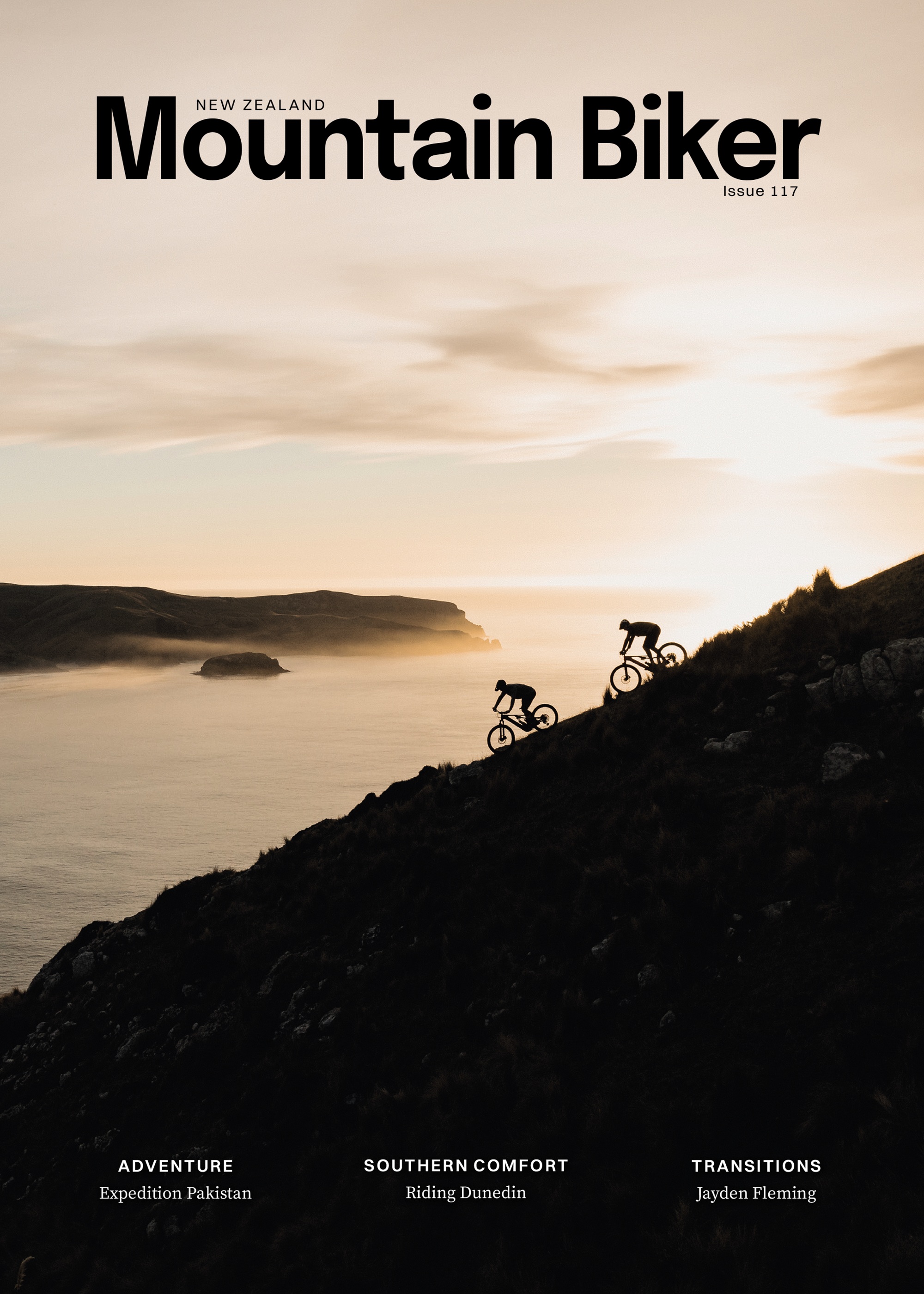
Metronomic Meditation
Words & Image Gary Sullivan
“It gots to be accepted;
That what? That life is hectic.”
C.R.E.A.M. by Wu-Tang Clan
Although they’re all credited with writing their legendary song, C.R.E.A.M., I’m pretty sure it didn’t take all of the Wu-Tang Clan’s nine iconic members to write that lyric from their debut 1993 album. Whether they all pitched in, heads bobbing as they gathered around a smoking ashtray, behind a mixing desk, or if it were just a single MC with a pencil and notebook scratching notes while on a grimy subway, one thing is for sure: there was one purpose. Whether a posse of nine or an army of one, single-mindedness helped create the masterpiece, confirming we need to accept that, indeed, “life is hectic”.
It’s how we deal with our hectic lives that matters.
And there are many ways to deal with how hectic life has become recently. For most, it’s a combination of different things that take their mind off the busyness of life; for others, it’s singlemindedness, or a single act, that calms them, enabling a refocusing of the mind—away from the stressors of daily life. If you’re reading this magazine, I’m sure that—for you—one of these things is probably mountain biking; a single-minded act. I know for me, personally, at times, riding is more than just a sport; more than just an activity to fill a couple of hours. It’s a meditation of sorts: a metronomic meditation.
Metronomic meditation. I didn’t come up with this phrase but, when I first heard it, it struck a chord. Meditation is “a practice that involves focusing or clearing your mind using a combination of mental and physical techniques”. Both are things that mountain biking requires. Particularly on a technical descent or fast-but-flat singletrack, focus is paramount. I can think of countless times where, had I not been 100% focused on the task at hand, I’d be down a bank, over the bars, or have slid out on an ice-like, wet clay surface. That need for focus means clearing my mind of clutter and forgetting the day-to-day. There’s no space for thoughts other than those required to keep the ship upright, and should my mind wander back to ‘normal life’ even just a little, the consequences could be painful.
Several factors add the metronome-like aspect to mountain biking. Firstly, the pedalling. Stop pedalling while on the flat or going uphill and we fall over; it’s pretty simple. If we’re out for a big day on the bike, the metronome- like effect of pedalling can last hours with only a marginal variation of cadence. It’s simple to ignore, but we’re often pedalling 80 times a minute—multiply that by three hours and 14,400 rotations, which is no doubt metronomic. Then there’s the metronome of our breathing, which is directly related to our pedalling cadence and power. Both affect our breathing, how deep it is, and its frequency.
Boil it all down and it’s pretty basic, really. Between our 100% focus on the trail and the subconscious metronome of our cadence and breathing, we can slip into a trancelike state. Now I think about it, some might call this the ‘Flow State’, but for me, ‘Metronomic Meditation’ is equally adept because we essentially remove ourselves from reality and are forced to cleanse our mind of the day-to-day—a ‘mind bath’ perhaps.
As much as I’m a mountain biker at heart, I spend a lot of time on my local roads, asphalt or gravel. This riding ticks the sporting and physical aspects of riding for me, but I find it’s only partially metronomic meditation. Roads are wide, and I don’t need to pick a cautious line between obstacles or weight my pedals just right across an off-cambered section. I can just concentrate purely on pedalling and staying on my side of the six-inch wide white line, still able to contemplate my daily problems and figure out what I’m having for dinner. There’s undoubtedly some metronomic pedalling and breathing happening, but it’s hardly meditation.
Life is hectic. It’s fair to say, at least for me, mountain biking is the truest form of single- minded metronomic meditation that eases that hecticness (is that even a word?!), if even just for a few hours a week.

Give it time
Words Lester Perry
Image Henry Jaine
Some bikes are ridden so often, and in so many moments and places, that to part with them becomes almost impossible.
They develop value to the owner which has no connection to reality, so selling them is not only unsatisfactory from a financial perspective, but an emotional wrench that can be too difficult to execute.
Same goes with cars.
Our relationship with our vehicle is kind of like the way we treat drivetrains. There are essentially two ways to do that: keep it fresh by replacing the chain every thousand kilometres; keep an eye on the chainrings and replace them when necessary—and hope that doing those things will make the cassette last longer than it may otherwise. Or the other way, which is ride the stuff until it more or less dissolves, then replace the lot in one mad spend-up after a couple of years.
The more traditional among us get a nice set of wheels when they are able, then trade in or up as often as once every couple of years. The alternative lot buy a vehicle that ticks the required boxes and drive it until it dies—or they do.
That has been my style and, so far, I have outlived half a dozen of them—not counting the odd ones I owned briefly in my youth, and the more sensible ones I have shared with my partner.
The last three have been Toyota HiAces. These venerable buses are examples of what I would argue is the Kombi of the South Pacific. These days, actual Kombis are like high end bicycles: their price bears no relation to their functionality. Don’t get me wrong, they are cool things. In their primitive way they will still be clattering along when cockroaches inherit the planet. But, for everyday abuse and long- lived up-for-itness, the HiAce is hard to beat.
Also hard to kill.
The late 80s white example we caned for a decade, had a slipping clutch for at least five years, which Glen used to repair using positive thinking. Just when we thought it wasn’t going to get whatever pile of stuff we’d loaded into it to the top of the next hill, she would send it kind thoughts and it would take another deep breath and soldier on. Some dear friends took it off our hands and toured the country in it, before selling it to a wrecker in Christchurch.
The one I almost wear as a totem is called a Regius, but it is a HiAce at heart. Sidebar: I reckon a good career, if I was a younger man, would be as a consultant to Japanese car companies, helping them to avoid coming up with names like ‘Regius’. And HiAce for that matter. But, I digress. I have heard this model referred to as a “Loser Cruiser”, but it has carted me, my partner, numerous bikes, a kayak, and a caravan over a quarter of a million kilometres around our country and still goes like it did when I got it.
I have just replaced it. I decided that if I get a decent HiAce now, it will probably be the one that stays on the road longer than I do. I took delivery of it last week, and told a friend about it that evening. I honestly thought she was going to cry. In her view, the old van is part of me. “Surely you can’t be going to sell it!” she exclaimed.
Well, that is the plan.
That was the plan. Now? I am not so sure. Yes, yes, I am. Out it goes.
So what’s the attraction for me, in a HiAce? Mainly; that it’s a van. You can drive around in it. You can keep a bike in it. You can get changed in it, take a nap in it, take shelter in it. You can cart a collection of bikes and people, a pile of rubbish, or half a house load of furniture. You can go camping in it—at a pinch, you could live in it. We have done all these things and more.
I prefer to get one that is past the number of kilometres travelled where problems would have cropped up if they were going to. It is best if the thing already has dents and scratches in the usual places. That means any imperfections I add to it will be pleasant memories of tight spots or straight fuckups, not heartbreaking blights on what was a virgin body.
The new one (well, new to me) has very little personality. Personality will develop, as bits of bark get scrubbed off the corners, bicycle tyre marks get added to the interior, kilometres get added to the clock and resale value slowly becomes irrelevant because with any luck I will never sell it.
Like one of my road bikes, it will become so valuable to me, it will be more or less priceless.
Give it time.
Join Trail Fund as a member to support our advocacy efforts!
Words Meagan Robertson
Image Callum Wood
Not another mountain bike club membership!? Yes, we know. There’s a lot of hands out asking for your money these days, and a lot less money going around. That said, there’s also a lot of debate and drama over trail users, trail guidelines and trail etiquette – and if Trail Fund is going to continue to put its hand up and suggest some strategic ways forward, we need to be able to prove how many people believe in our cause.
What is our cause?
Trail Fund is the only national body that represents and funds trail builders throughout the country. Over the past 13 years, our volunteer- run organisation has distributed more than 120 grants, totaling more than $300,000, to 50 clubs around the country. We also made sure mountain bikers have a seat at the table when it comes to trails on public conservation land, by joining forces with Federated Mountain Clubs and New Zealand Deerstalkers Federation in 2014 to create the Outdoor Recreation Consortium (precursor to the Backcountry Trust).
Our advocacy representative, Jimmy, has also been working tirelessly for six years to realign DOC’s re-classification of bikes on public conservation land as ‘vehicles’, in 2018. It caused significant delays to projects around the country, leaving several passionate volunteers feeling defeated. It also meant that iconic trailsincluding several Great Rides – did not comply.
It’s been a slow process but Jimmy and representatives from various other local clubs are finally gaining traction, and earlier this year he prepared the Trail Fund submission for the Department of Conservation (DOC) on the modernization of conservation and management. This submission can be found on the Trail Fund website and recommends adopting an effects-based approach, improving resource allocation within DOC and ensuring a more equitable concession system.
Back to the money and membership.
As above, we aren’t doing this for the money – we’re doing it for the memberships, and we will have two different levels – individuals and clubs.
Individual memberships are $8 and include a Trail Fund member sticker – or free when you purchase any Trail Fund item in our online shop for the next two months.
Club memberships – which automatically translate to individual memberships for every club member – will be $25. Clubs will need to be members to apply for funding rounds going forward.
That’s the gist. No drama, little money, big impact.
We look forward to welcoming you to the club – officially!
April funding round now open!
Got your membership sorted? We have two ebarrows and ten Weapon of Mass Creation tools up for grabs – so get your application in now. Applications will be accepted until 15 May.
Learn more:
trailfund.org.nz/products/trail-fund-nz-membership-2
Leatt Products
Words Lester Perry
Images Jamie Fox
RRP $249—ProClip 4.0 Shoes | $119 — Velocity 4.0 MTB X-Flow Iriz Goggle $69 — Glove MTB 2.0 X-Flow Stealth
Distributor BikeCorp
I remember wandering the expo at Crankworx 2020, in Rotorua, when I was called over to the Leatt booth with the promise of seeing something exciting. I was indeed excited as I checked out Leatt’s first range of MTB shoes. It wasn’t perfect, but it showed glimmers of hope that Leatt could become a legitimate player in the MTB footwear game, completing their head-to-toe ethos.
ProClip 4.0 Shoes
Fast-forward five years and I’m rolling deep in a fresh pair of Leatt ProClip 4.0 shoes to review. The 4.0 ProClip is a gravity-focused shoe that aims to protect – rather than be lightweight – without detracting from pedalling performance or power transfer.
There’s no missing the MOZ dial cable lacing system at the front and centre of the tongue. MOZ allows micro-adjust tension, with a pull to release its complete tension. The system makes for an easy-on, easy-off shoe. The dial is simple to use and has a decent rubberised outer edge, allowing it to be tensioned as tight as you’d ever need. I’ve encountered some dial styles that don’t have enough grip to grunt on them, but they work well. Over the front of the foot seems to make more sense than the all-too- common venerable dials on the side of shoes.
My only comment on the MOZ would be that it would be nice to see micro-adjust for tension release rather than the pull release that dumps all the tension in one go… but perhaps I’m being a little picky, and it’s by no means a deal breaker. A nice firm Velcro strap tensions the ankle area; there’s no stretch in the strap, so I can pull it nice and tight. I need to get it in just the right place to give perfect tension as there is no ‘give’ in the strap, meaning once it’s in place, it stays firm.
Visually, the shoe takes cues from the classic skate shoes of the 90s. The ProClip 4.0 doesn’t strike a slim silhouette; they’re a protective item, so we wouldn’t want a shoe that’s too slim. There’s no excess padding to absorb water; once wet, they dry pretty quickly compared to some. The outer is a mid-cut with a higher neoprene cuff to keep the loam and niggly pebbles from entering the shoe. It works great and has the nice touch of being slightly perforated to help with breathability. Heel and toe reinforcements offer some peace of mind that your tootsies should come out unscathed after those sketchy moments when you’re dabbing feet, or clipping a sniper root with your toes.
The gum sole is oh-so-hot right now. It features a familiar waffle pattern throughout most of its length, with strategically placed lugs under the toes and heel for walking grip. Thanks to the RideGrip rubber compound, the platform is surprisingly stable when not clipped in, assisted by a shallow concave section under the arch. A soft EVA midsole makes them comfy on foot while walking or hiking. The EVA does a noticeable job of absorbing chatter and vibrations, helping to reduce fatigue in the feet and lower legs. Traction for walking is reasonable in the dry, and the rubber is tacky enough to offer confidence, although scrambling around in the mud is as slippery as you’d expect; these are riding shoes, not hiking or “all-mountain” shoes. Pedalling stiffness is similar to the pair of Shimano GE-700s I recently reviewed, with a good medium flex for efficient pedalling and comfort for standing in lift queues or hiking jump lines. The 4.0 ProClip could take the win for having the most extended cleat channels in any shoe I’ve seen – there’s a serious amount of fore and aft adjustment, allowing for an almost mid-foot through to under-the-toe cleat mounting if you so desire. Gravity riders rejoice.
Size wise, I found these run on the larger size compared to most, so you may be able to downsize. As with almost all footwear: try before you buy.
Overall, the ProClip 4.0 is plenty comfortable and offers great protection for all eventualities. I like the mega cleat channels; it’s the first shoe I haven’t had to slam my cleat right back on. They aren’t the lightest or stiffest shoes out there but, if you’re more suited to cutting downhill laps, riding shuttles or just goofing off on the bike rather than pedalling significant distances, you can’t go wrong with these.
Velocity 4.0 MTB X-Flow Iriz Goggle
Ask anyone who’s gone over the bars and landed on their face if they think goggles are an essential part of their protective kit, and I’m confident you’ll get a resounding “yes”. Speaking from experience and a nice scar down my cheek, I’d agree. On a hot January day, while practising for a downhill race at Cardrona, in the early 2000s, I stopped on a corner to remove my goggles as they were saturated in sweat and stifling my face. As I rolled back onto the track my front wheel caught a rock, and I was pitched headfirst down a bank. A rock shot the gap in my full-face and got me just beneath my right eye, splitting my face open like a tomato. Fortunately, I sustained no lasting effects other than a scar, but the doctors determined the cut was millimetres from causing severe damage to my eye. The funny thing is, had I been wearing the Velocity 4.0 X-Flow goggles, I’d probably not have overheated and would have kept the goggles on rather than hanging them off my handlebars, and likely walked away from the crash with just a bruised ego and scratched goggles. Goggles or glasses? I’m not entirely sure what to call these. They have advantages similar to glasses but with the extra cushion and a more secure fit. They also have the protection and field of view of goggles, which is, to some degree, the best of both worlds. Mountain bike riders generally don’t see the same speeds as motocross riders, and there’s seldom debris or dust flung from a rider in front, so in the form of the 4.0 X-Flow, the traditional moto goggle has been tweaked to suit mountain biker’s needs.
The use case for wearing goggles has become much broader with the advent of the Velocity X-Flow series from Leatt, which has ruled out – or at least minimised – the downsides of wearing regular goggles. The minor trade-off of having open areas in the frame is that debris could make it into the goggle cavity. I haven’t experienced this, but I imagine it could happen, particularly in the wet, when worn with an open-face helmet.
The fit is similar to that of a good pair of goggles, with a twist. Leatt designers strategically removed sections of the foam padding, allowing for a vast amount of breathability from the top and bottom of the frame. They also nailed the look by keeping them looking like a pair of goggles, rather than the more polarising hybrid goggles/glasses style of some competitors.
The Rideviz lens features permanent anti-fog and scratch-resistant coatings and meets the ‘Military Ballistic Impact Standard (MIL-DTL- 43511D)’ – so the rock that pierced my face wouldn’t stand a chance against this lens! The Iriz tint strikes the sweet spot between being too dark and too light; I find it spot on for almost all conditions, taking the harshness out of the light on open trails but not dark enough to dull the scene too much when in the bush.
My first outing with these on my face was a jaunt aboard an eBike on a muggy, blue sky spring day, not the usual conditions for me to reach for a pair of goggles. The increased airflow over a regular goggle was immediately noticeable. My face didn’t feel sealed in a hot box, and air flowed between the lens and my face, controlling the temperature. The field of view is mega and no different to a quality set of goggles.
The top foam absorbs sweat, which is excellent until it becomes saturated; at that point, I occasionally experience a drip of sweat down the inside of the lens. On a stinking hot day, the X-Flows are still warmer than sunglasses, but not by much. Since the lens sits further from the face than on glasses, they collect less sweat on the lens, and there’s a significant increase in protection, too. The mesh strap is a nice touch, theoretically allowing some breeze to pass through into the helmet vents—a hard one to quantify, but I see no reason it wouldn’t be the case.
I’ve become a fan of these goggles. I appreciate that they resemble traditional goggles, and Leatt has nailed it regarding breathability. I now wear them in situations or rides where I wouldn’t have even considered it with regular goggles—thumbs up.
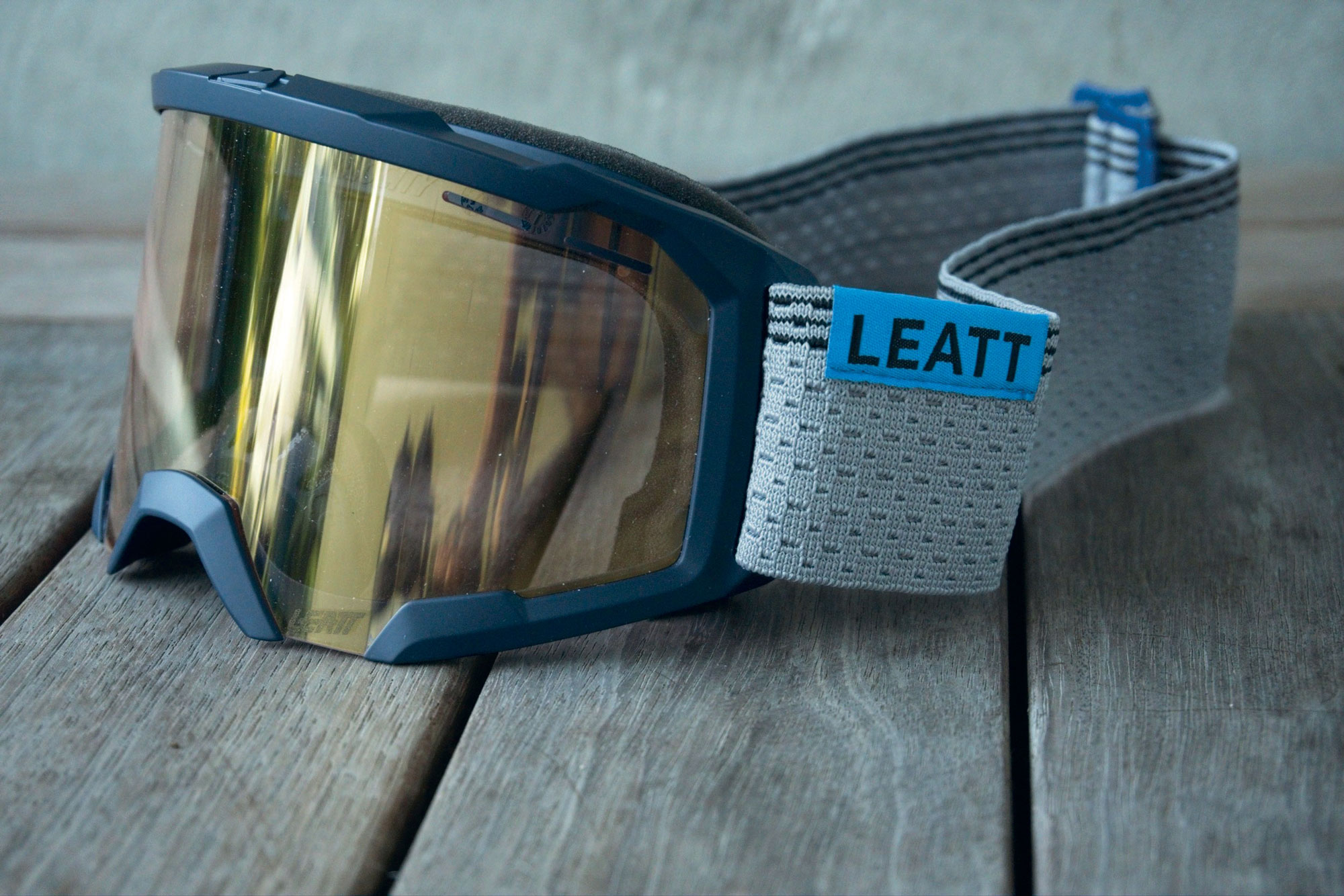
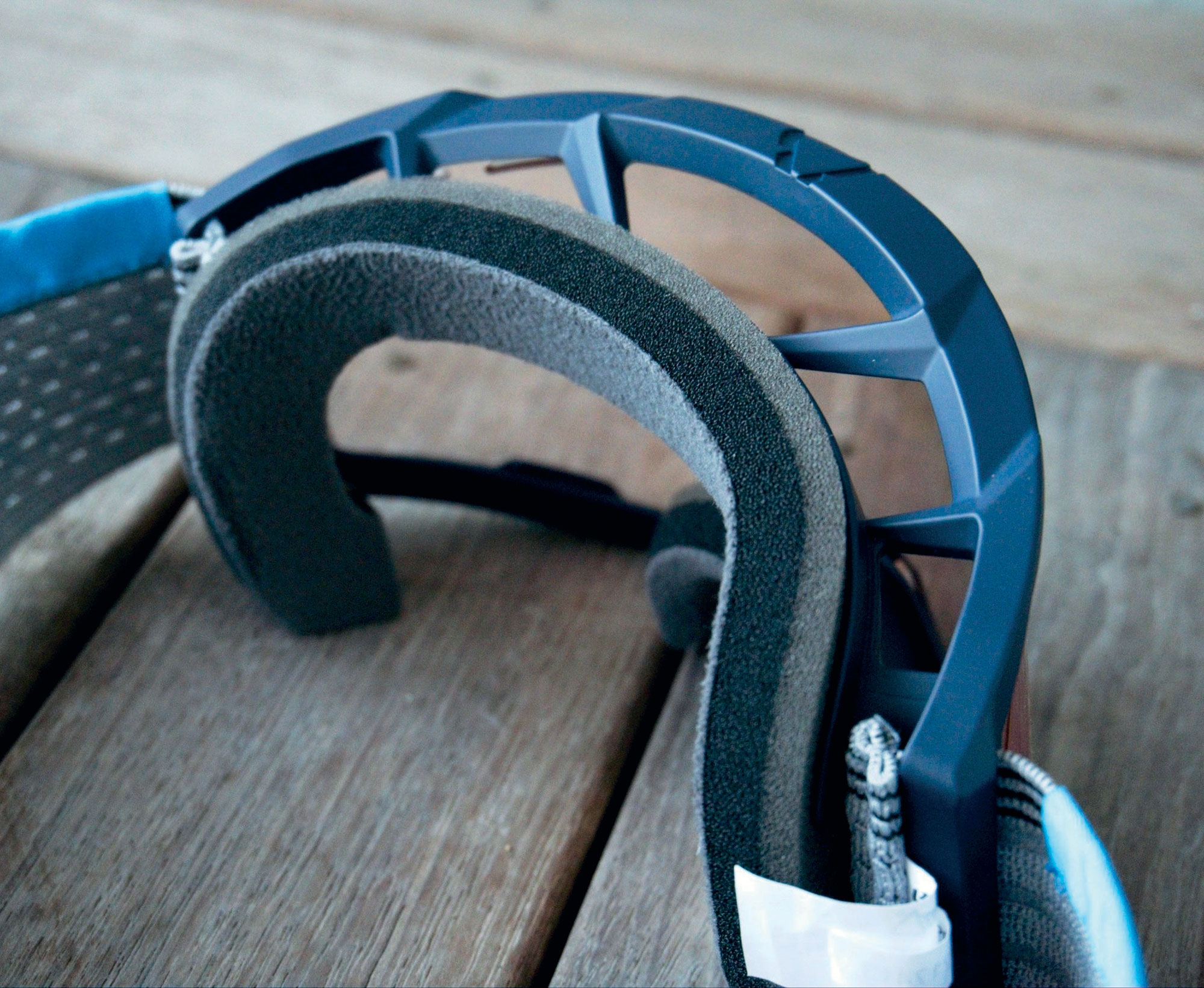
Glove MTB 2.0 X-Flow Stealth
Is it me, or have gloves become a consumable, throwaway item? Back in the early 2000s, a pair of gloves would literally last me seasons, and my riding volume was probably twice what it is now. Since then, quality gloves seem more and more difficult to find, particularly if you’re chasing something lightweight and breathable that will last more than a summer. The stitching, particularly on the fingers, is usually the first to go, and there are only so many times I want to restitch and bodge them to be usable. I didn’t get too excited when the Leatt 2.0 X-Flow gloves arrived for review last year.
I’m pretty finicky about what gloves I’m comfortable in. A minimal palm is key, and I find the fabric tension across the back of my hand needs to be just right—not too tight to restrict movement, but with enough support to keep them snug and avoid bunching. More importantly, they must help keep the palm taut and in place. See what I mean? Finicky.
With a stretch fit and slip-on design, these take a little technique and patience to put on, but once on, the medium size fits my medium-sized hands perfectly; snug throughout with no firm points or obvious pressure points. Fingers are explicitly tailored to minimise bunching when wrapped around a handlebar, and are stitched with a specific thread to aid longevity. The main body fabric is a Leatt X-Flow material, a 4-way stretch mesh that helps with breathability and fit. Knuckles and pinky fingers get an extra layer of thin rubber material for added protection and reinforcement, adding negligible weight or bulk. The backs of the thumbs have a terry cloth wipe.
The palm is made from a single piece of Leatt’s NanoGrip material. It’s nice and thin and has a slightly furry, almost cat-paw-like surface, which gives superior grip in all conditions. The handlebar feel is exceptional, possibly the best of any gloves I’ve worn. Some wizardry in the fabric means the fingers are touchscreen compatible, which is a bonus whether you’re filming ‘shreddits’ with your mates or calling for help after a crash.
After about four months of wearing these gloves, I’m pretty impressed, and they’ve become my go- to. The X-Flow fabric has kept its shape and firm stretch, and all seams are still intact. Although the palm has some stains, it is holding up well with no signs of wear. A resounding clap for Leatt for continuing to make gear that works well and lasts the distance. There is no fast fashion here.
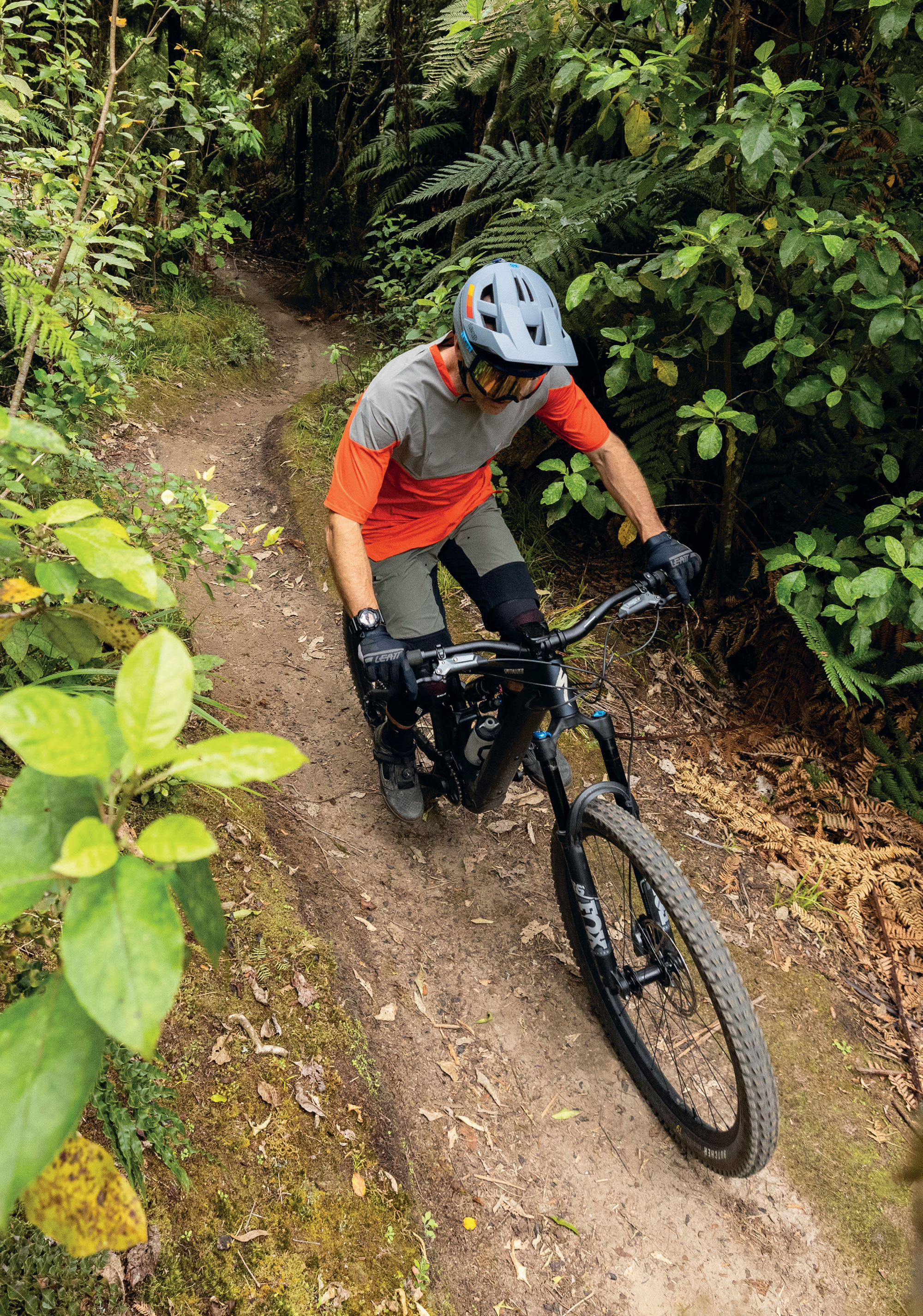

Commencal T.E.M.P.O. Signature
Words Lester Perry
Images Jamie Fox
RRP $9,200
Distributor Commencal NZ
Imagine this: The year is 2020. On a wall in the Commencal design office, there’s a mood board for a bike they’re developing. It’s covered in images torn from magazines and printed by the office laser printer, the products of quick-fingered Google image searches.
Amongst the chaotic collage of images, there’s a jet boat, a compass, a Pyrenean Ibex, a steam-roller with a big red X marked across it, one of those kid’s playground rides with a seat mounted atop a big spring, a metronome with a green tick scrawled over it, and a picture of Eli Tomac mid-whip over a motocross finish jump. Each image highlights a trait of the TEMPO—for example, the snappy handling of a jet boat and the climbing prowess of the Ibex. You get the idea.
Rumours swirled about an upcoming release after a prototype frame was teased online. With a distinctly lightweight XC build and ridden by none other than Pauline Ferrand-Prévot, would the new bike be Commencal’s entry into XC World Cup racing, piloted by PFP herself? Come 20th November 2022, speculation was put to rest as the bike officially broke cover in its final guise, under Hugo Frixtalon, in what is still one of the best bike launch videos I’ve ever seen. A short travel trail bike that would help define the category and embody all the inspiration from that design studio mood board.
Over the last five years or so, there’s been somewhat of an evolution in mountain bike geometry. Before this, if someone was searching for a bike to push their riding—and was into technical, aggressive trails—then a 150-160mm frame was the way to go. This was a necessity, to find the geometry that would be optimal to offer the rider confidence and control when tackling whatever trail lay before them. Nowadays, there’s been a pronounced shift in how designers think about geometry, and we’re finding bikes with travel in the 120-130mm region with geometry that is more suited to how most people want to ride. These bikes sit alongside those with similar travel numbers, but more cross-country-targeted geometry, on bike shop floors—an interesting dichotomy that not so long ago wasn’t the case. Rather than lugging around suspension travel (and associated weight), riders can now choose the geometry they want, coupled with their preferred suspension travel: a ‘Goldilocks porridge’ bike that is focussed on precisely what they want, rather than compromising on geometry or suspension travel.
Enter the Commencal TEMPO: A big bike personality in a small travel package. Designed for pedalling efficiency while retaining the ability to tackle whatever trail is thrown at it. The bike’s metronome graphic points to a key aspect of the bike: pedalling—like a metronome, tapping out a cadence and covering kilometres. Its geometry speaks to its gravity roots.
There’s a lot to like about the Tempo.
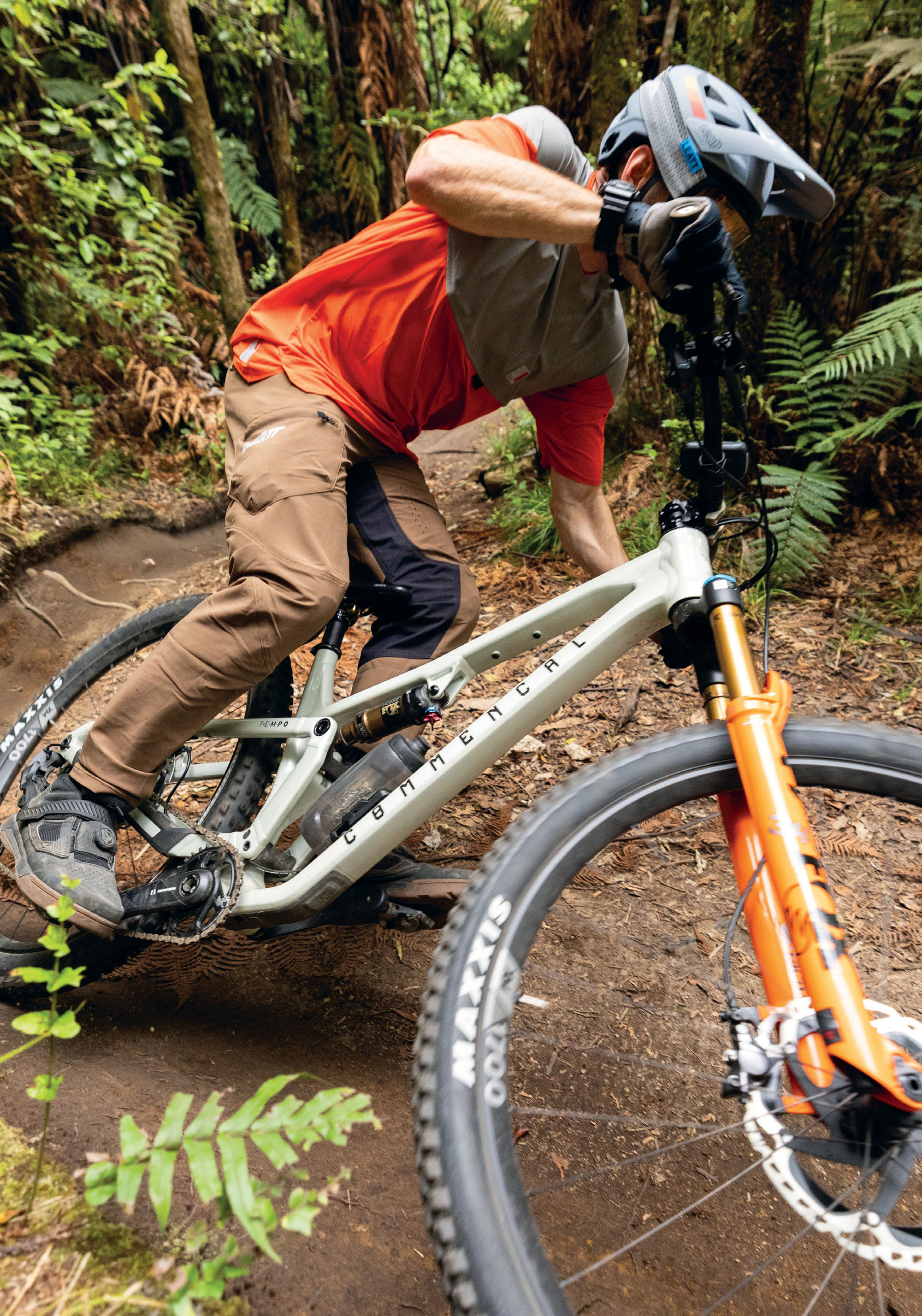
Frameset
The Tempo is based around 125mm of rear travel and a 140mm fork, aiming squarely at the short travel trail bike segment. Offered only in Aluminium, the frame stays true to Commencal’s commitment to avoid using carbon fibre, due to concern about its environmental impact.
The Tempo shares the sleek look of the Meta V5. The frame’s lines flow seamlessly from the headtube down to the rear stays. The low-slung top tube gives ample room for a rider to move around the chassis and helps keep the centre of gravity low.
Designers borrowed the Virtual Contact System (VCS) suspension linkage from the Tempo’s big brother, the Meta V5, which I reviewed in a previous issue. While maintaining the same overall function, the VCS is simplified slightly to suit the Tempo’s smaller suspension package. This virtual pivot design suits the TEMPO to a tee, allowing a reasonably supple start to the stroke, while retaining satisfactory pedalling efficiency.
Linkage pivots are all ‘through axle’ style with an expander cap to help keep them tight. They performed admirably and not once did I need to tighten any pivot point. Bearings are all manufactured by ‘Enduro,’ so I’d expect these to last longer than many OEM options. Three months in, I haven’t had any cause for concern, although most of my riding has been in the dry over summer, so time will tell.
At the end of the chainstay is the now obligatory UDH derailleur hangar, making an upgrade to a T-type drivetrain a no-brainer; a worthy upgrade for sure to get rid of one of those headset-routed cables!
There’s no funky, proprietary stuff happening with the Tempo, we find Boost 148mm spacing in the rear, a 31.6mm seatpost, and a BB92 press-fit bottom bracket—all bog standard, in a good way.
Rubber bumpers across the drive side seatstay, chainstay, and on the lower downtube, help mute unwanted noise and protect the frame from nasty chain chips or debris. Just like the Meta V5, the Tempo is surprisingly quiet on the trail, thanks in part to these bumpers.
Geometry
The geometry numbers on the Tempo are modern but not extreme, striking a comfy middle ground between an Enduro bike and a cross country bike. The ‘medium’ size I rode has a middle-of-the-road 450mm reach, a category-topping 628.5mm stack, and an almost vanilla 435mm chainstay (440mm on L and XL bikes), while the seat tube angle is “better than most” at 76.6 degrees steep. The head angle is “steeper than some” at 65.5 degrees, but quite normal for a bike in this travel bracket. All that is to say; much like the Meta V5, the Tempo has a very balanced feel, with rider weight feeling like it sits slightly further back than on the Meta V5 (which has a 10mm longer reach in size medium).
Cockpit
A complete Renthal cockpit features a ‘Fatbar Lite’ 31.8-mm handlebar that is 760mm wide and has 30mm of rise. It’s clamped in place by a Renthal Apex 40mm-long stem. This setup has a nice balance of weight, performance and value, and the fact that they specified a 31.8mm clamp bar gets a big tick in my book. Not to mention my favourite grip: the ODI Longneck.
Wheels & Tyres
The party bus rolls on a set of DT Swiss XM 1700 rims on DT 350 hubs. As I’ve mentioned in other reviews, I’m a big fan of DT Swiss wheels—and these never skipped a beat. They’re not the lightest, at over 1800 grams, but given the price point and intended use, at least a rider won’t need to give their wheels a second thought as they are burly enough to handle some heavy hits. Their 30mm internal width pairs perfectly with the specced Maxxis EXO casing tyres. Up the front, the DHR II 29” x 2.4” WT with soft 3C MaxxGrip rubber compound is a savvy choice, offering exceptional grip across most scenarios. It rolls nicely, considering the level of grip and soft compound, and is an asset to the Tempo when trails get spicy. The Dissector 29” x 2.4” WT 3C MaxxTerra on the rear rolls well and has enough grip to keep things under control in most scenarios. It’s not a fantastic tyre, but it does suit general ‘trail bike’ type riding – although, if I were riding more on loose, rocky trails, I’d be reaching for something with a bit more bite.
Brakes
A tried-and-true pair of Shimano XT M8100 two-piston brakes help slow the Tempo down and, although they’ve proved reliable, the product managers missed a trick by not speccing a pair of lower-end—but more powerful—SLX 4-pot brakes. The M8100 brakes are okay on short descents, thanks to the MT905 Ice-Tech Freeza rotors, but they suffer on long descents, and I found myself having to haul on the levers more than I’d like. Simply changing to some 4-piston callipers would make a huge difference.
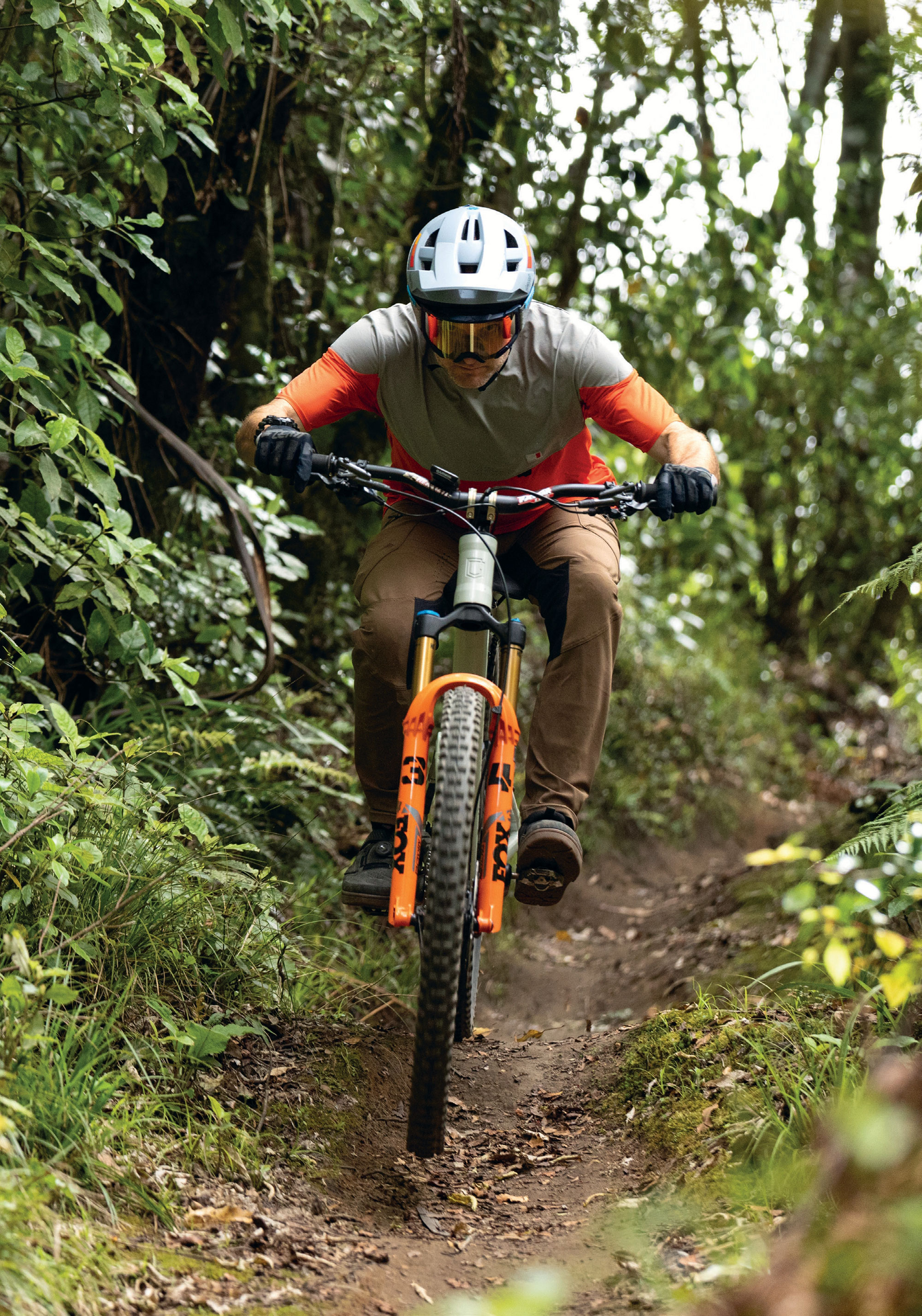
Shock
The Fox Float Factory, in its stock format, suited me perfectly, and no tweaking was required from Commencal’s initial recommendations. There’s a lockout lever in easy reach while riding and I used this a lot while climbing on gravel roads or smooth trails. A dial also offers two additional compression levels when the shock is ‘open’. I played a bit with these but found the bike’s overall feel much nicer in the lowest setting. It certainly pedalled better in the second or third setting than when fully open, but the added compression stunted the feel and was only a bonus on smooth trails where I’d throw the lockout anyway.
Fork
Front suspension is handled by a Fox 34 Factory with 140mm travel. There’s all the adjustment one would want, with low and high-speed rebound and compression dials. Interestingly, the spec sheet listed the fork as having a 51mm offset, something that I thought had gone away almost entirely these days in favour of 44mm versions. I initially thought maybe it was a typo but, sure enough, the bike turned up with the 51mm offset fork. Perhaps smaller travel bikes suit the larger offset? Whatever the case, I never gave it a second thought. Once I was out on the trail, it turned out that a bike still handles fine without the much-hyped 44mm offset. Who would have thought?! (I say this in jest!)
I was stoked on this fork; anything less would hamper the bike’s overall performance, and the 34 took everything I could throw at it. I’m 80kg, so not a lightweight, but I didn’t notice any untoward flex and, regardless of the trail, the fork was controlled and felt well damped. They say something works well if you never have to give it any thought, and this fork was proof of that. I backed off one click of highspeed rebound from recommended and called it good.
Drivetrain
The combination of a SRAM GX Eagle derailleur, shifter, cassette and chain takes care of shifting. While this stuff does the job, it wouldn’t be my first port of call for an upgrade on this bike, given the accessibility, accuracy and reliability of electronic derailleurs these days.
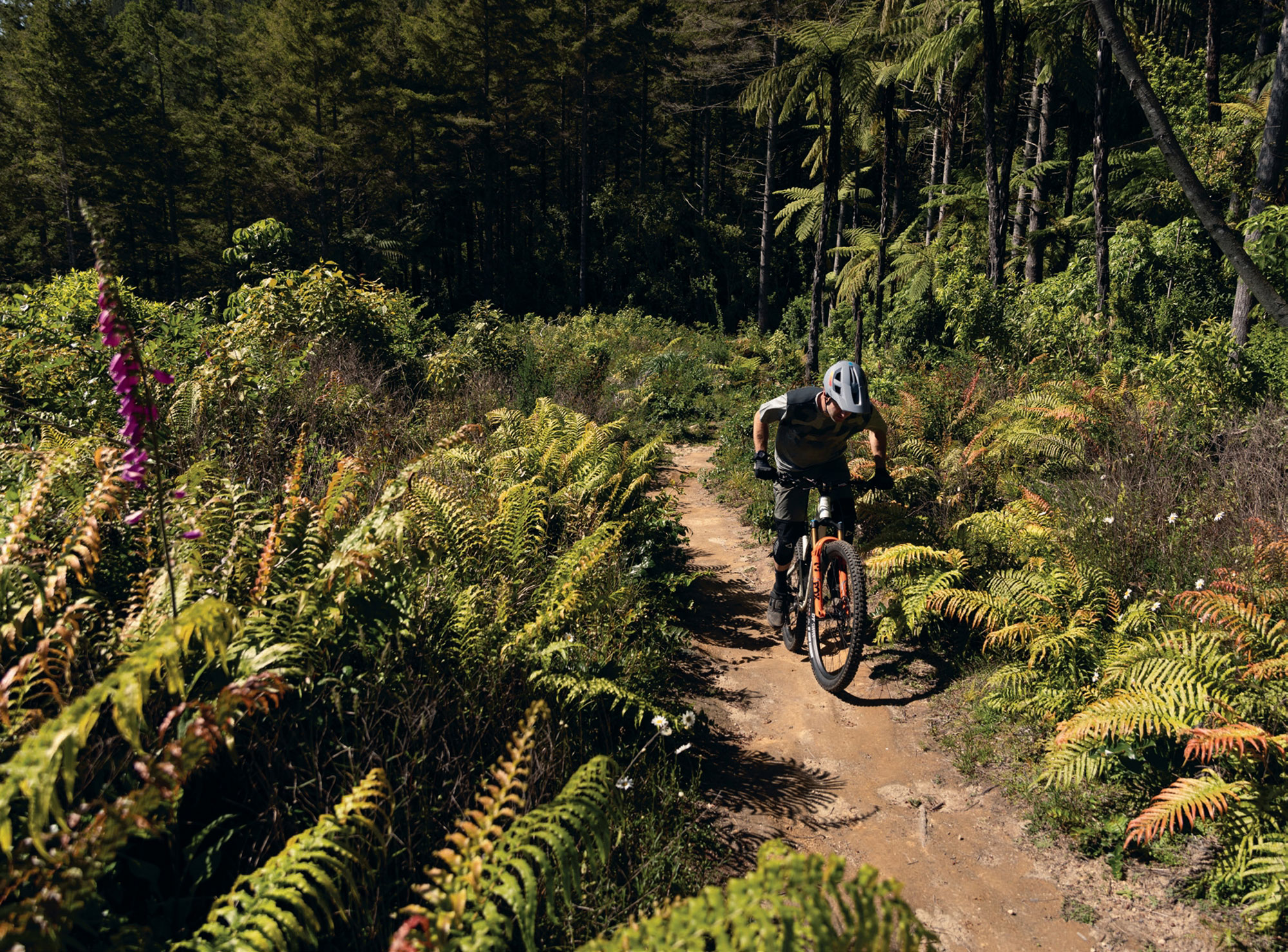
The Ride
From early 2024 until I took possession of the Tempo in October ‘24, I’d been getting about on either a 160-170mm travel Enduro bike or a full-gas XC race bike. So, I was keen to get on board a modern, short-travel trail bike, hoping that it would be more suited to how and where I ride most of the time.
As is the norm for me on many brands, I sit between the medium and large recommendations on the Tempo, so I chose to size down rather than up. With the steep seat tube and short reach (450mm), the bike felt short when seated but put me in a nice central position between the wheels, and the ample stack combined with the 30mm rise bar put my hands up relatively high, giving me a distinct feeling of confidence; helping the bike feel like it would handle more than it’s suspension travel numbers would first suggest.
I’d convey the vibe of the bike as “playful”—akin to a big wheeled BMX in many scenarios. It excels when you’re being creative on the trail and allows for a super dynamic riding style; jumps, manuals, Scandi flicks and nose bonks are all in the Tempo’s remit, but it’s equally at home just cruising around in more of a ‘cross country’ mode.
Seated climbing is excellent. The steep seat tube helped put a good amount of weight on the front tyre, helping retain control when threading the needle between obstacles or up steep switchbacks or steps. Climbing steep pitches out of the saddle, the suspension extends nicely, giving a firm platform to push against and a relatively snappy feel. At over 14kg, and with components designed for longevity rather than light weight, it’s unlikely a rider would be getting any climbing KOMs on the Tempo. Still, at least it gets you to the top of the hill efficiently and without feeling like you’re dragging an anchor.
I commented in my Meta V5 review about how easy it was to change directions and drive through turns, and the Tempo retains this feeling. It straight-up rips turns—flat or bermed. I have fond memories of blasting through successive steep berms at the Whangamata MTB park, surprised by how it transitioned from one to the other. The only drawback of short travel like this is that rough and loose corners take a little more finesse to maintain traction; less travel means less sag and, ultimately, less traction.
Snapping out of turns, and under power while coming from a dead stop, the bike gets up to speed well and there’s no excessive loss of energy to the suspension.
Descending on the Tempo is surprising. It’s not the first small-travel bike to ride like it has more travel, but it would be one of the better ones, leaving nothing on the table. With only 125mm of travel, it can’t offer a big bike ‘buttery’ feel as it sits into its sag, but it does a great job of quieting the chatter on the trail. It doesn’t blow through travel to an uncontrolled or harsh bottom out during larger hits or g-outs.
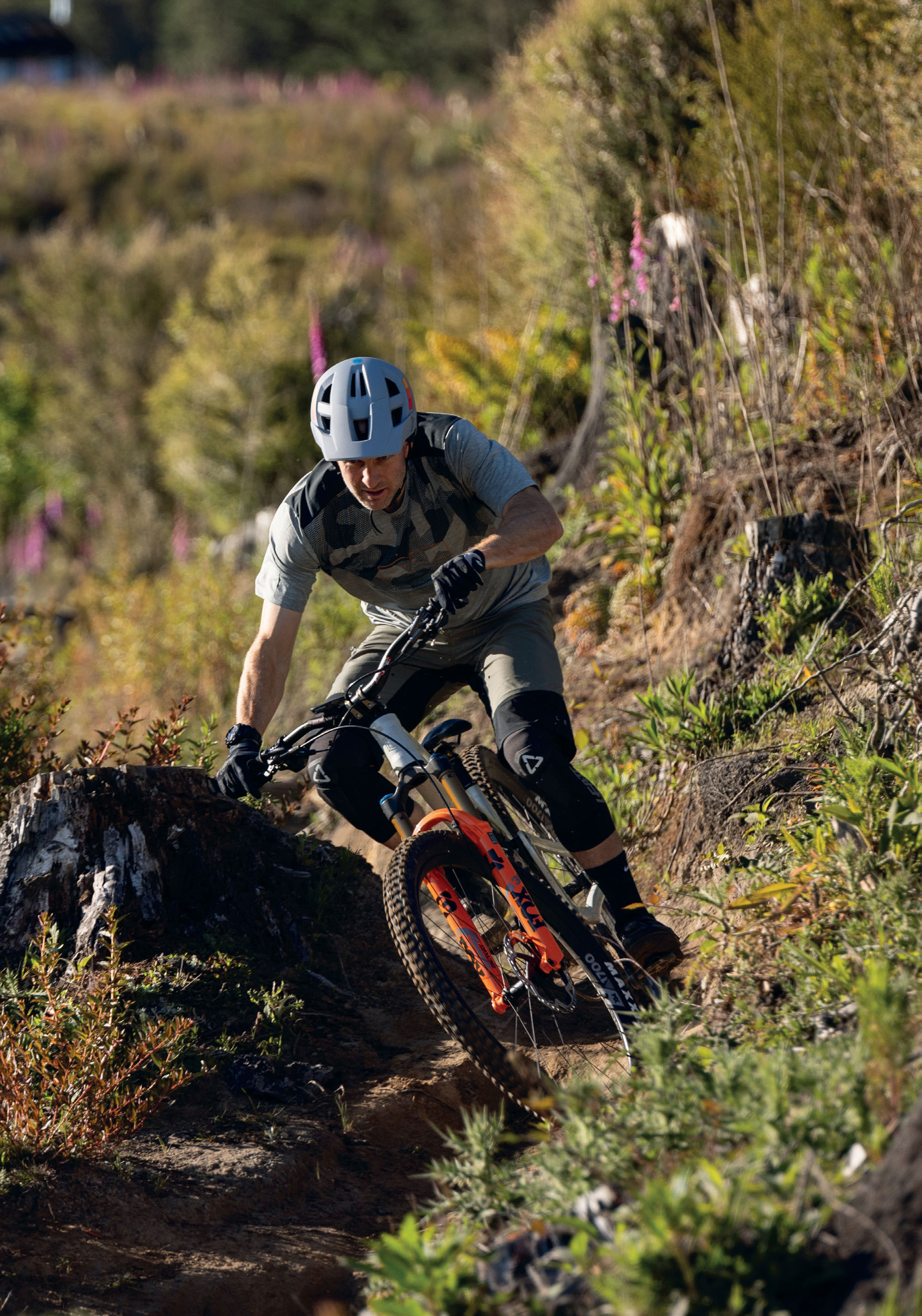
The Tempo is stable at speed, although the nature of its shorter travel means it’s not as planted as the Meta V5 or other similar Enduro bikes, and needs more brains and less brawn to deal with rough terrain. Aboard a bigger bike, one could essentially point and shoot, standing on the pedals and having the bike do all the work—the Tempo isn’t that sort of bike…. it’s true that you can’t have your cake and eat it too.
The 125mm of suspension is enough—until it isn’t. Over my three-month stint with the Tempo, there were a few times I came into a rough section a bit hot and really had to keep my wits about me as I used every millimetre of the travel, then relied on strength, skill and (possibly more so in my case) luck, to keep the ship upright. These situations were few and far between, but it’s worth keeping in mind that there’s not the safety net that a full enduro bike would offer. Although that’s not what anyone riding this bike would be after anyway.
I like a big day in the saddle, under my own steam, and I don’t like to feel like my fun is hampered by my choice of bike – regardless of whether I’m headed up or downhill. Living in the Waikato, the majority of my riding (all within a couple of hours’ drive) is on trails tending more towards the mellow end of the spectrum. Lots of digger-built trails and not so many gnarly, steep, rocky, “heck, I hope I can make this” sort of trails—unless I’m away in Nelson or Queenstown, which is once or twice a year, if I’m lucky. With this in mind, I’ve settled on the fact that a bike like the Tempo is realistically all I need: the ability to cover a decent amount of ground, climb effectively up hills, and be able to bomb back down whatever trail I choose without feeling like I’m being held back by inactive suspension or pucker-inducing handling.
Although I didn’t need to faff with the linkage at all, if I needed to—due to the layout of the VCS linkage and pivots—accessing the bottom shock bolt or pivot bolts can be a bit niggly; needing to remove some pivot bolts to access others. Not impossible, just time-consuming. If something in the back end comes loose while out on the trail, you’ll be holding up your riding buddies for a few minutes while you get it sorted.
The internal headset cable routing is the most polarising feature of the Tempo. Cables for the rear derailleur, dropper post and rear brake all squeeze their way through the headset top cap and down through the top bearing. There’s a bit going on up front. I’m yet to have a review bike long enough to need to replace a headset bearing and, if I had, I’m sure I’d do myself the favour of taking it to a bike shop with a mechanic who has far more patience than I do to complete the procedure. It’s fair to say that simply cracking the headset open, cleaning everything, popping off the bearing seal and re-lubing it once a month or so (depending on riding conditions) would drastically increase its lifespan. Spending 15 minutes doing this periodically is easier than a bearing replacement, which could take upwards of an hour.
Final thoughts
It’s taken some time for manufacturers to get little bikes ‘right’, but it seems they’re finally getting them dialled, bringing a shift in the mountain bike market as people realise a bike with “just” 125mm travel can handle everything they throw at it. Depending on where people ride, they probably don’t need a big travel bike as their daily rig. I’m now one of these people, and I’ve had an absolute blast riding the Tempo over the summer. I still have questions about headset routing and pivot bearing servicing over a longer term and through a winter of riding but, so far, I’m grinning.



